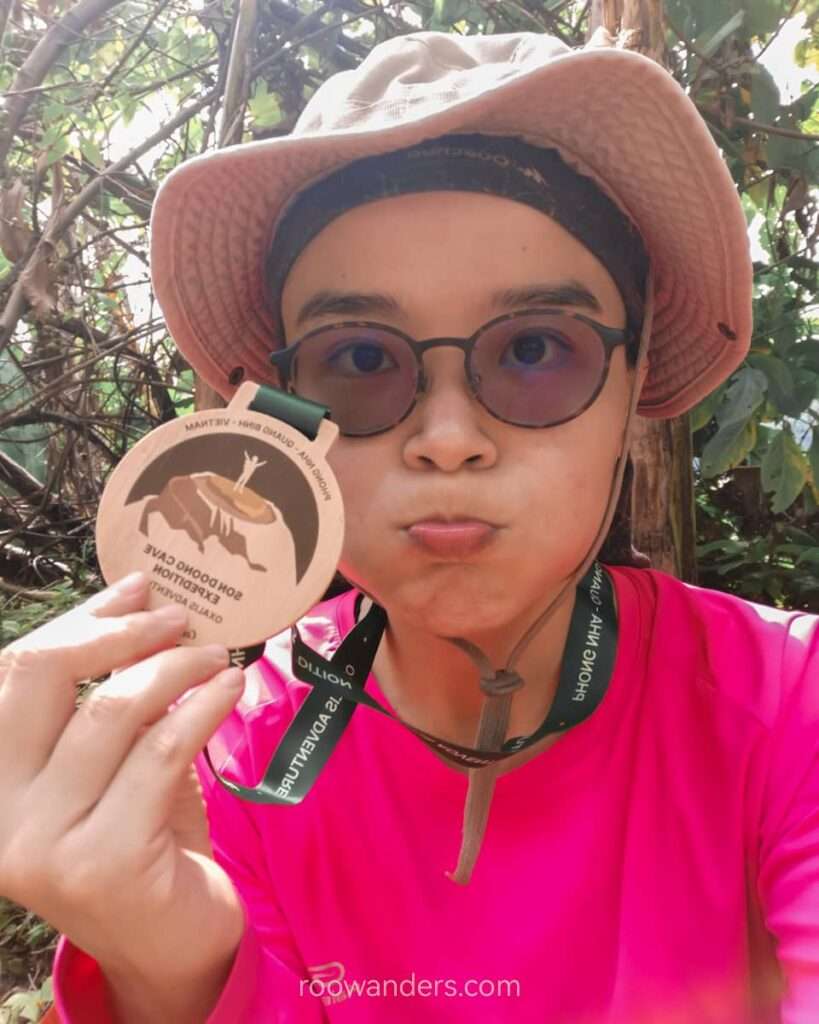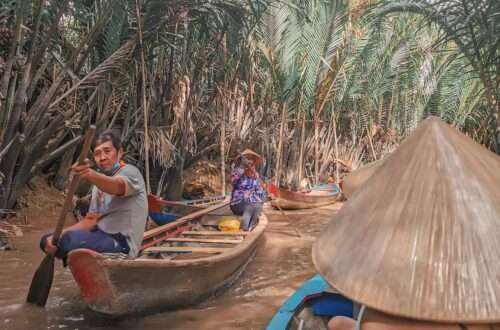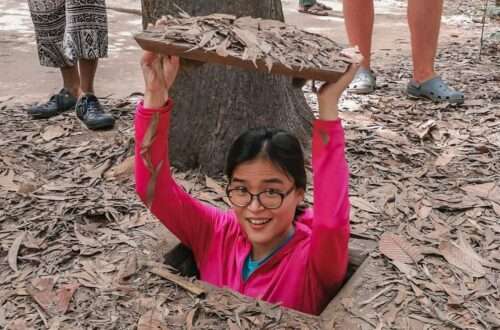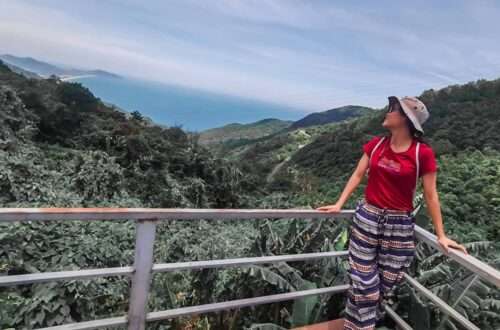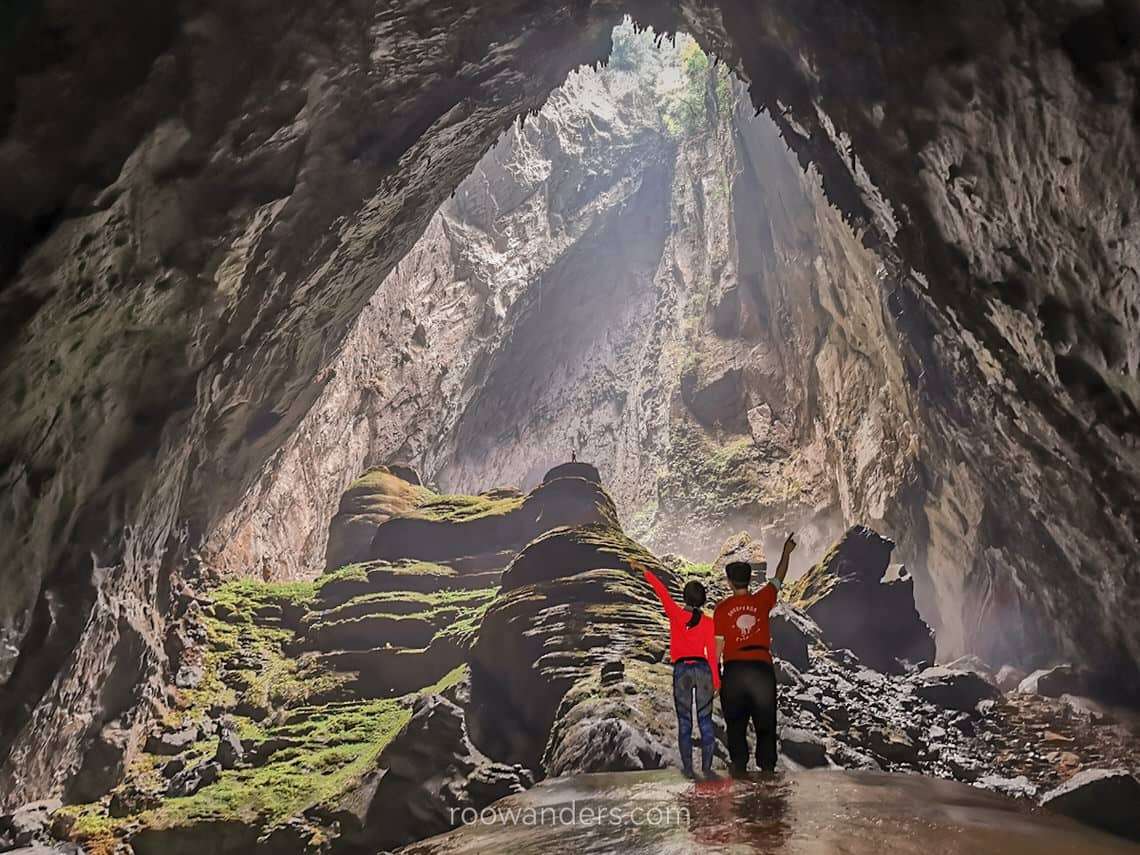
Hang Son Doong: The World’s Largest Cave
Hang Son Doong, the world’s biggest cave, has an equally extravagant price to match. It wasn’t easy for me to shed US$3000++ and all the charges for less than a week in the cave.
But even before the deal was sealed, I knew I had to visit Hang Son Doong – the massive Mulu cave systems of Borneo I explored in July 2022, on top of my previous two caving trips in Waitomo of New Zealand and Lumiang Sumaguing of Philippines, further sparked my curiosity to investigate the world’s biggest cave in Vietnam.
Some of my internal dialogues: 1) You mean this cave cavity in Deer Cave at Mulu National Park isn’t the biggest? 2) Money can earn back one. 3) The number of people who have visited Everest is more than those who have been to Hang Son Doong. 4) US$3000 has been around since a decade ago when they first started, who knows when they’ll increase the price! 5) What if there’s a freak natural disaster from climate change, and the cave is no more?!
Sarawak and central Vietnam are rich in limestones perfect for caves. Meanwhile, I am stationed in Singapore, a mere one to three hours flight from both destinations on a budget airline. They’re easier to reach than some smaller caves on the other side of the world, so what’s stopping me from visiting them?
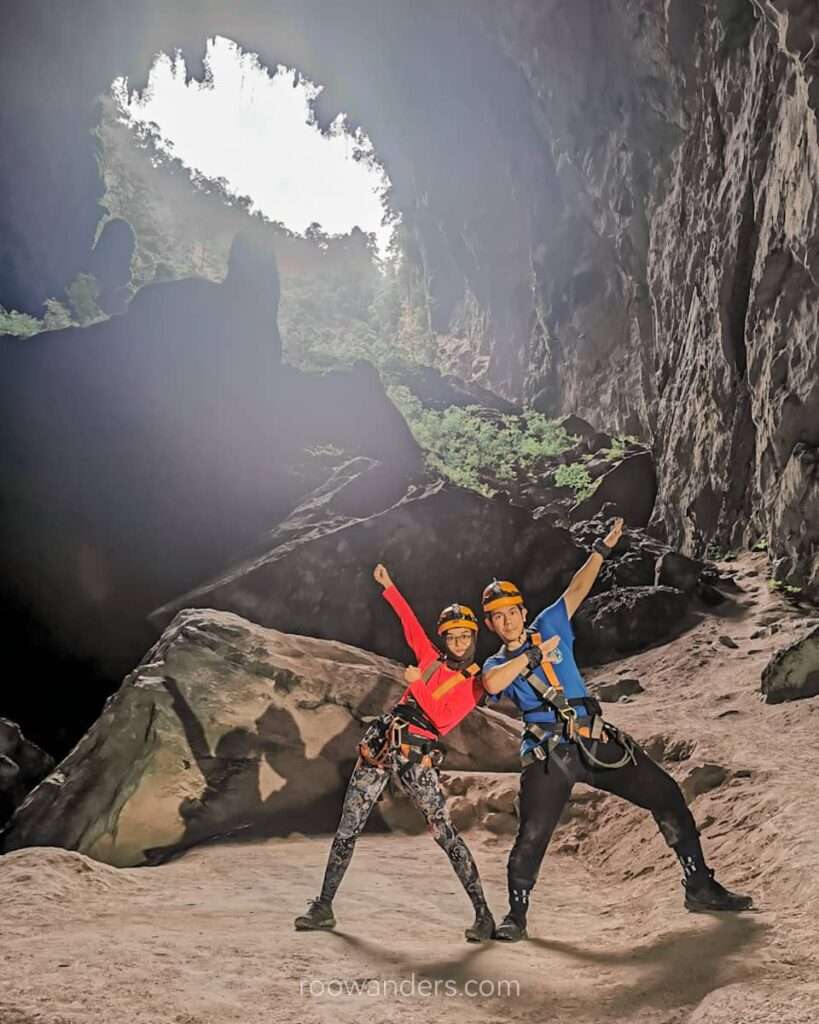
I visited Hang Son Doong in Aug 2023. This post may be updated periodically. Post also contains affiliate links that cost nothing to you but support my blog. As an Amazon Associate, I earn from qualifying purchases. Cheers!
Why You Should Visit Hang Son Doong
How many caves are open to civilian noob-cakes with no caving certs or experience to wander in? Plenty, but with loads of manicured boardwalks and artificial lighting that would have altered the landscapes and scared the cave critters away.
As with my Mulu and Miri cave trips, the less touristy Gua Niah or Niah Cave gave us a much better cave experience than the world-renowned Deer, Lang, Wind, or Clearwater Caves. We had proper trails to follow, sharing with only a handful of visitors, so we got to walk in darkness with our headtorch, smell and hear the bats in the biggest chamber, and see lots of strange insects.
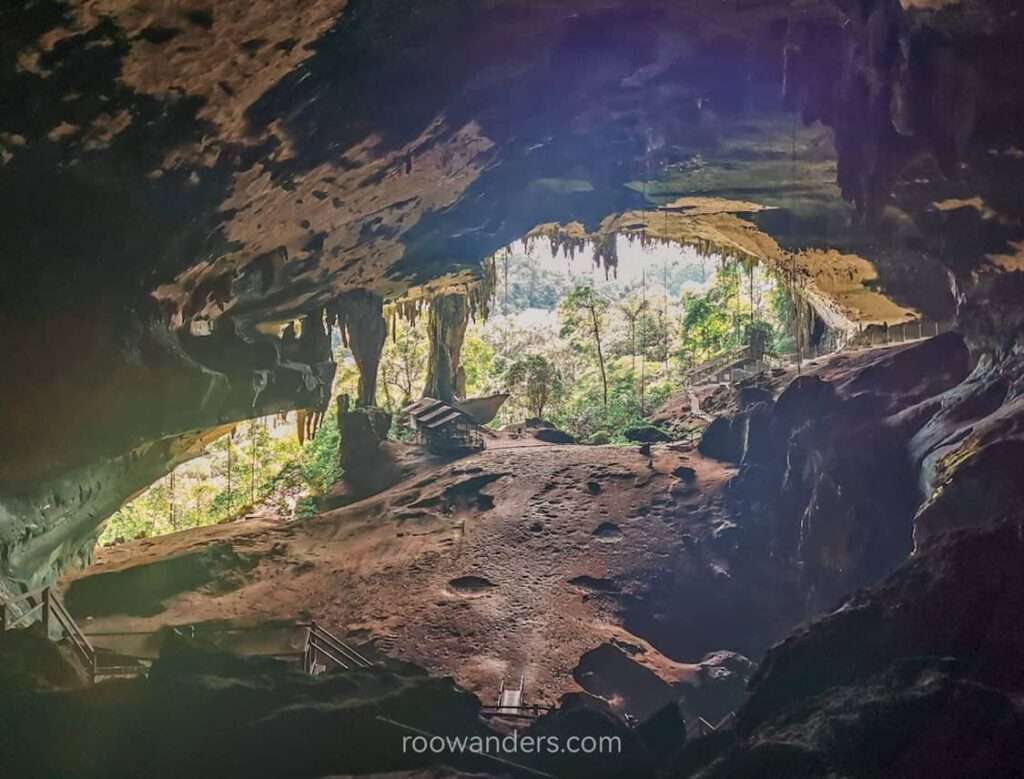
Of course, this pales in comparison to Hang Son Doong, which:
- Opens to max 10 guests per trip. Less people, less noise, less artificial safety structures, more beautiful views.
- Max 1000 guests per year. Less destruction from aliens (us).
- Min 18 years old to participate. No crying or naughty children scooting off or breaking stuff.
- Two jungles and an entire ecosystem in the cave. I’m not sure if there are other caves that visitors can visit with jungles in their dolines.
- Quick changing mist and clouds condition in the cave. It was surreal watching the mist escape from the entrance, exit and dolines of Hang Son Doong.
- Formations that are hard to grasp in their entirety unless you’re there. Cue the Wedding Cake, the Hand of Dog and the view of Doline 1 from the lunch spot.
It’s secluded by the price and restricted by the pax, so you’d get unobstructed great views and undivided attention from the crew in the biggest cave with million-year-old gigantic formations throughout the expedition.
Also, we’re living amid dire weather conditions brought about by climate change. The cave has an underground river system that floods from Sep to Dec. Typhoons and floods terrorise the National Park and Phong Nha every year. So who knows what the future holds?
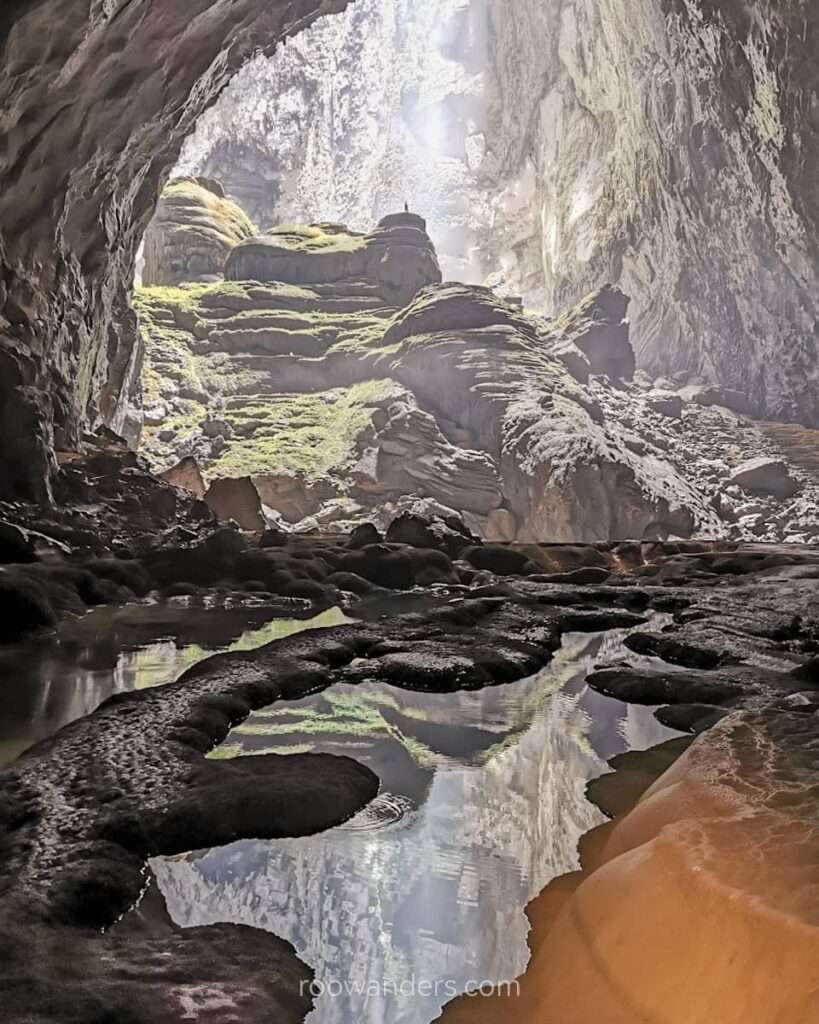
The Name
Hang means Cave, Son means Mountain, and Doong has two explanations. It is the valley where the ethnic minority Bru Van Kieu lives and also refers to the cave with an underground river.
In short, Hang Son Doong refers to the cave in a mountain where a river flows.
In Mandarin, Doong sounds like 洞 Dòng or hole. Cave in Mandarin could be called 山洞 Shān Dòng. So there was a period when I mistook the name for Hang Cave since Hang Son Doong sounds like Han Shān Dòng.
But it isn’t just me. The Mandarin name for Hang Son Doong is either a literal 韓松洞 Hán Sōng Dòng, which is meaningless, or 山水洞 Shān Shuǐ Dòng, which means Mountain Water Cave. 山水洞 sounds poetic and follows the origin better, but sounds nothing like the Vietnamese name.
Size Comparison
Son Doong Cave is nearly 9 km long and 38.5 x 10^6 m3 in size.
To put things into perspective:
- An Olympic-sized swimming pool is about 2500 m3. 15,400 pools can fit in the cave.
- The cave is 5 times bigger than Deer Cave in Sarawak, Malaysia.
- It is home to the tallest stalagmite (80m).
- The tallest measurable height is 200 m. The height of Marina Bay Sands is 200 m.
- The widest space measured is 160 m. The biggest commercial airliner Airbus A380 has a wingspan of 79.8 m.
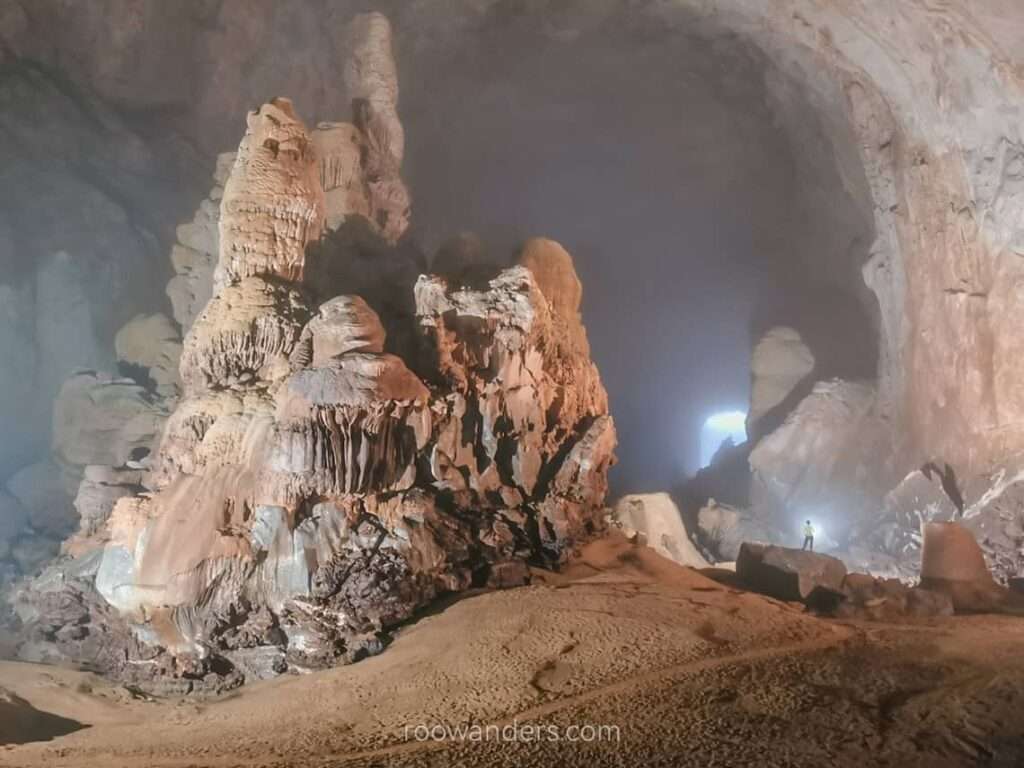
The Man Who Found It
Hang Son Doong is unusual, but so is the story that led to its discovery!
The cave exists before we do in the deep jungle of Phong Nha. Back then, Phong Nha was a poor village where livelihood revolved around farming, logging and hunting. Village men often combed the deep forest for the extremely rare and treasured Agarwood, known as the King of Incense, which produces Oud oil worth more than gold!
Illegal logging continued despite the forest’s establishment as a protected Phong Nha-Ke Bang National Park.
Here enters Ho Khanh. The man is like others in search of the Agarwood. Unlike others, he also holds an interest towards caves. Ho Khanh happened to stumble into the entrance of Hang Son Doong one stormy day in 1990. Visions of clouds and cold air floating out of the entrance, coupled with the rumbling sounds of water, spooked him so much that they left an indelible impression.
Decades later, cave explorers from Britain visited Phong Nha in search of more caves. Ho Khanh related what he saw to the team, but they could not locate the entrance from the dense jungle.
Despite the expedition’s futility, Ho Khanh was determined to find the cave entrance. He funded his own trip and traced the route he took in 1990, eventually finding the entrance leading to Hang Son Doong.
The British team returned a year later in 2009. With the aid of laser measuring devices, the team found the cave to be five times bigger than the biggest cave in the world.
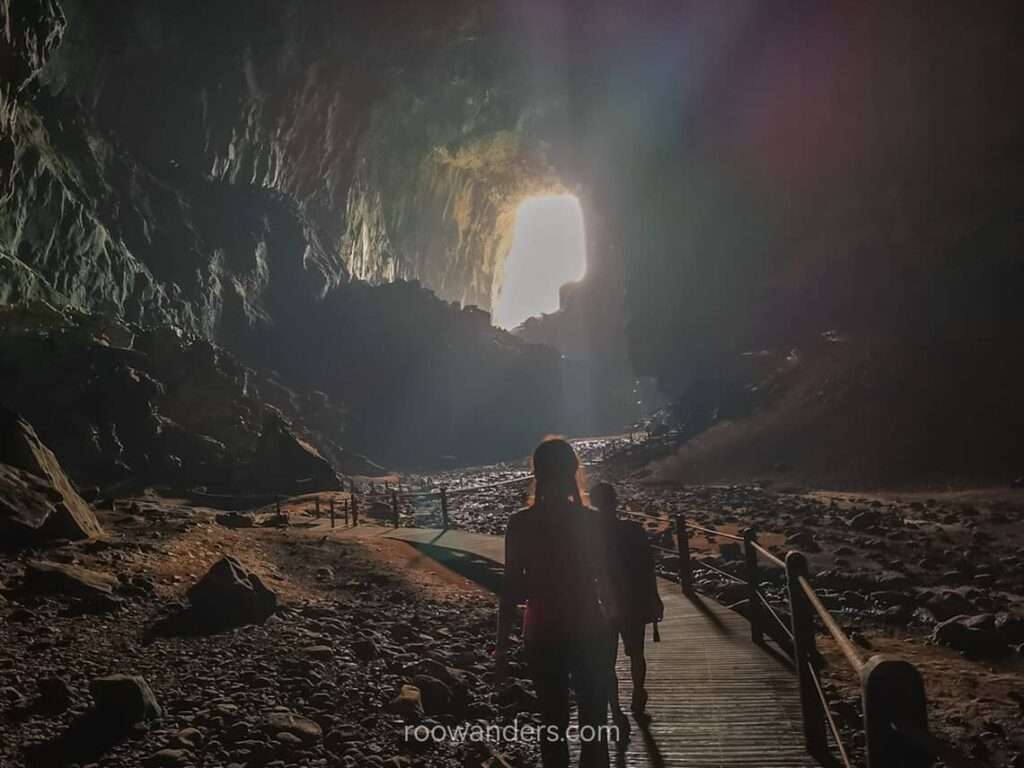
Hang Son Doong is one of the many caves Ho Khanh found, and it is no fluke that he happened to chance upon the biggest. Before his fame, Ho Khanh had already stumbled into 30 other odd entrances of caves, including the beautiful Hang Va in 1992.
Why Is It So Expensive?
This question gets asked a lot and was one of our dinner conversations in the cave.
Why is visiting Hang Son Doong so expensive?
- Son Doong Cave is a big cave. Caves are dark with uneven slippery boulders and sharp rocks. One misstep could be dreadful. I had my spookiest and most dangerous cave experience in Lumiang-Sumaguing of the Philippines, and safety is really important! Lots of investment went into managing the safety of the guests, who oftentimes are not caving professionals.
- The 10 guests are supported by a team of 27 – 1 cave specialist, 1 lead guide, 5 assistant guides, 1 porter team lead, 17 porters, and 2 chefs. Food, water, camping needs and caving gear are carried in. Human waste is carried out. I saw the men carrying gas tanks for cooking too! Each porter could carry up to 100 kg (that’s what one of them said!).
- The guides need to receive proper training from renowned cave specialists frequently.
- A part of the three grand goes to cave conservation.
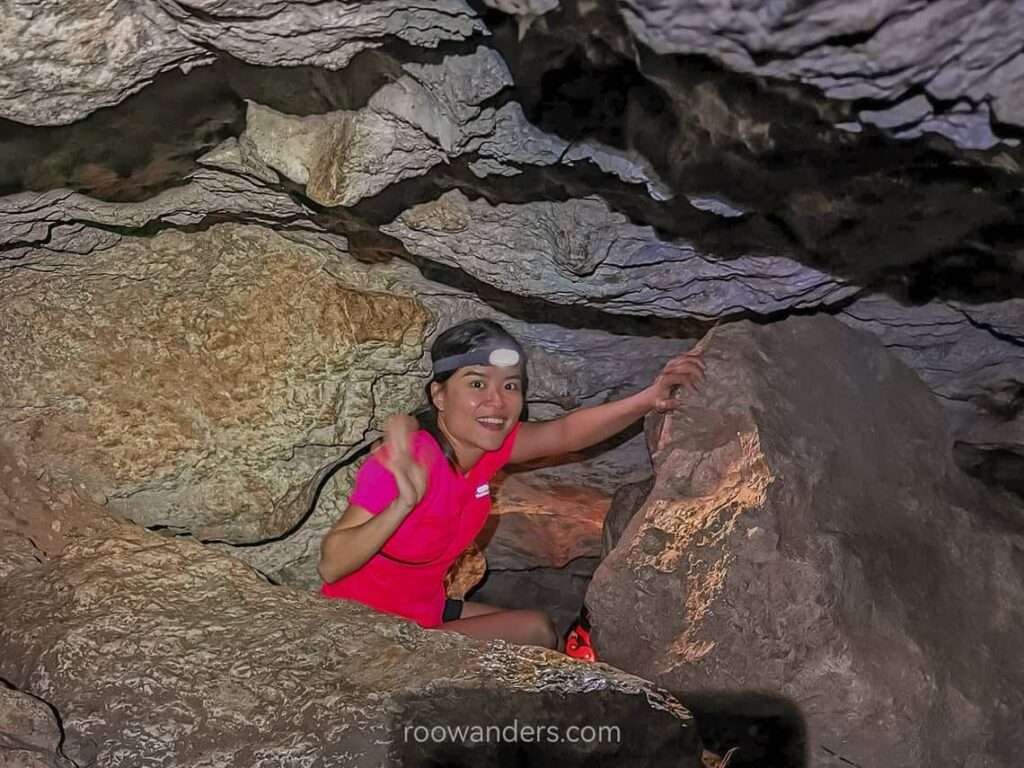
My Hang Son Doong expedition feels more glamp than camp. And I could safely rank it the top glamp trip compared to my other multi-day treks to places like Semeru, Ladakh or Nepal.
We had fresh delicious food prepared for every meal – so much so that the food outside of the camp became less tasty! We always ended up eating more than our daily output.
In light of output, we carried the bare minimum, with most of our load (max 7 kg per pax) going to the porters. So the calories you’ll burn would mostly come from fretting over where to place your foot or pulling the rope up some slippery slope.
The guide assistants to guests ratio of 1:2 meant there’s always one of them around us for help – pinpointing the spots to step or grab, or giving me an arm and subsequently pulling me up as well.
Pre Hang Son Doong To-Dos
Here are some tips to save and plan for your trip. While I did mention my trip being more glamp than camp, a certain level of fitness is still required, or it would be a torturous trip for you instead!
Saving Up for the Cave Expedition
To start saving, estimate when you will be going (at least two years in advance!) and set aside an amount every month in a savings account or, if you’re in Singapore, high-interest plans with robo advisors like Syfe or Stashaway.
I’ve been using Stashaway to keep my funds for some time now, and their current rate of up to 5% is attractive. Otherwise, you could chuck some money and start saving with Syfe too! Both links are affiliated with me – I get to earn some benefits/ coffee money, and you get to keep yours too (so do me a favour :P).
Reservation, Payment, and Follow-Ups for the Trip
I booked my trip to Hang Son Doong exactly one year in advance, a week or two after returning from Mulu National Park. Hang Son Soong is only open for expeditions from Jan to Aug. Torrential rain, and heavy floods for the remaining four months make venturing into the cave extremely dangerous. More about the weather in the later section.
By the time I made up my mind in late-Aug/ early-Sep 2022, the earliest slots left were in June 2023. It was booked solid from Jan – May 2023, and even for June, there were 1 – 2 vacancies left per trip.
My partner and I decided on August 2023, which happened to coincide with a public holiday in Singapore (National Day).
Booking and the follow-ups were straightforward:
- We filled our info under the BOOK NOW page in Oxalis (the only company doing Hang Son Doong).
- A generic email indicating our booking code arrived within three days.
- Another email from their Adventure Consultant with more info regarding the tour policies, payment terms and bank details came around the same time.
- Once payment was made, we received another email titled ‘Booking Confirmation and Preparation Guide for Son Doong Expedition Tour’. This email contains info and helpful links on:
- Packing List
- Physical Preparation List
- A brief overview of the schedule (also a request for you to inform them about your pickup point and time)
- Insurance
- Other useful info like shoes to wear and clothes to bring
- Special Mentions, like no drones, no wifi
- A month before our trip, the Adventure Consultant sent an exact email as point (4). By then we had already informed them about our arrival.
- A week before our trip, we received another system-generated email repeating details like check the weather, check your fitness and check the items to bring.
- Two weeks after our trip, we received another email from the Adventure Consultant with the contact details of our two lead guides, links to Oxalis social, and a link to a feedback form.
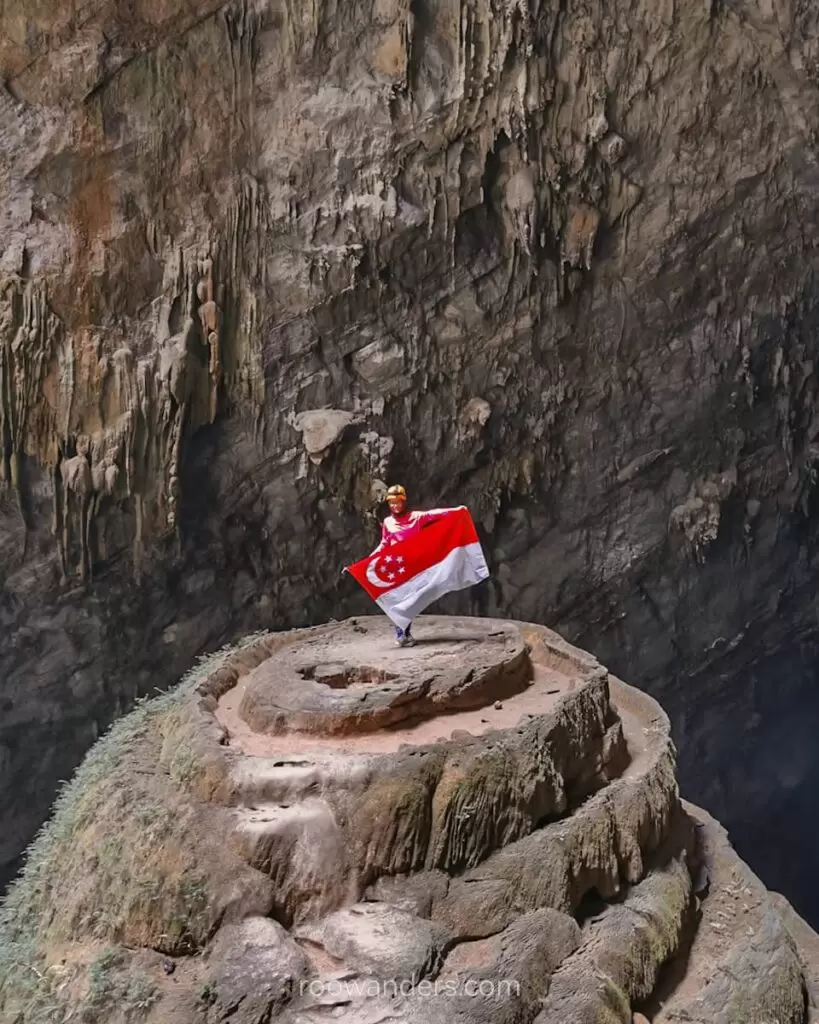
Choosing the Time to Visit
Depending on the time you would like to visit, different weather condition follows:
Jan – Mar. A chilly expedition (below 20 dC) and jackets may be needed. I don’t think anyone would appreciate the cold underground river swim. You get stronger and longer sunbeams illuminating into the deeper recesses of the cave.
Apr – May. Nice and warm. But this period is also a slash-and-burn season in neighbouring Laos, so there may be haze depending on the wind direction.
Jun – Aug. Slightly warmer and more humid. But the underground river soak was excellent at 16 dC. For others coming from a dry and cold country, the climate might be unbearable. Hailing from Singapore, I find the humidity and temperature somewhat similar. But walking unshaded under the hot sun before reaching Hang En can be agonising.
Working Out for Son Doong Adventure
You must be in shape to be ready for the expedition! Or be prepared to suffer, or even risk not going at all.
Oxalis has a checklist for physical activities that participants should minimally achieve as a reassurance of their fitness level (gleaned from their checklist):
- Training at least 6 months in advance
- Walk comfortably 10 kilometres/ 6 miles with at least one hill of 300-400 m/ 900-1200 ft
- Walk confidently over rough ground, and be able to scramble up and down rocks and boulders
- Do at least 6 training hikes (10 km/ 6 miles with at least one large hill) within the 3 months leading up to the tour departure with the shoes and backpack you plan on wearing to the caves.
They also suggest supplementary activities like Spartan race, rock climbing, yoga, and home exercises like squats, burpees and stairs. Basically, activities that stimulate the muscles needed in the cave.
There’s a statement somewhere in the email or their website that indicates assessing the physical fitness of their participants on the first day. The hike to Hang En, the third largest cave in the world, is marketed as a short overnight trip under Oxalis with mostly forest tramping and river wading and very few caving activities. It’s easy to get back to civilization compared to when you’re deep in Hang Son Doong. If you can’t complete Day 1 with ease, you are really not fit for the entire trip.
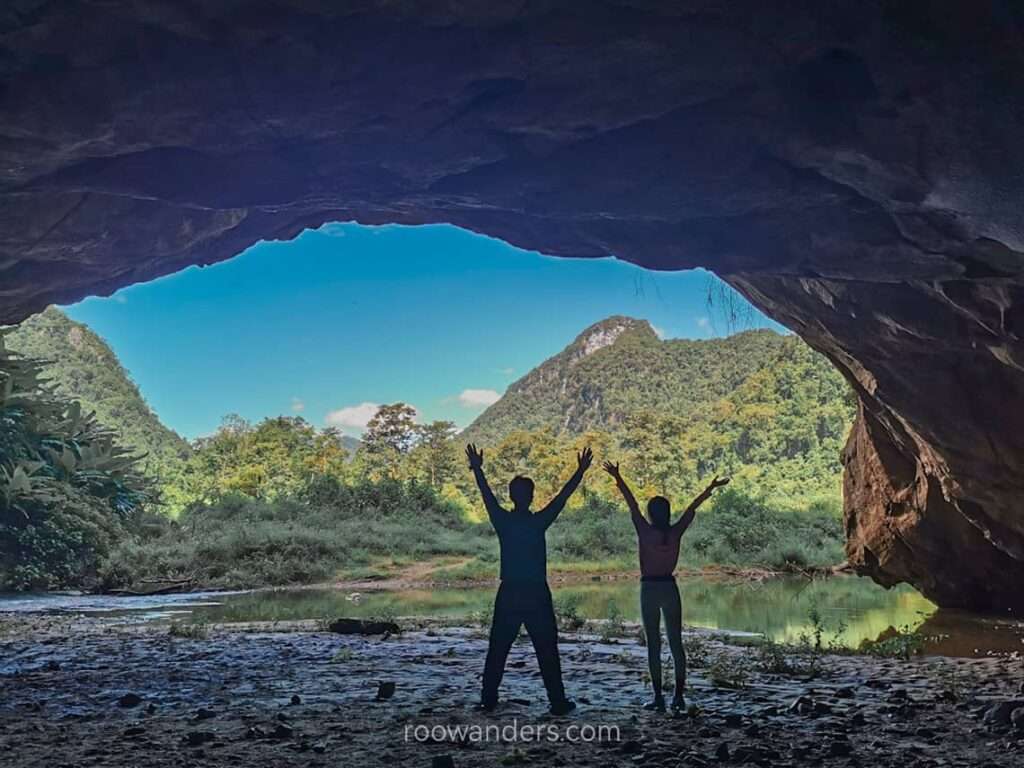
I’ve always been an active person doing most of what they’ve already mentioned, so the expedition wasn’t as tough as they’ve primed me to expect. Stuck in Singapore? Do the MacRitchie BTNR Trail then!
What to Bring for Hang Son Doong
What to Bring is the section I was most interested in before the expedition. Visiting Son Doong Cave is a once-in-a-lifetime kind of trip and you really want to be at your best. What kind of clothes should I prepare? How about the shoes? Should I get a better camera? Here’s all you got to know.
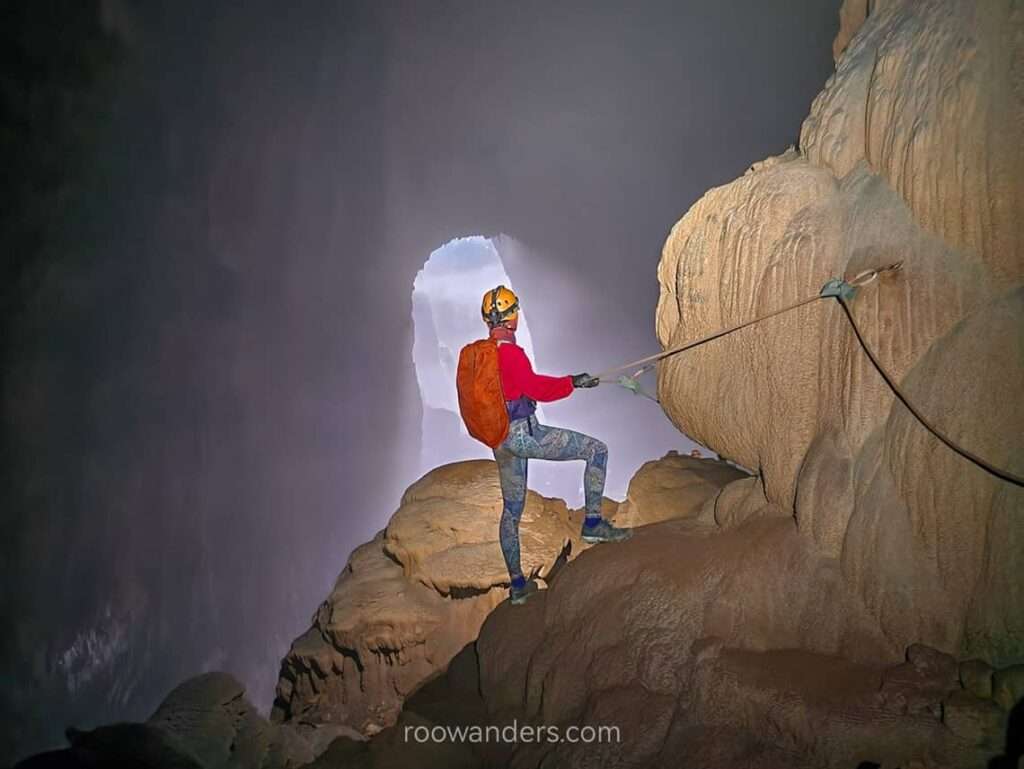
Oxalis’ Packing List on What They’ll Provide
- Use of 3 x 43,000 lumen LED filming lights → these were used for photos and in the campsite
- Camping gear: tent, sleeping mat, pillow and sleeping bag
- Caving & safety gear: caving helmet, caving headlight, harness and gloves
- Meals: All 6 days, except breakfast and lunch on D1, and lunch and dinner on D6
- Water filters (application by guide and porters)
- Basic camping facilities with eco-friendly compost toilet using western toilet seat
- First Aid Kit, Rescue Equipment & Satellite Phone (application by safety advisor and tour guides only)
- 1 Safety advisor (member of the British Vietnamese Caving Expedition)
- 1 Professional English-speaking tour guide, 5 safety assistants and 2 chefs
- Porter team to carry all gear and prepare all meals
- Accommodations (single or twin-shared) at Son Doong Bungalow before the tour and at Chay Lap Farmstay & Resort after the tour
- Round-trip transfer Dong Hoi – Phong Nha before and after the tour
Essentials I Brought for My August Summer Trip
Oxalis provided a packing list as well, which I have sort of incorporated into my list below:
- 3 sets of quick dry long sleeves. But bringing 4 different brightly coloured ones would be nice. Then you’ll have a variety of colours over the 4 days in the cave. Red, orange, yellow or neon would be ideal for beautiful photos.
- 4 sets of tights. I wore tights used for hiking and yoga.
- 2 pairs of socks (I wore darn tough). I bought another 2 pairs from Oxalis after learning about foot rot. Your feet would be wet throughout the expedition since the shoes are wet. Having a fresh pair of socks to begin the day felt wonderful. No need for fancy socks. Those mid-calf cotton ones would do.
- 2 bandana/ head wrap. Keep my hair contained. Also, prevent abrasion between my skin and the helmet strap.
- 4 sets of undergarments.
- 1 swimwear. For the fish spa at Hang En.
- 1 set of pyjamas/ camp wear. You could wear them for the next day, but I preferred not wearing long sleeves to sleep. Some participants wore short sleeves paired with arm sleeves.
- Sunhat, sunglasses, sunscreen and insect repellant. For the torturous heat on Day 1. There are big mozzies and hungry leeches!
- Lightweight outer shell. In case it rained on Day 1.
- 1 pair of jandals. I took my sturdy ones from Taiwan made for marathon running. Sandals with fabrics stay wet and icky.
- Headtorch. For camp use. The torch on the helmet is stuck to the helmet.
- GoPro. Gopro are small, nifty and waterproof. So easy to carry! I upgraded from 8, which I extensively used in New Zealand, to 11, and had mine strapped to the shoulder strap of my bag.
- Batteries, power bank, cables.
- Wet wipes, dry shampoo, biodegradable soap, prickly heat powder, etc. Those sanitary items. You can only use biodegradable soap at Hang En. There’s no washing area for the second and third nights, and this is where wet wipes come in handy.
- Sleeping bag liner. In case the sleeping bag is nasty like other camping trips I’ve done. But the sleeping bag provided was clean and smelled fresh.
- Earplugs. Very important if someone snores at night! Hang En is home to thousands of swiftlets. The incessant chirping might be a bane for some.
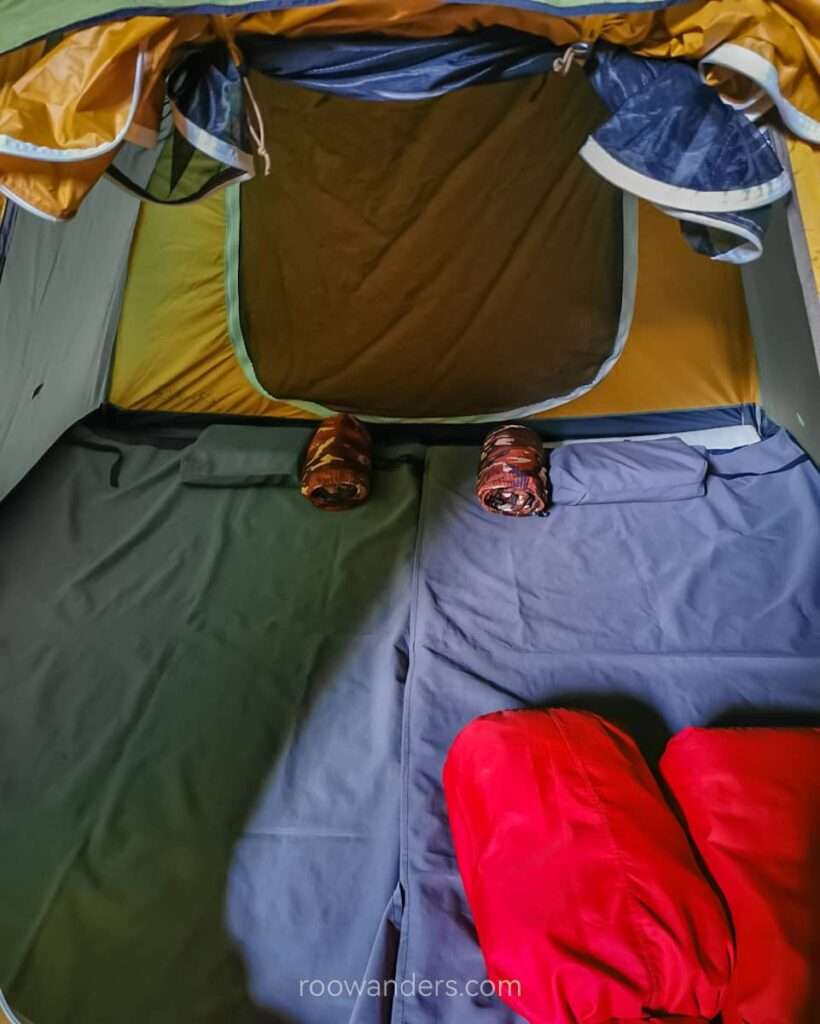
Special Mentions for Further Discussion
SHOES! I wore the amphibious quick-draining Merrell Choprock shoes that seem to be phasing out. Decathlon might have something similar. Oxalis has a list of shoes to recommend, focusing on Soloman and trail runners. You need shoes with grippy soles and drains well! Goretex or waterproof shoes are a big nono as they trap water. Oxalis checks your shoes during the briefing. If you fail to meet the expectations of the caving specialist, they’ll lend you a simple archless high-cut canvas one, which may not be comfortable.
The staff for our trip wore sandals. From what I’ve learnt, their sandals are not that comfortable but serve their purpose in preventing foot rot. These guys have to go on trips at least once every week with perpetual wet feet! A pair of sandals gets worn out after three to four months.
BAG! I’ve been carrying my beaten Gregory Juno 25 L for day hikes in Indonesia and Malaysia. It’s comfortable and fits what I need to carry for the day. As with the bags, the specialist will check if they are suitable for the expedition. It needs to fit the helmet and water!
SNACKS! No need for those. You’ll be well fed. Bring hydration salts!
FAN! For a hot summer expedition. Bring along a small portable electric one, or the Asian foldable fans that you can get from night markets.
DRONES! Not allowed!
FEMALE HYGIENE! I would expect the trip to be uncomfortable if you’re still on pads for a summer expedition. You’ll also be missing out on swimming in the underground river and soaking in Hang En. It may be icky too if the water level of some river crossings towards Hang En gets too high. Use a period cup. Simple, easy, and sustainable. Toilets are very clean and convenient for ladies on periods.
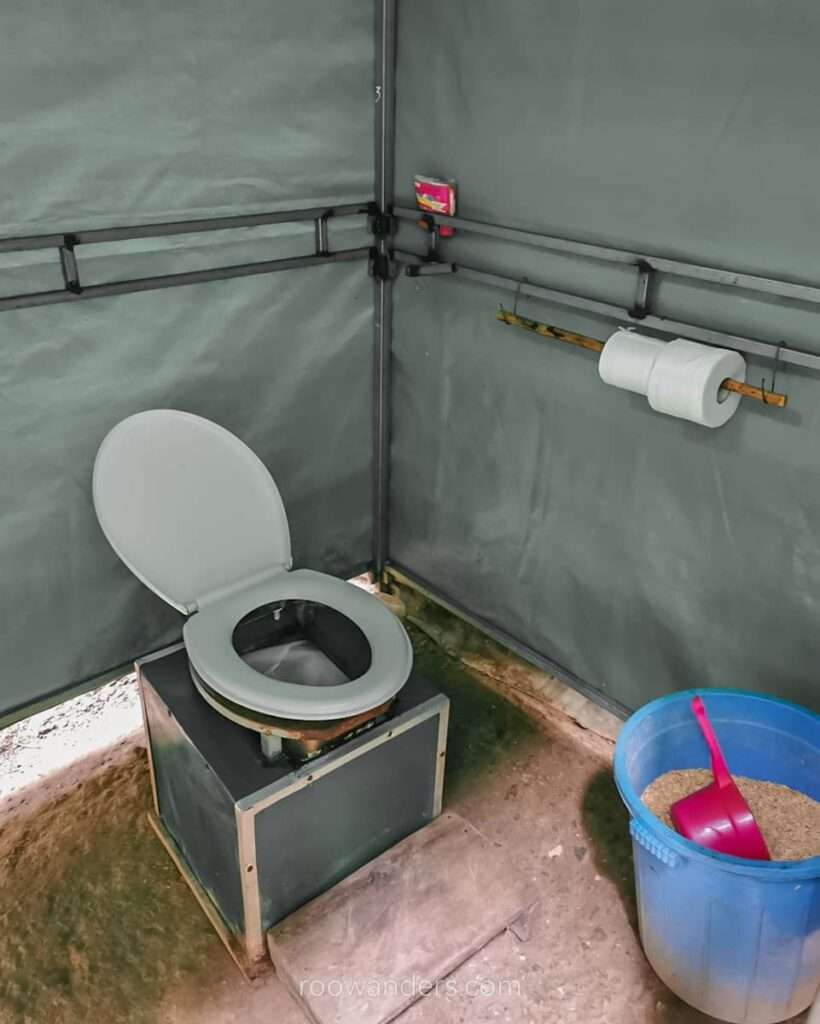
Oxalis sell shirts, socks and arm sleeves in case you need them. Proceeds go to the schools and conservation programs they support. They also lent us 1 L bottles. Each of us had one red dry bag to store our stuff, with a max weight of 7 kg. The red bag goes onto the porter team, and you’ll only see them at the campsites at the end of the day.
How to Get to Phong Nha
Transport between Dong Hoi and Phong Nha is provided in the tour package. To take advantage of that, you still need to find yourself in Dong Hoi, the nearest city to Phong Nha.
By Plane
Dong Hoi has a domestic airport. There are many flights to Dong Hoi from Ho Chi Minh City (1h 35 mins) or Hanoi (1h).
By Train
Train rides take about 11 hours from Hanoi to Dong Hoi and a day (24 hours) from Ho Chi Minh City. It makes far better sense to fly if you’re coming directly from HCMC unless you enjoy long train rides…
I took the night train from Hanoi to Dong Hoi to have a full day in Phong Nha. There are five different timings to choose from, and you have the option to pick a soft seat (not recommended for a night train!), a sleeper 4-berth, or a sleeper 6-berth.
The only way to buy directly from the Vietnamese booking site is if you have a local bank account. Else, purchase online from Baolau, or physically from the train station for budget options. You may, however, risk not getting what you want! Travel agencies quote a bit more.
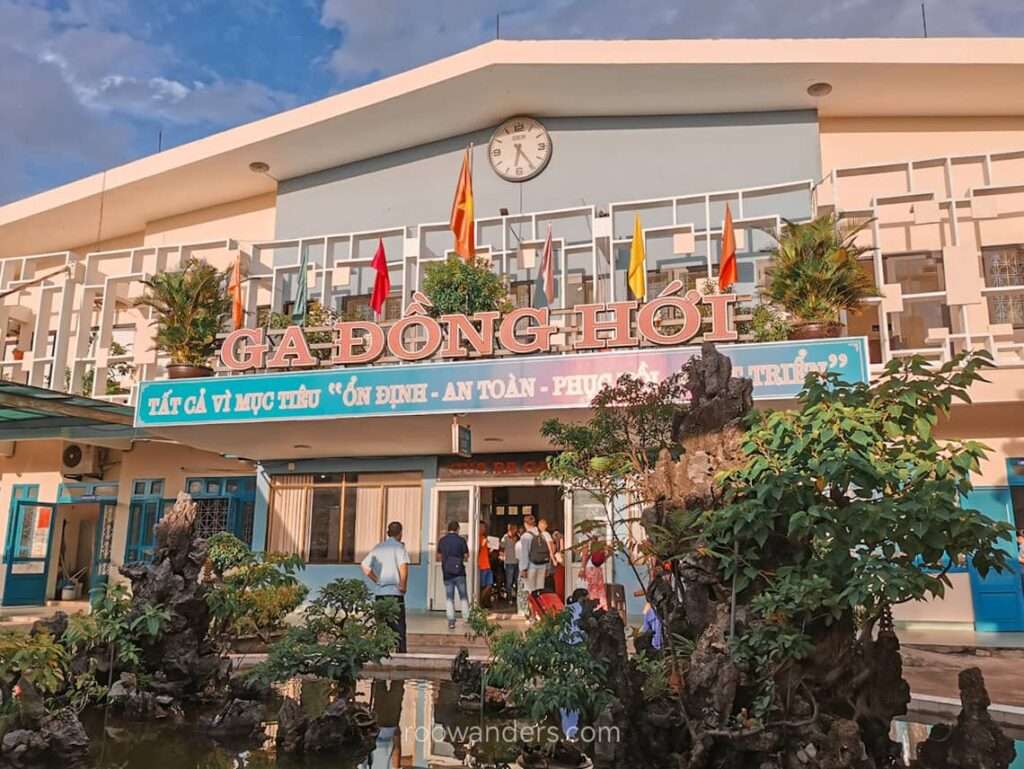
By Bus
For those looking forward to an overnight sleeper bus experience, book yours online through 12Go, or at your accommodations. Be warned that buses may reach your destination earlier than expected (middle of the night)!
My Trip
Finally, we reached the meat of the post. My expedition! Here’s a ✨detailed ✨ collection of my experience in Hang Son Doong.
The tour is marketed as 6 days, but only 4 days were spent in the caves.
Day 1: Dong Hoi to Phong Nha + Briefing
Transfer to Phong Nha
We reached Dong Hoi at 6 AM, and an assistant guide holding a card with my name written on it immediately ushered us to the car with a driver. The journey from Dong Hoi to Phong Nha took almost an hour. I was too tired to notice what was outside, but I did not miss the iconic Hollywood-style sign!
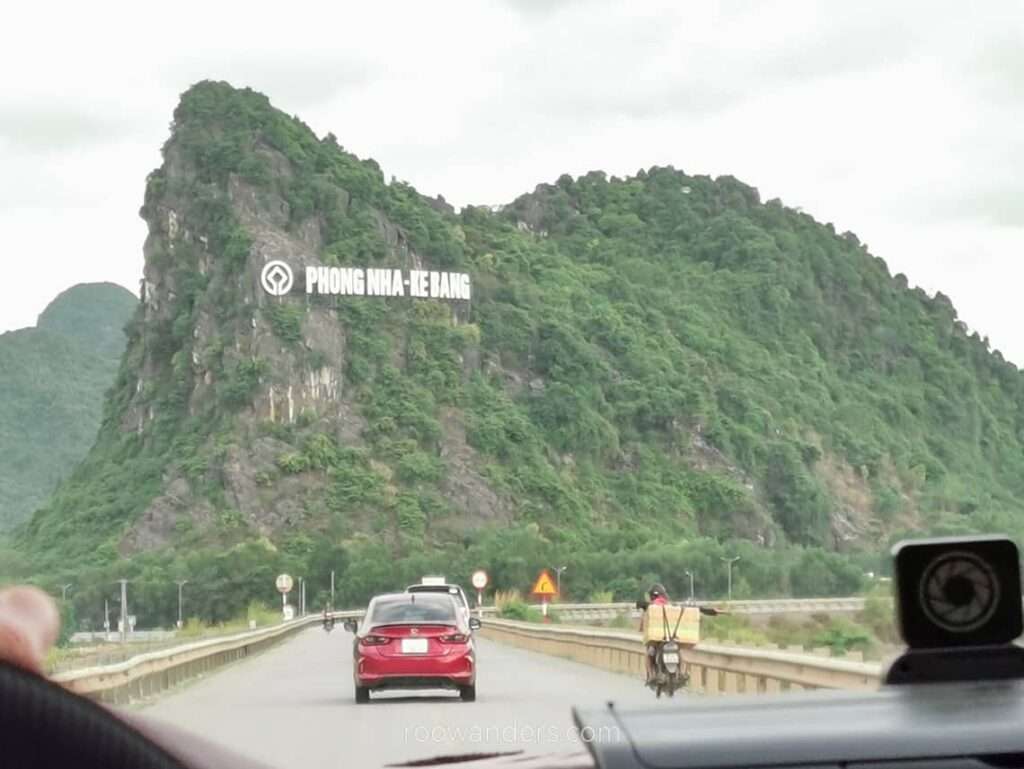
Check-in to Son Doong Bungalow + activities
Checking into our spacious room at Son Doong Bungalow was surprisingly quick. We got a room upon arrival at 7-ish AM! Rooms in this bungalow were named after caves in Phong Nha, and we happened to stay in Hang En. Our room had a double and a single bed, and free wifi, but no TV, which really isn’t needed anyway. There’s a pool by the rows of rooms.
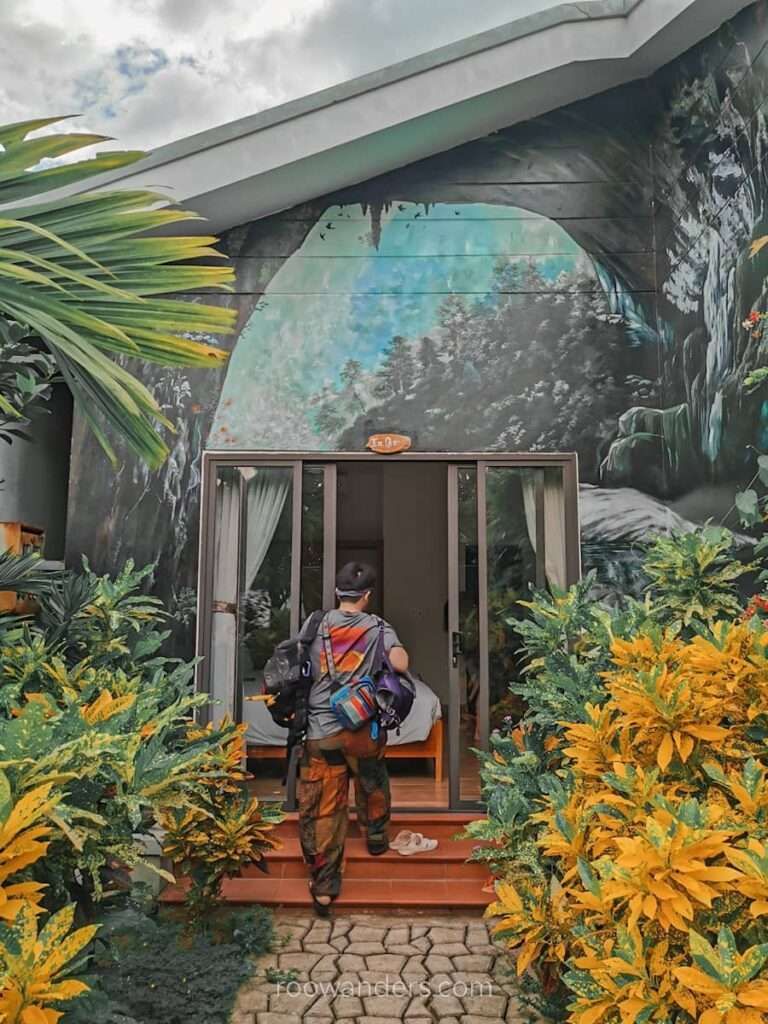
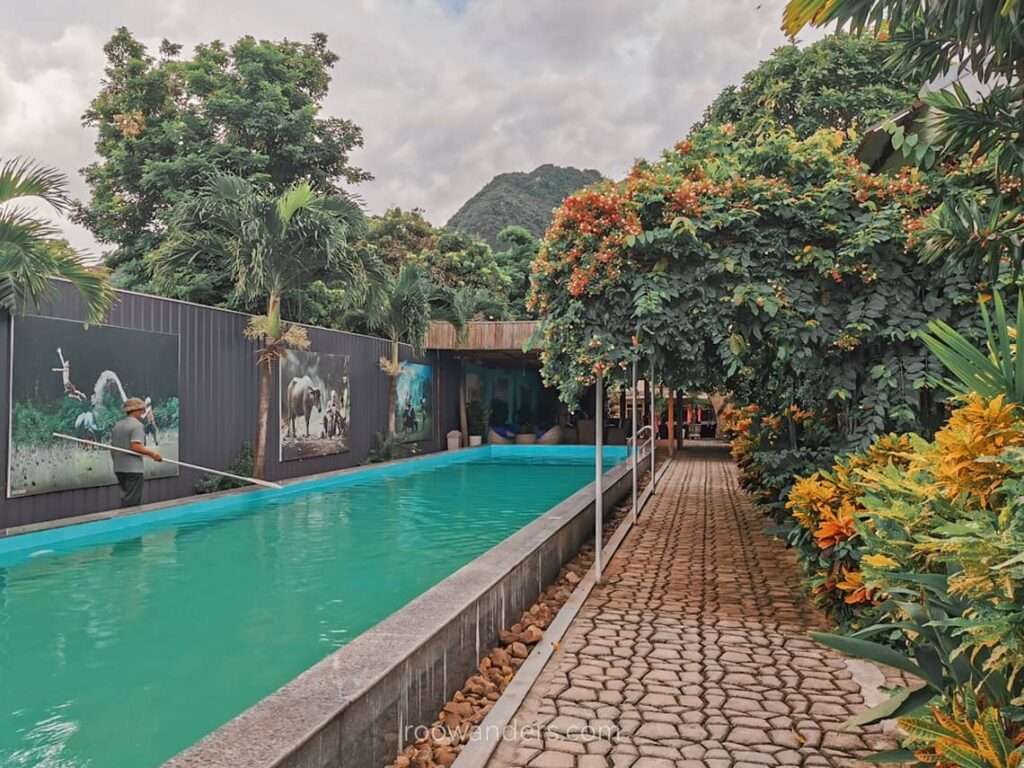
We had our breakfast (not included) and booked a full-day tour around Phong Nha within the hour with the bungalow. It was a day well spent.
Oxalis requires participants to be at Dong Hoi before 3 PM that day, and ready for the evening briefing by 5.30 PM. We received the red dry bags from the bungalow.
Briefing + Welcome Dinner
Participants on the same tour as ours met by the breakfast table at 5.30 PM, greeted by our lead guide, Vu. We were reminded to bring our bags and shoes and boarded a one-way bus to the Oxalis office.
Briefing and checks took almost an hour while we sipped on complimentary drinks. We went through slides reiterating information from the emails while hungry mozzies feasted (I got two bites that night!). What’s interesting for me were the photos of the foot rot and itchy plants. Then came the shoes and bag checks by cave specialist Deb, getting our helmets fitted, grabbing the water bottles from Oxalis, and buying extra shirts or socks.
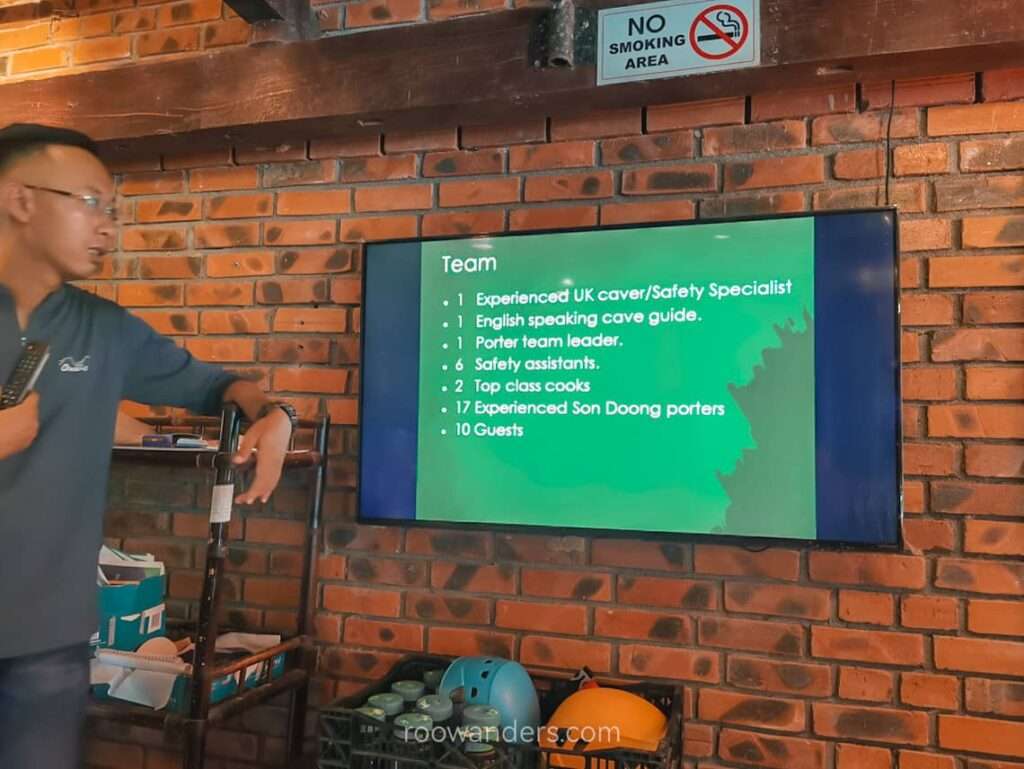
We had a delicious dinner with an assortment of side dishes paired with rice. Then more drinks, self-introductions, and getting eaten by mozzies, before we walked back to Son Doong Bungalow to rest and prepare for the trip.
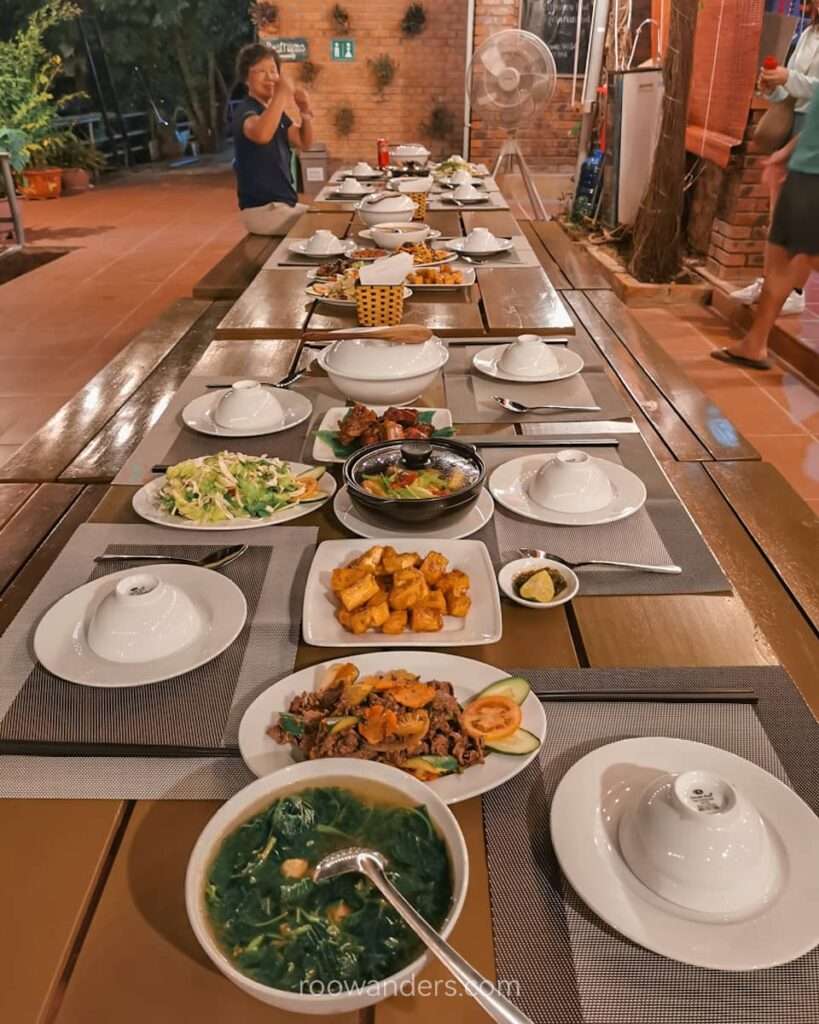
Day 2: Phong Nha to Hang En Campsite
Breakfast and Preparation
Wearing long sleeves, long tights, and long socks can never be comfortable in a warm and humid environment. Especially so as you indulge in a warm bowl of Pho Bo for breakfast again.
Bags not meant for the caves and red bags meant for the caves were marked and named with special stickers from the day before.
We promptly left at around 8.30 AM on another bus, but this time, with the guide assistants as well. Somewhere along the way to the trailhead, we got off at a bridge of Ho Chi Minh Highway West that overlooked one of the many streams supporting the underground river into Hang En and Hang Son Doong.
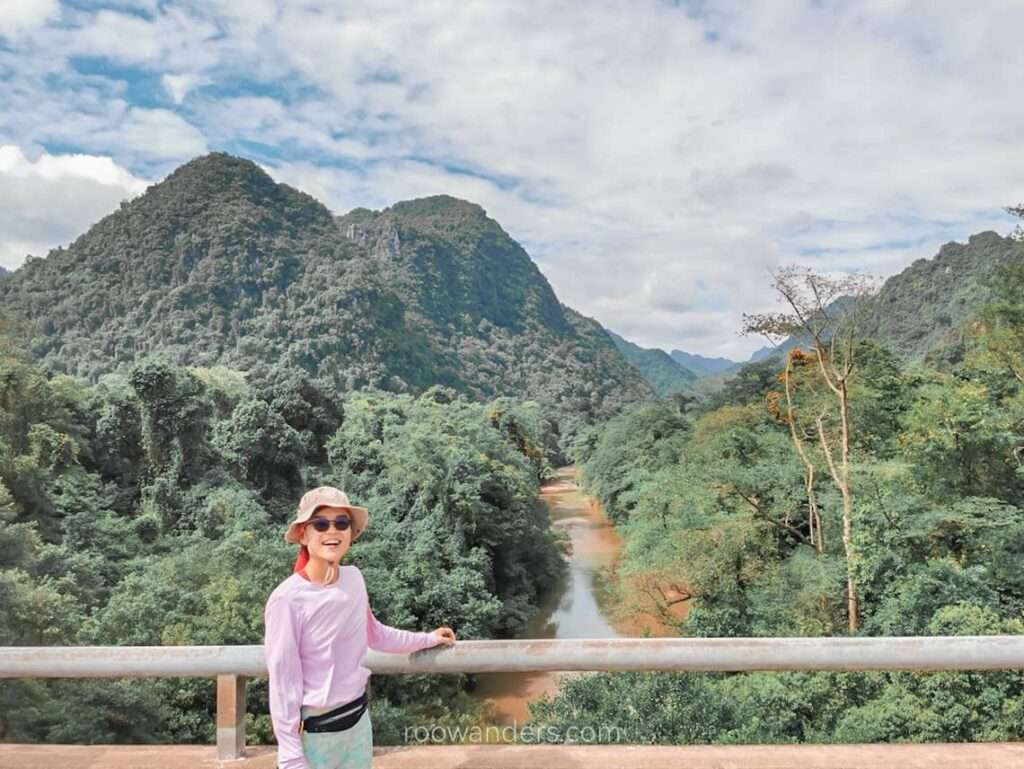
Trailhead to Village Lunch
An easy hour-plus downhill hike through a forest, followed by some minor river crossings for half an hour to Ban Doong village. As we inched closer to the village, we saw free-roaming oxen and lots of cow dung. We even had a family of them enjoying their soak in the river we had to cross. The assistant guides had to chase them away as these oxen may attack.
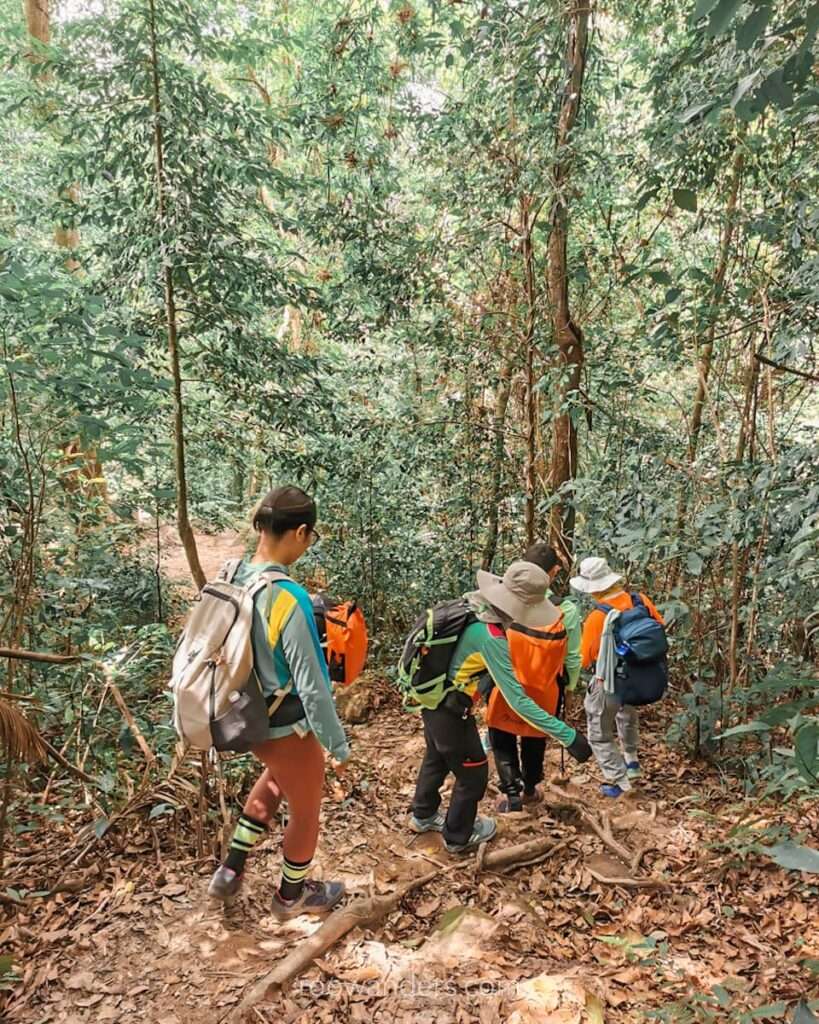
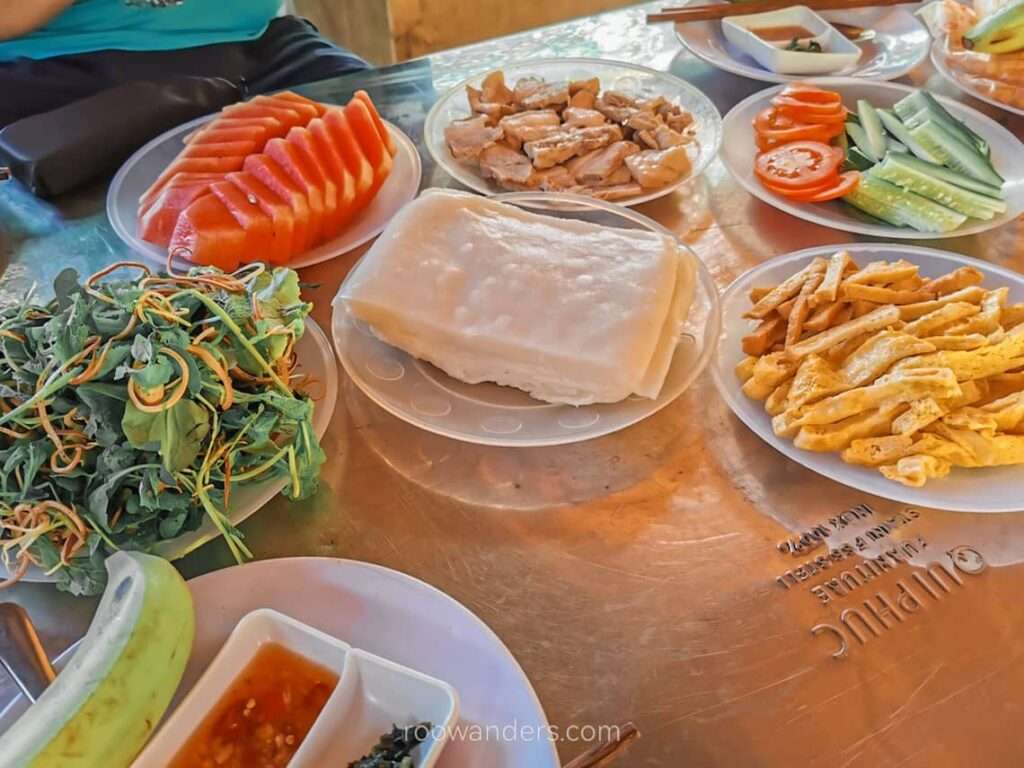
Lunch was underneath a shelter in the village, with a squat toilet some distance away from the spot. We had wet rice rolls paired with a variety of ingredients to be wrapped, watermelon and yoghurt.
The guide also pointed out a two-storey school that Oxalis helped build that can be a shelter for the villagers in times of bad weather. Compared to the old school that was destroyed by the 2020 flood, this new compound has accommodations for the teachers, which is a big advantage. Teachers usually hail from other areas and need places to stay. This new upgrade helps to retain and keep educators happy.
A Merciless Unshaded River Tramp to Hang En
This section was the most taxing walk for me in retrospect. We were under the sun for almost two hours. Wading through the lukewarm river was fine as water levels were mostly beneath the knees (it was summer!). But the heat and humidity can make one dizzy. The assistant guides filled up the bottles of some participants with river water filtered from powerful filters.
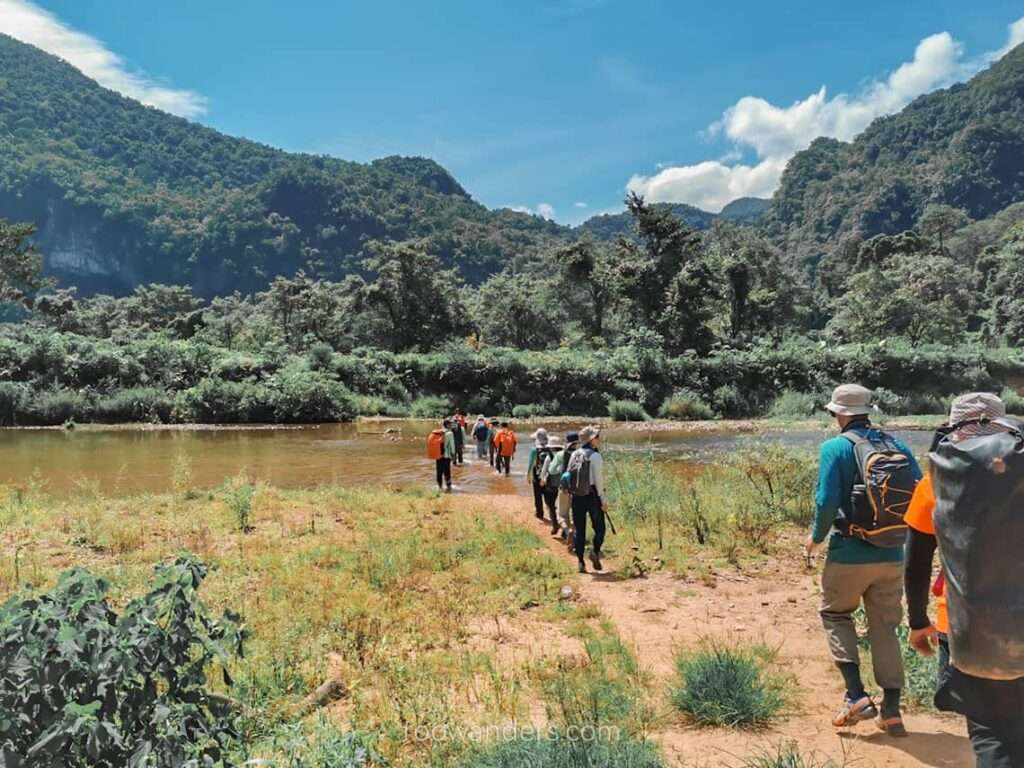
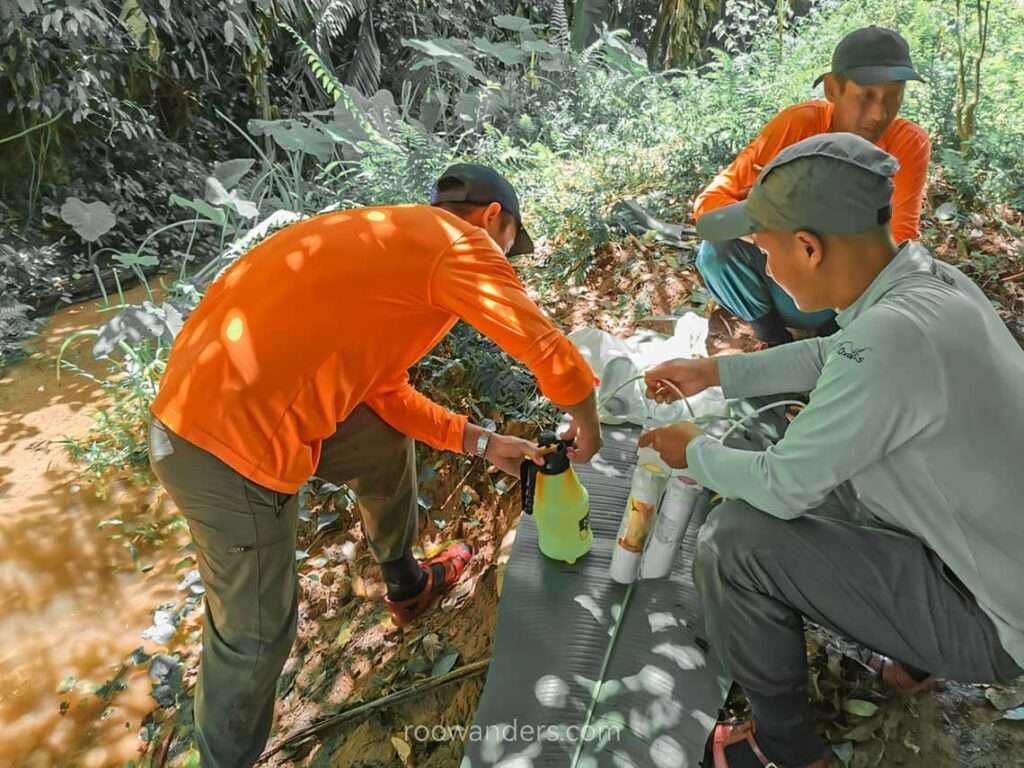
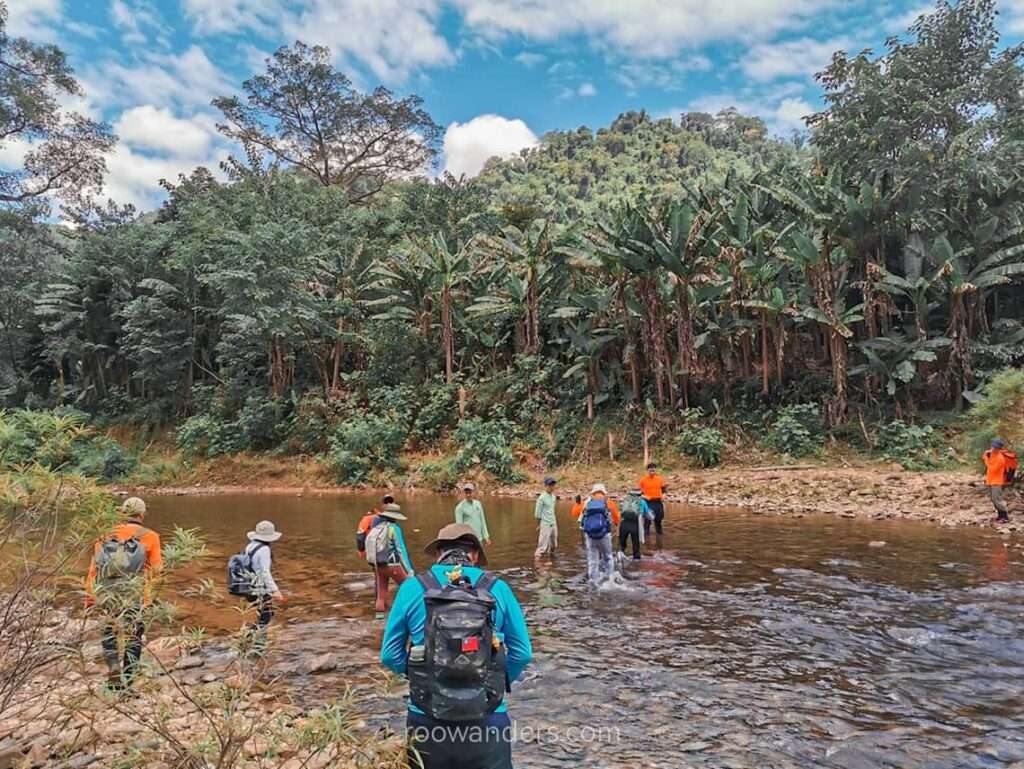
We passed by a stream where cold water emerged from a small cave opening. That was the only short respite I felt for those two hours. Thereafter, the cold water merged with the warm water.
We reached the entrance of Hang En around 2 PM and took a small break – putting on our helmets and finding spots for more photos.
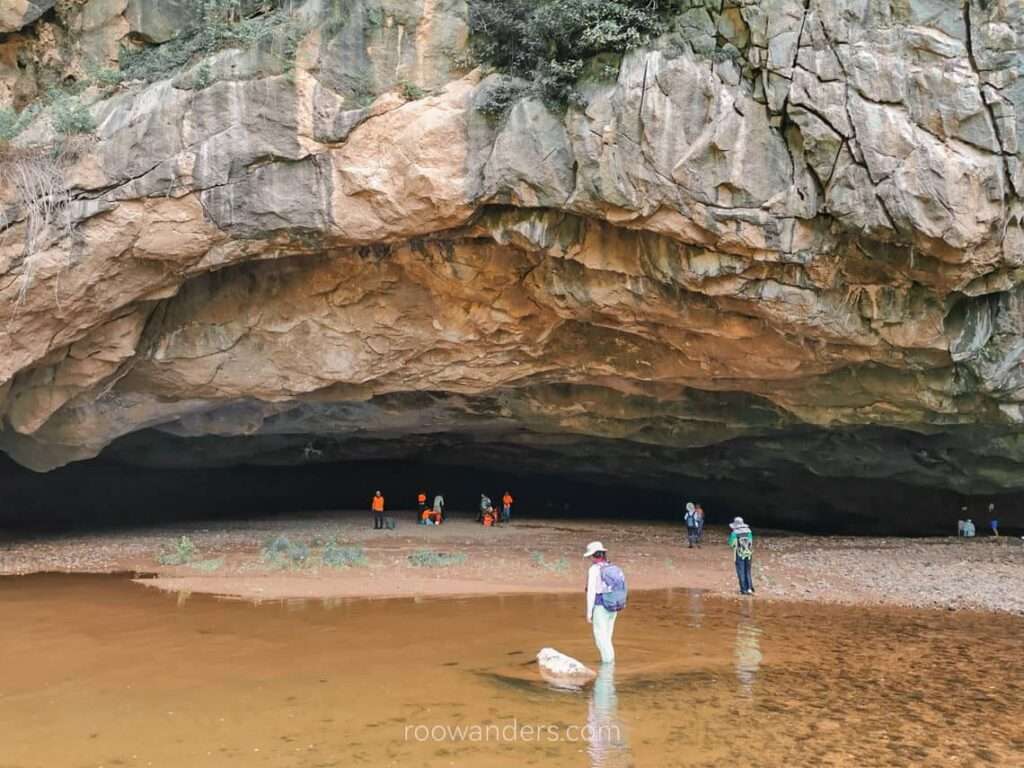
It didn’t take us long to reach the vantage point overlooking our first campsite. Perhaps 10 mins from the rest stop? Then another 10 mins of scrambling without bags to another viewpoint.
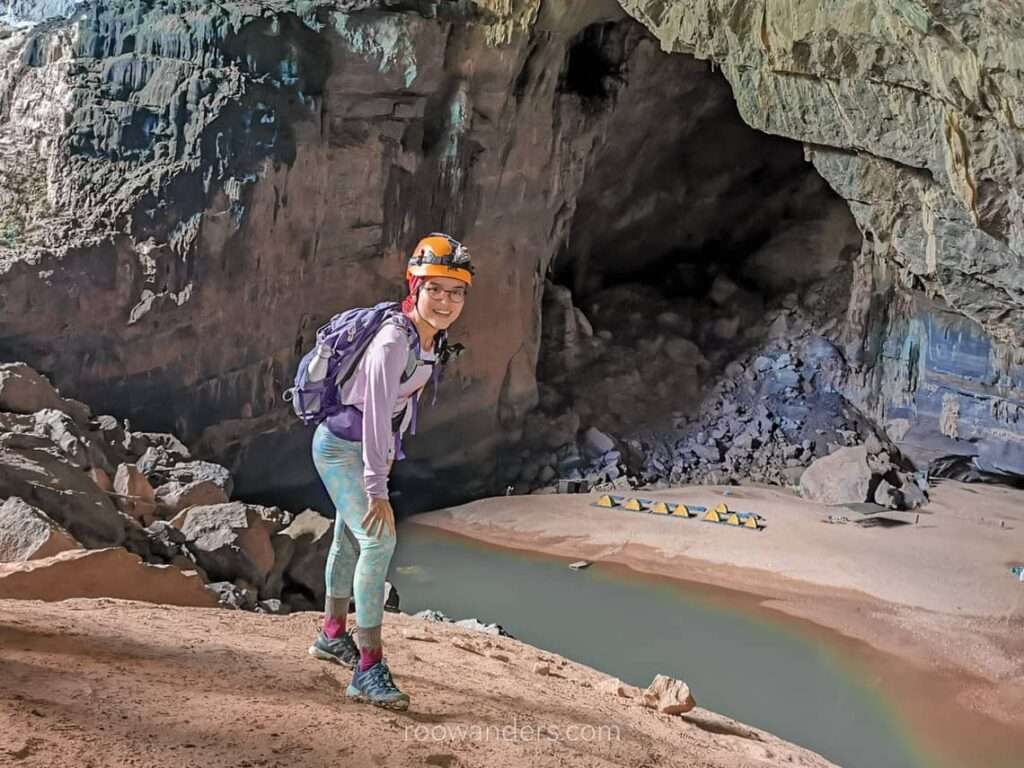
Finally, it was back down to ground level. We boarded a hand-pulled float over the river in Hang En and reached our campsite before 4 PM. Time for tea!
Hang En Activities
There are actually many activities to do in this camp. I, for instance, spent a long time playing with the many little fish in the river while rinsing my shoes and socks. Then an even longer time swimming in the river with the fish. Biodegradable soap is allowed here.
Dinner was served underneath a shelter. By then, we had already hung our clothes, checked out the toilet and changing rooms, enjoyed a cup of coffee, seen the colonies of swiftlets fly in and nest above our heads, and watched the light from the gaping hole slowly dwindled.
The toilet for this trip deserves a separate special mention. It’s a toilet bowl with a box fitted underneath. You do your business in a bag in the box and cover your traces with a scoop of rice husk from a pail nearby. Ingenious! There’s a rod to hold the toilet roll and lemongrass scent, hence you get a fresh-smelling toilet even in summer! Once the bag is filled, the staff would change it, and the porter team carry them out to be used as fertiliser. The only minor inconvenience is you need to carry your headlight into the toilet, as the tarp walls block light.
When night arrived, we sat around a tray of freshly roasted peanuts with a warm Vietnamese tea cupped in hand, while the assistant guides surprised us with another beautiful photo point. The lamp underneath the small dock, and another pointing to it, created another setup for an otherworldly photo.
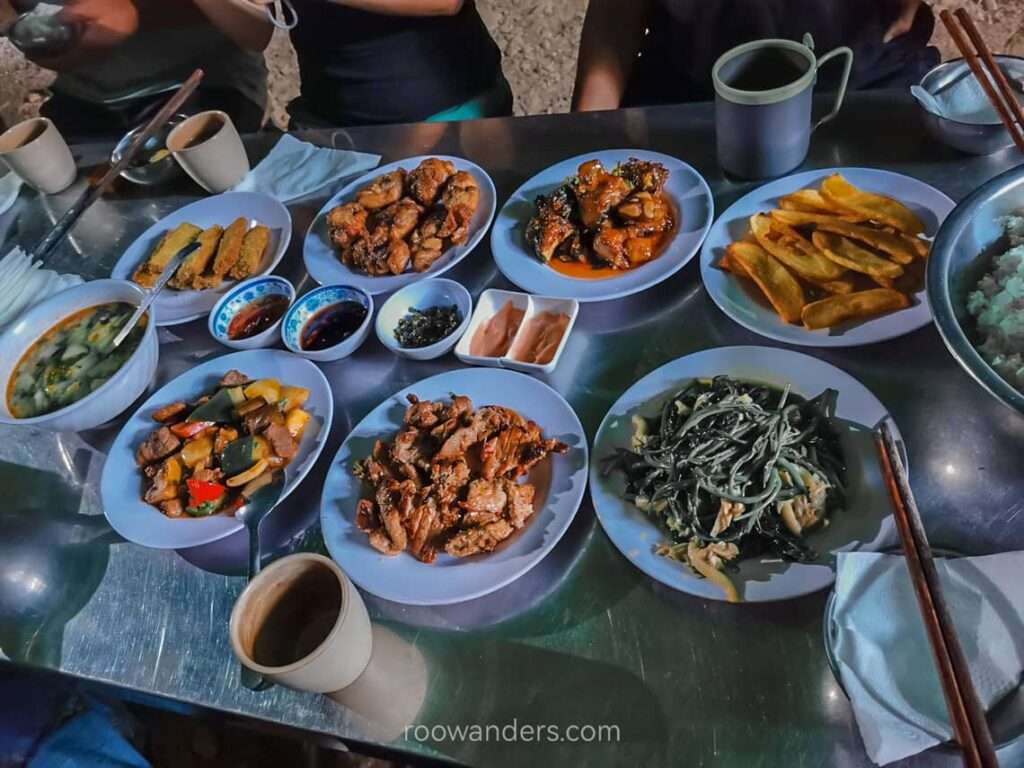
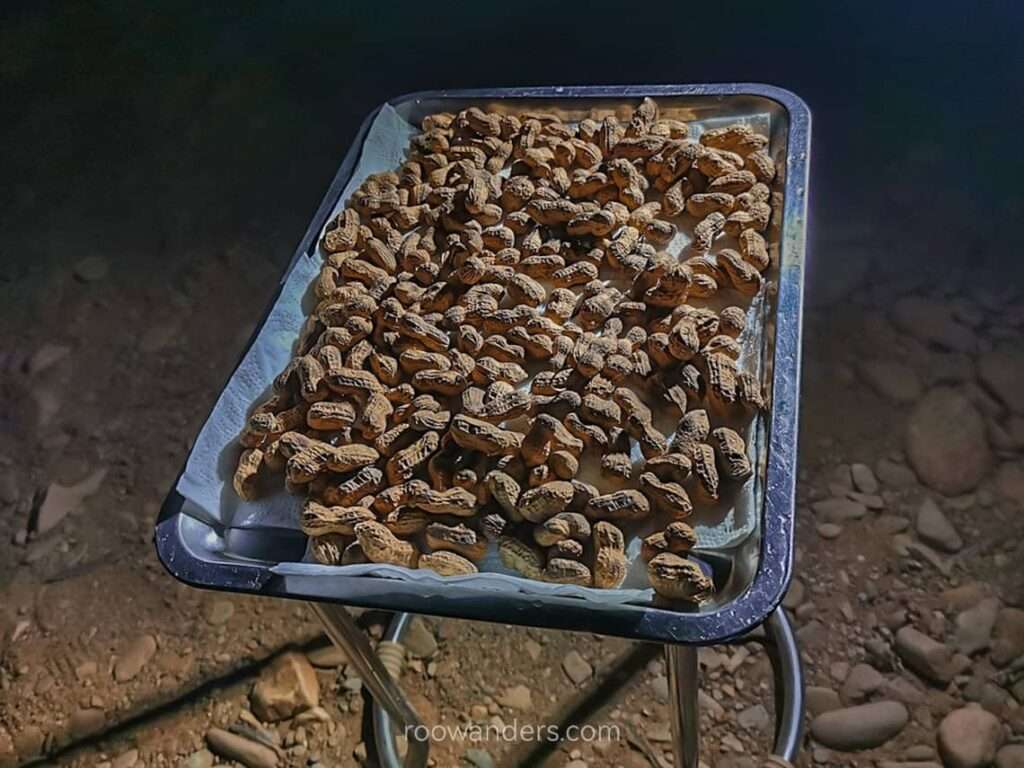
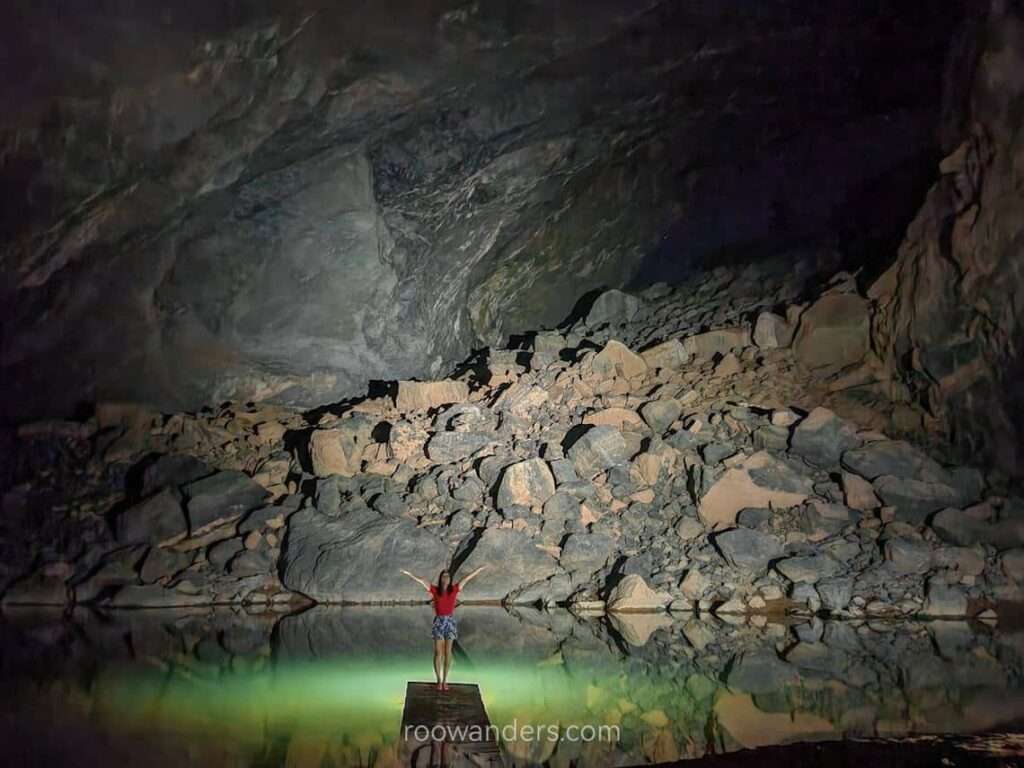
Day 3: Hang Son Doong Day 1 | Hang En to Hang Son Doong
Out of Hang En, Into Another Forest
Breakfast was an overkill! We had baguettes paired with beef slices, capsicums and eggs on a sizzling hot plate!
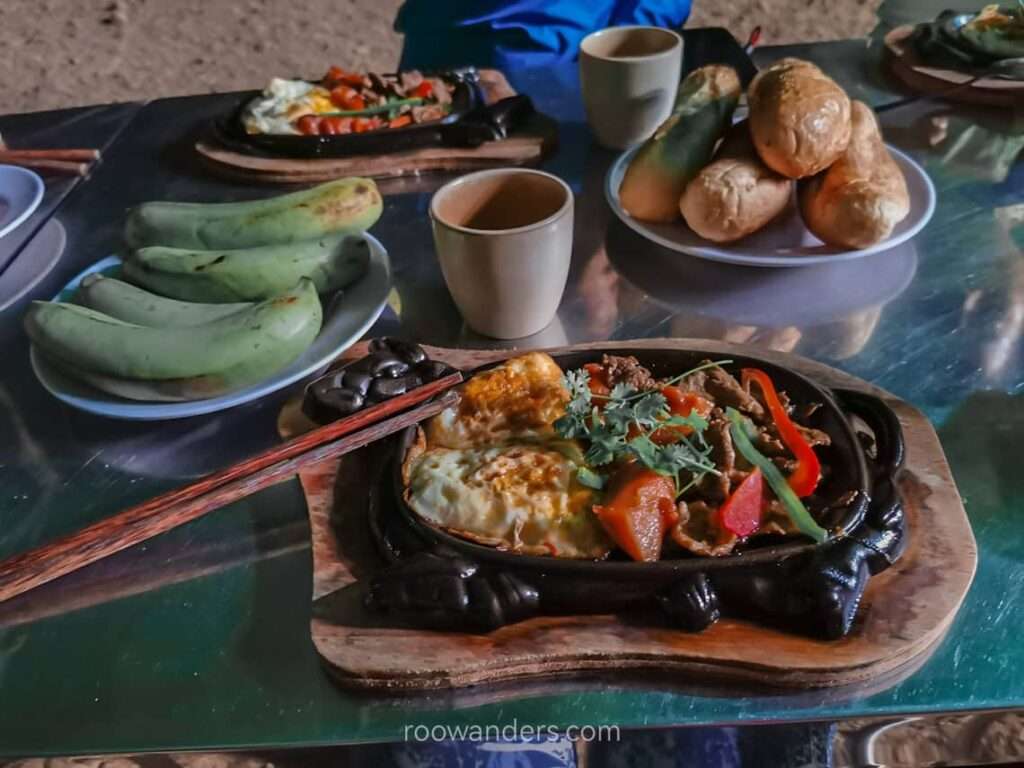
The first activity was scrambling to another viewpoint behind the campsite without bags.
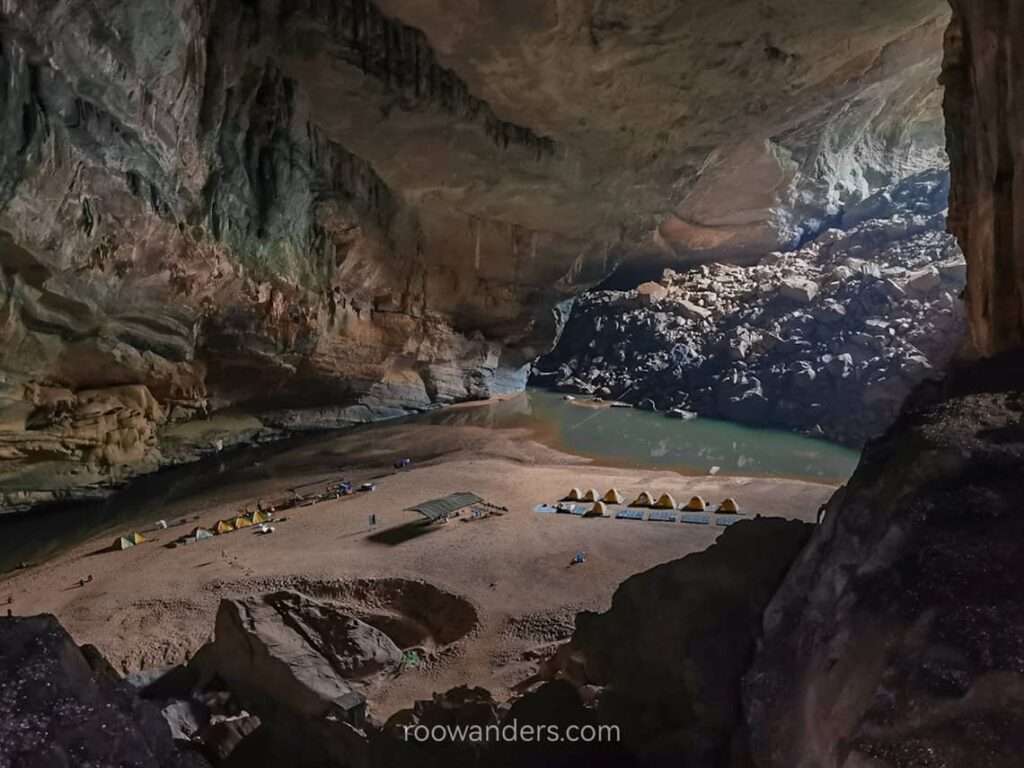
Then bags on from the campsite towards the exit of Hang En that leads to Hang Son Doong, as Ho Khanh first explored.
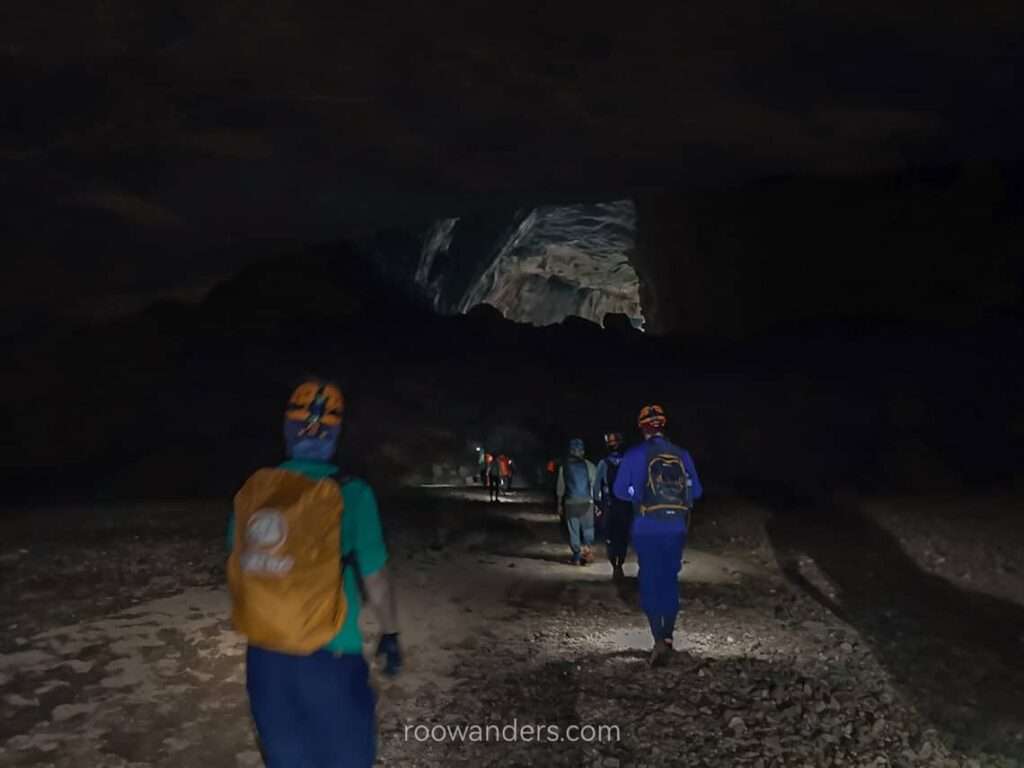
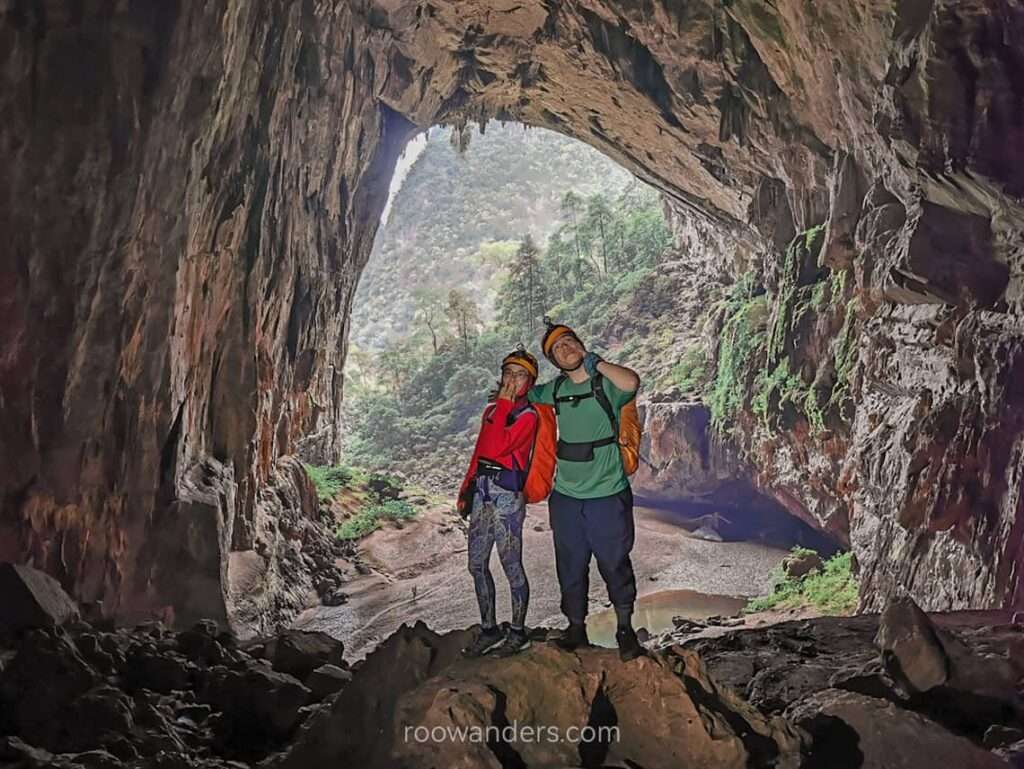
We trekked through rivers, again, before steadily ascending through a forest with steep rocky sections. Lunch was served atop the hill.
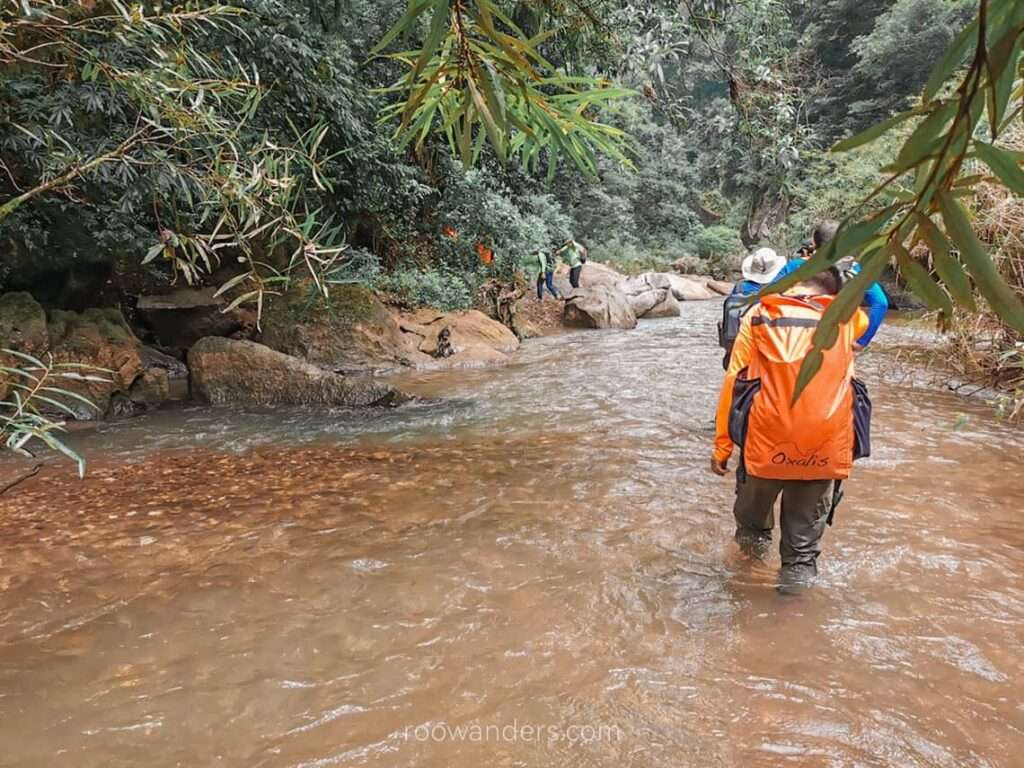
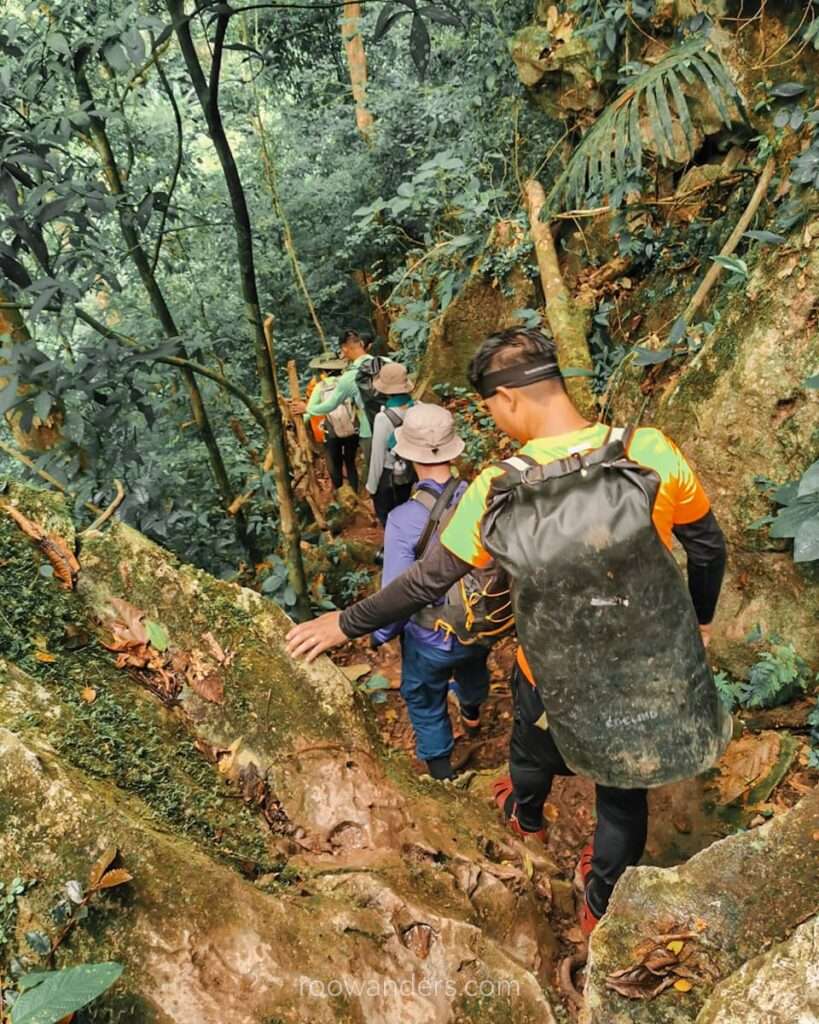
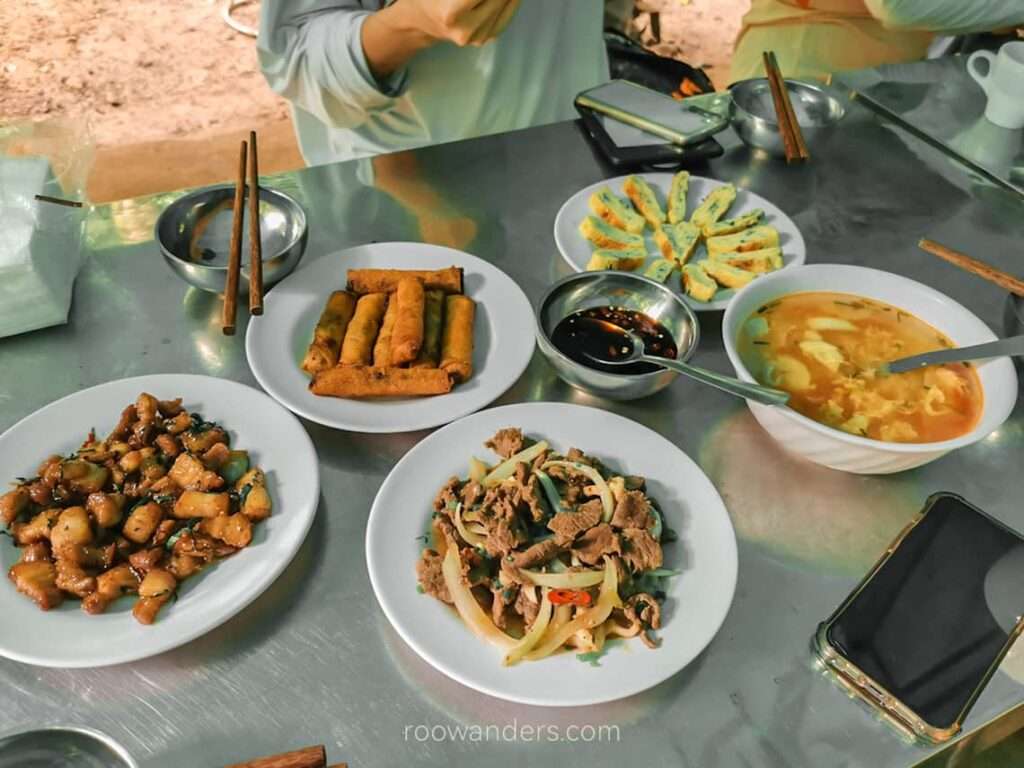
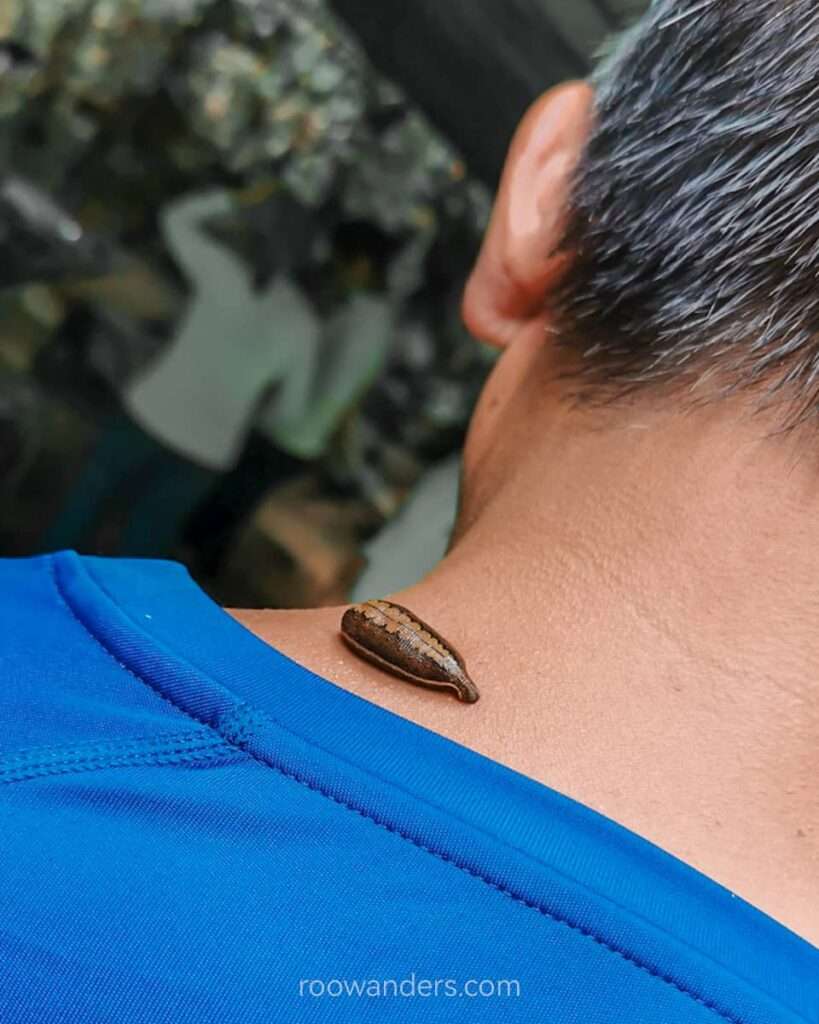
This section of the trek had leeches! Several enthusiastically waved at us as we stepped over rocks and roots. Two of them managed to find their way onto the neck and body of two unsuspecting members, and were only discovered during lunchtime!
Safety Briefing, Descending into Hang Son Doong
Post-lunch, the assistant guides strapped us up in safety harnesses. Next came a short safety briefing conducted by the lead guide, and some demo of half-squat/ abseiling poses that’ll come in useful in the cave.
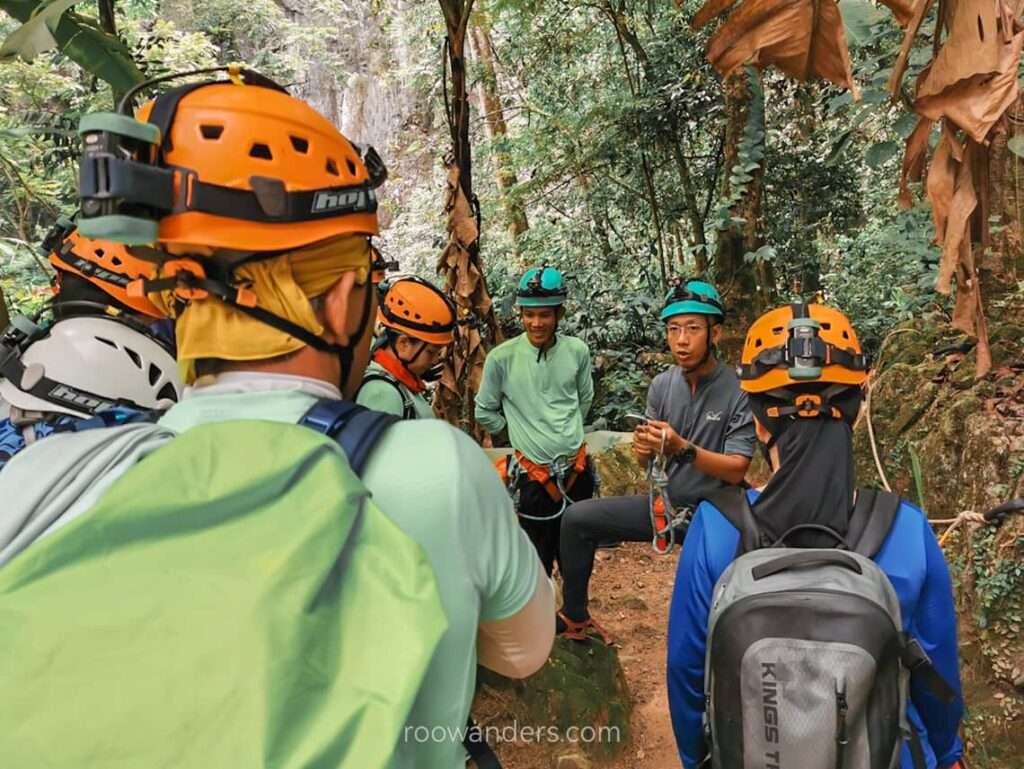
Our lunch stop was in very close proximity to the entrance of Hang Son Doong. After a clumsy – all of us were wearing harnesses! – short and steep descent supported by ropes and ladders, we came face-to-face with the red-painted words indicating the entrance of Hang Son Doong!
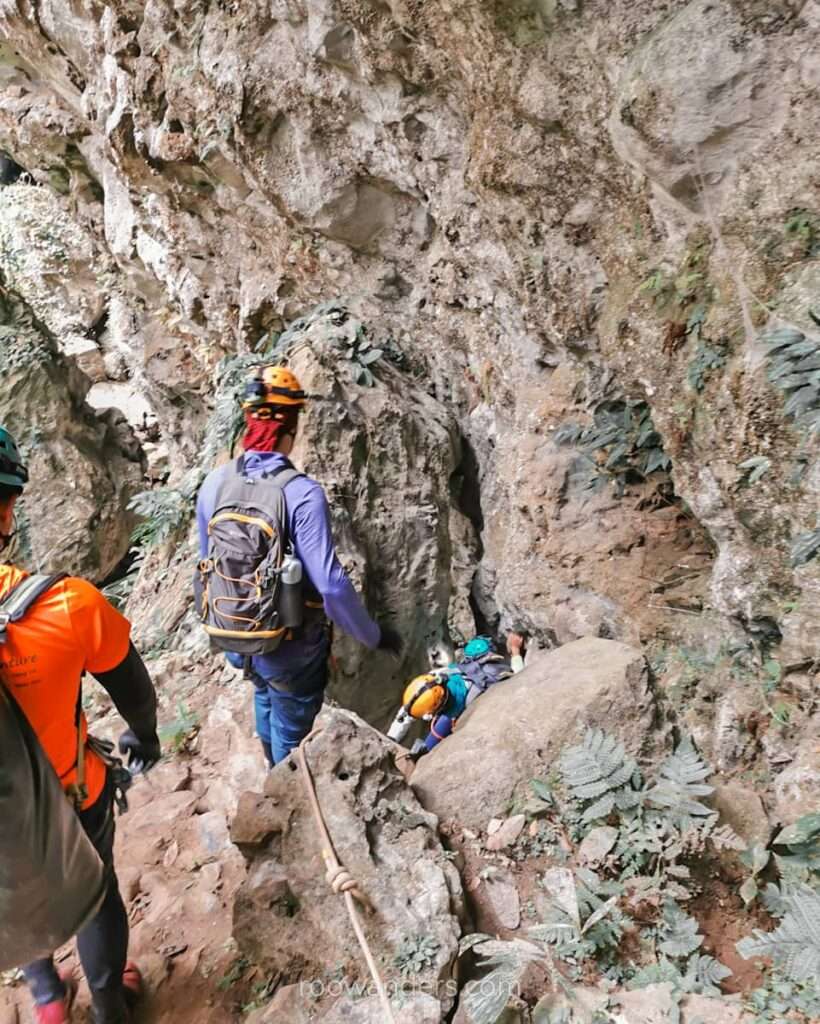
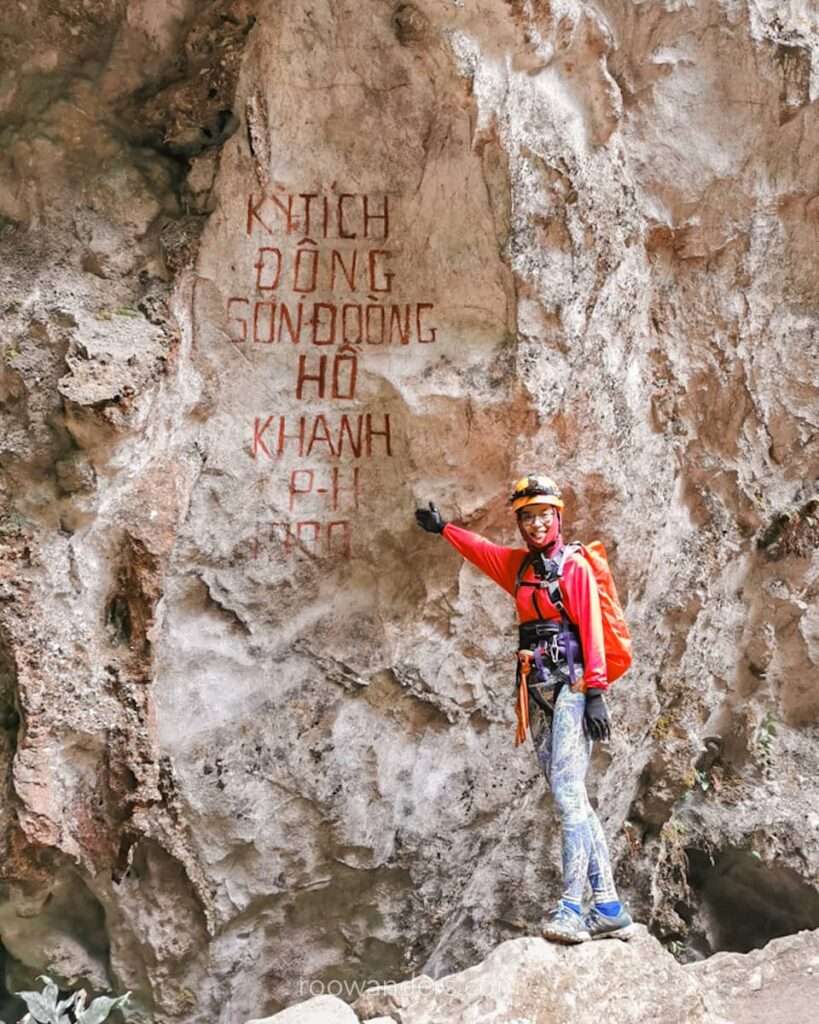
Puffs of mist and cool air erupted from the jagged mouth of Hang Son Doong. We waited for our turns to descend the 80 m slippery calcite rocks, leveraging on the ropes and half-squat positions. For every new safety rope, we clipped and unclipped our carabiners. A slow but easy process.
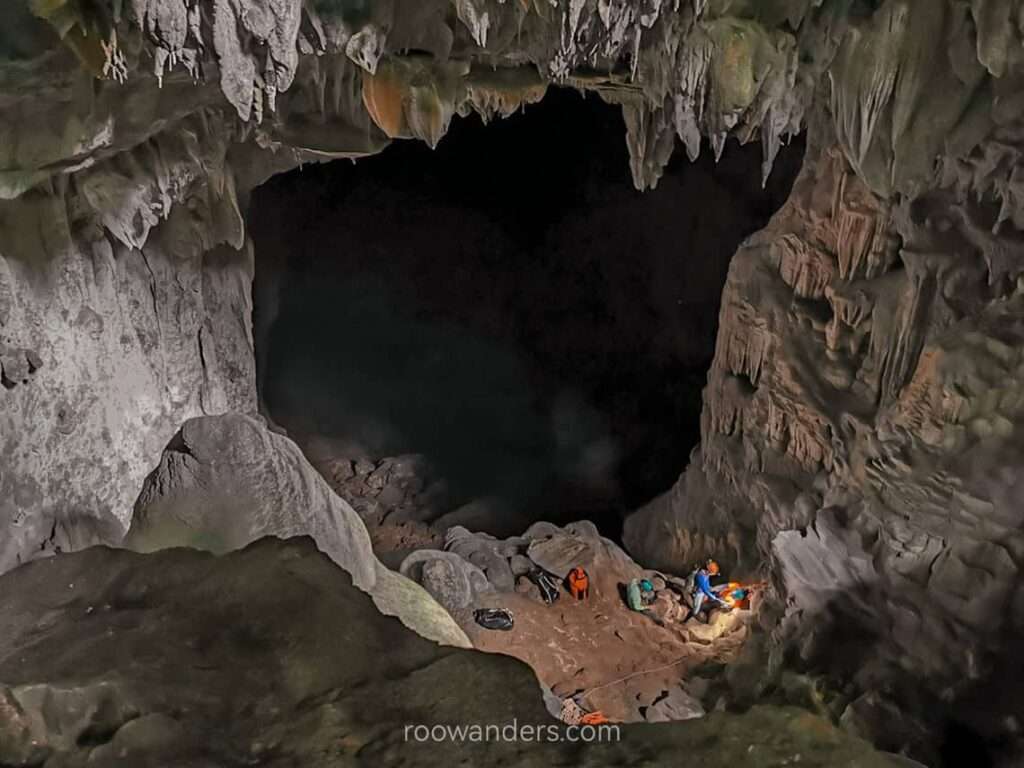
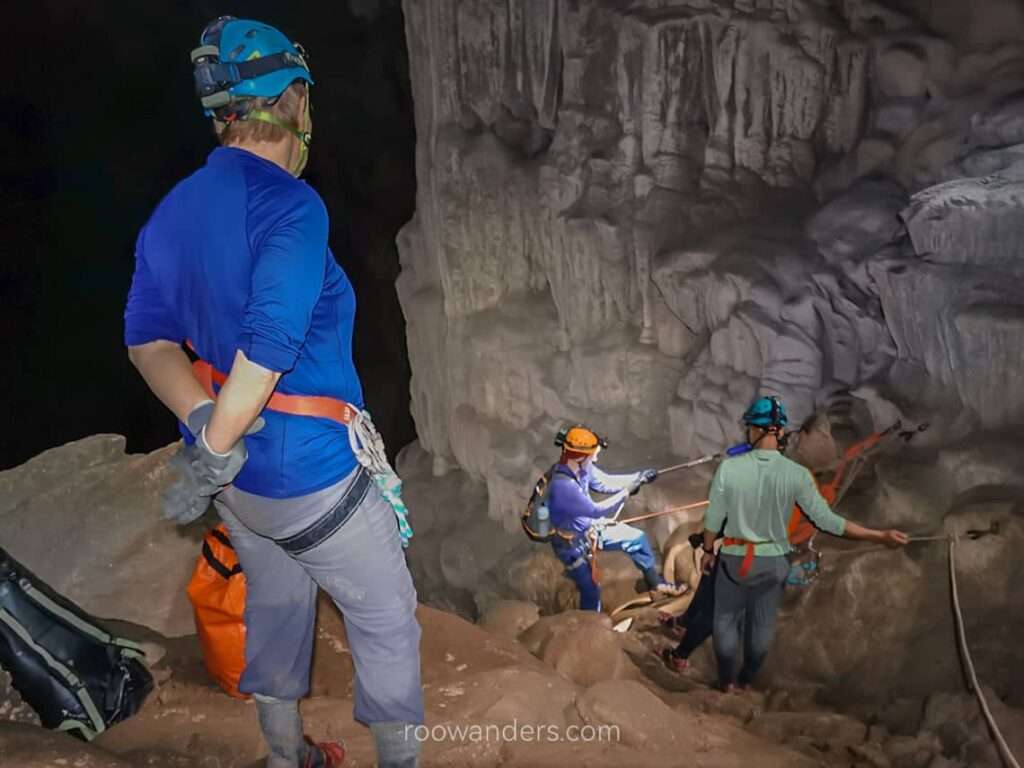
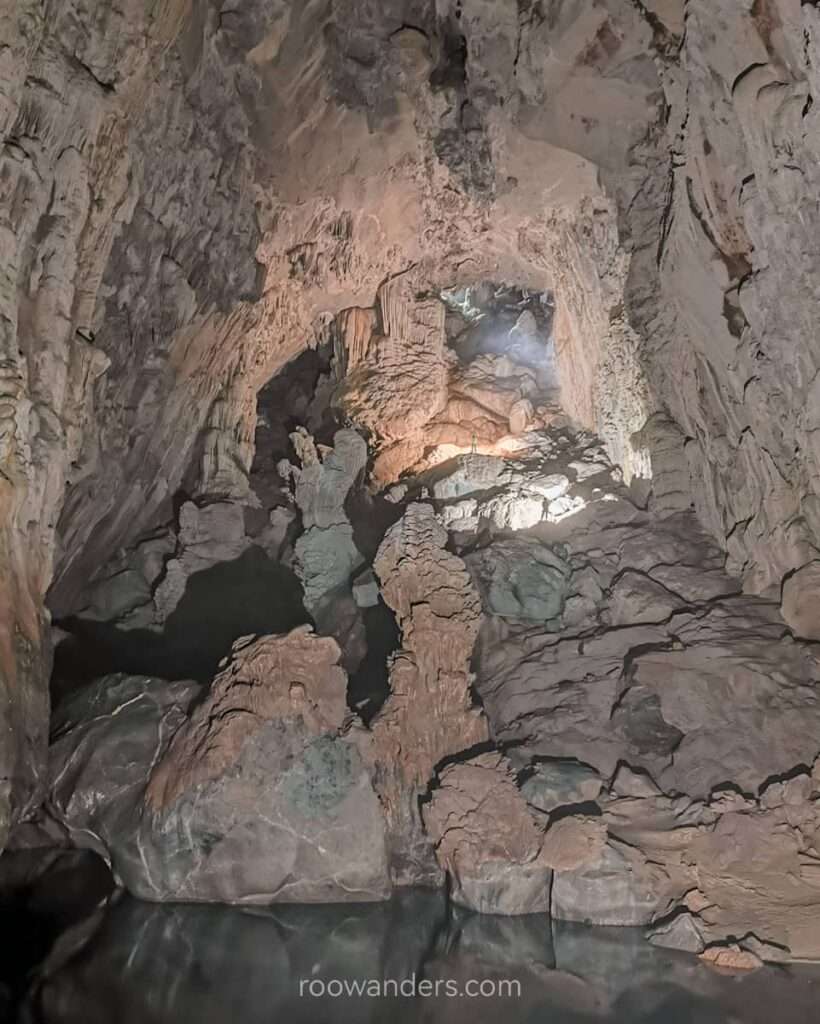
Bridges, Hand of Dog and Other Big Formations
Sounds of the underground river echoed within the cave chamber. As the water level was too high and dangerous for us to wade through, our river crossing for that day came to an eventual halt. Instead, we waited for our turns to tread over two bridges.
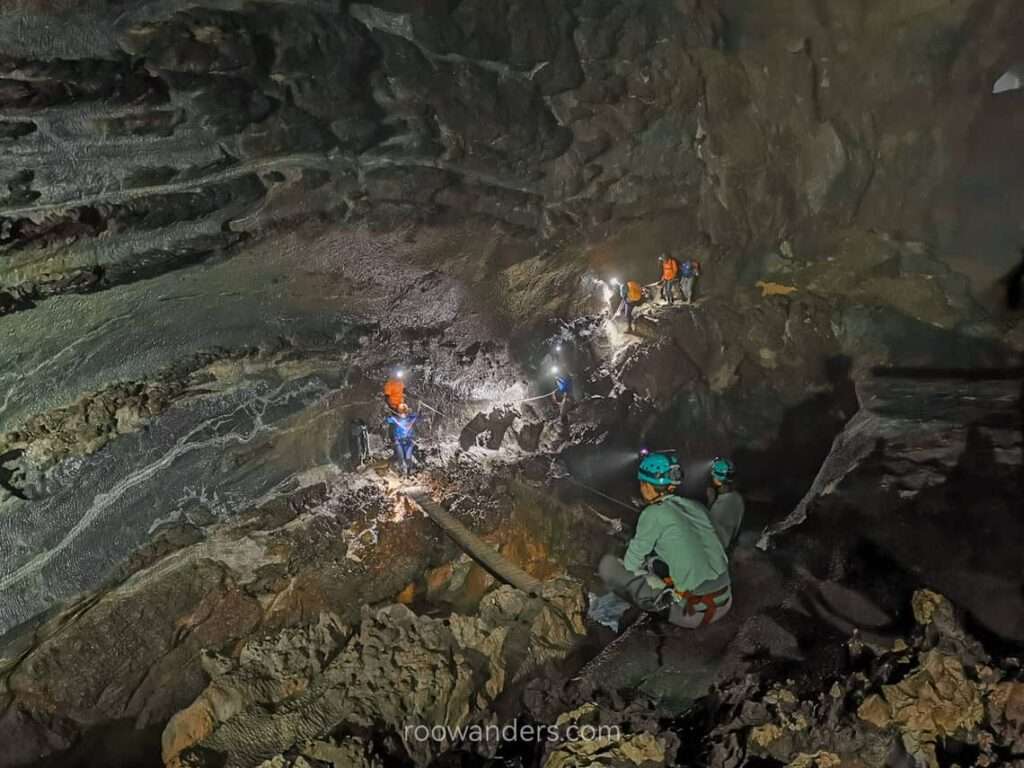
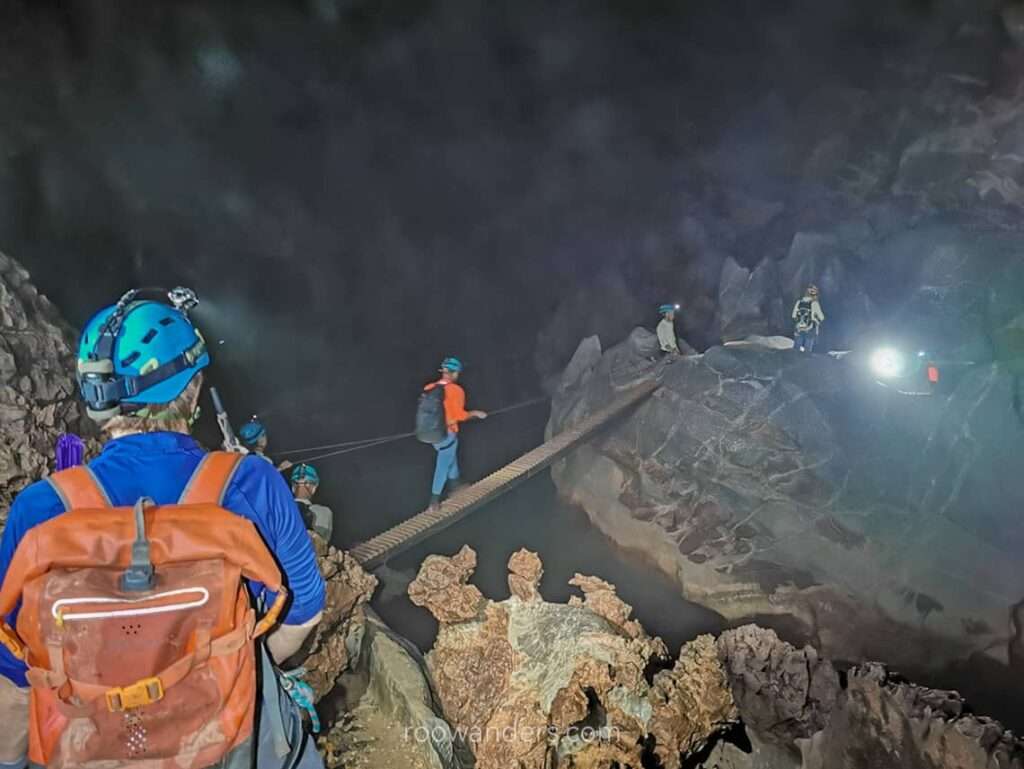
The ground below us changed from rocks covered with thin layers of slippery mud or water to soft wet sand that clung tenaciously over my shoes. We were now walking within The Hope and Vision Passage, where a Boeing 747 could easily fly through.

We stopped and gazed in wonder at a huge cavern where the tallest stalagmite lives (80m). Behind it, late afternoon light streamed in from the misty and faraway doline 1. Standing between the clusters of gigantic formations was the unmistakable silhouette of the stalagmite funnily termed The Hand of Dog.
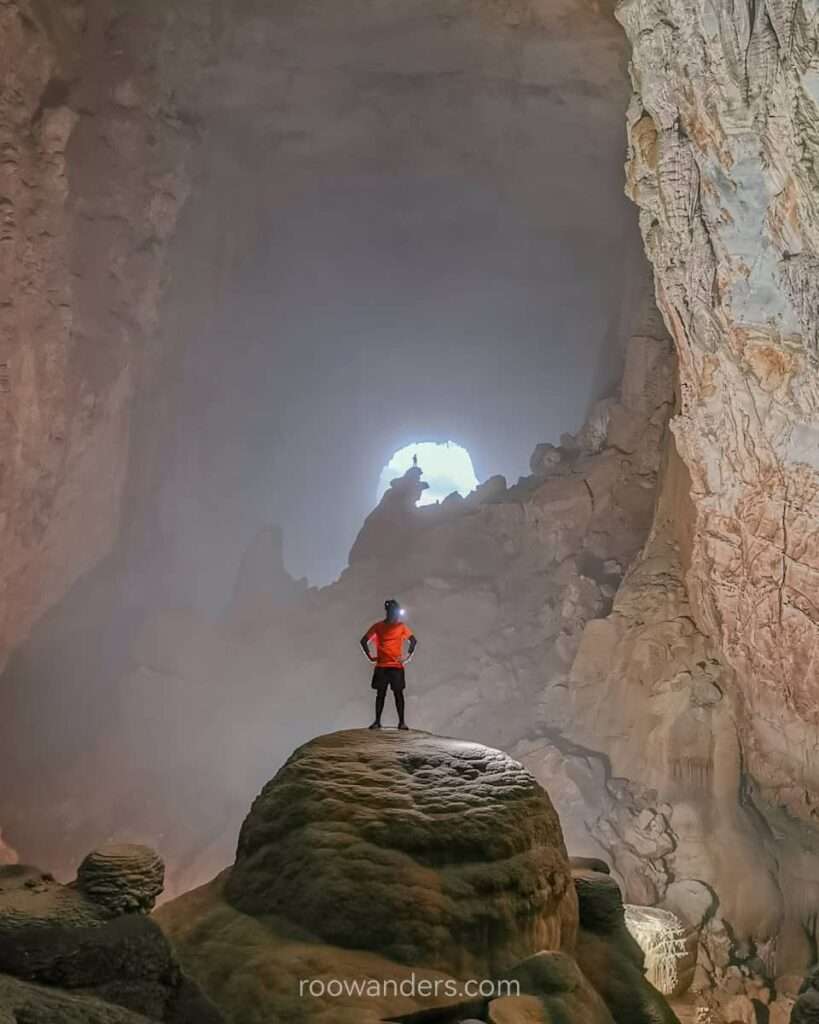
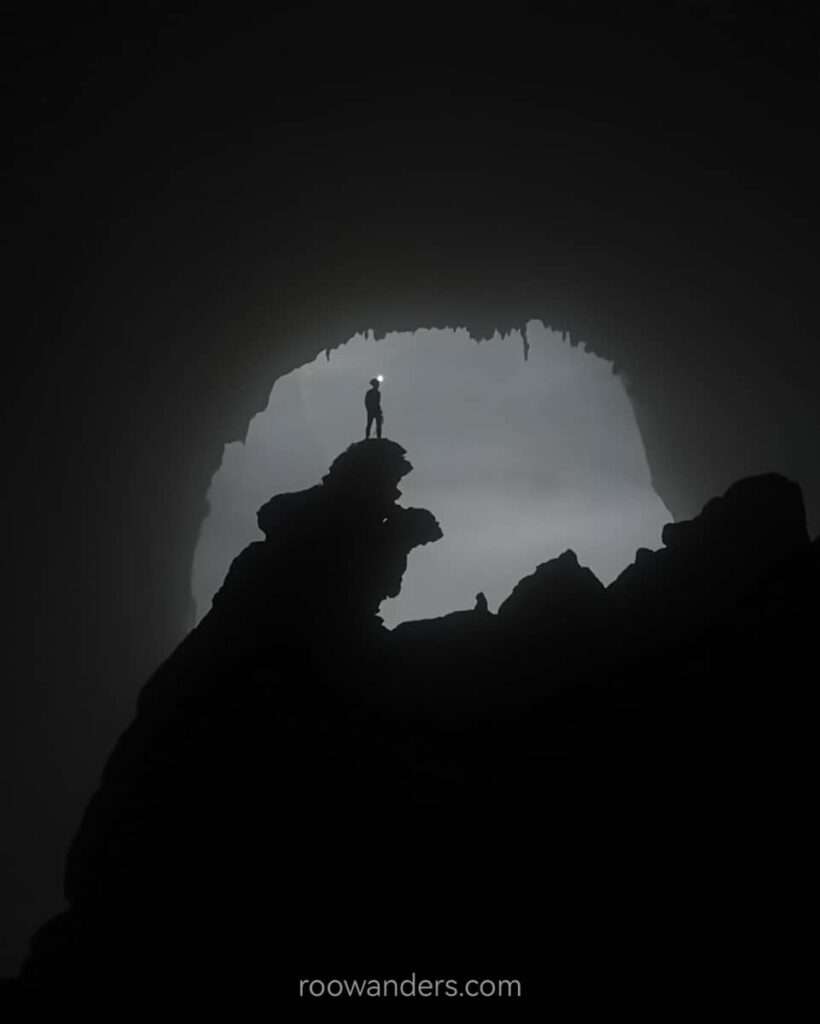
According to the guide and Oxalis website, this formation should have been called the omnipresent Hand of God. Somewhere along the exploration, however, the person who penned it down misheard the person who named it and the name has stuck ever since.
After a display of these incredulous formations, courtesy of the staff who got there before us with strong lamps, we were back gingerly treading over a track filled with bobby traps in the form of slippery boulders, shaky rocks, and steep or wide crossings.
Our first campsite in Hang Son Doong, The Level Playing Fields, came into attention beneath our feet, enveloped by mist. Beside it stood the large vertical gaping hole of Doline 1, which we’ll enter the following day.
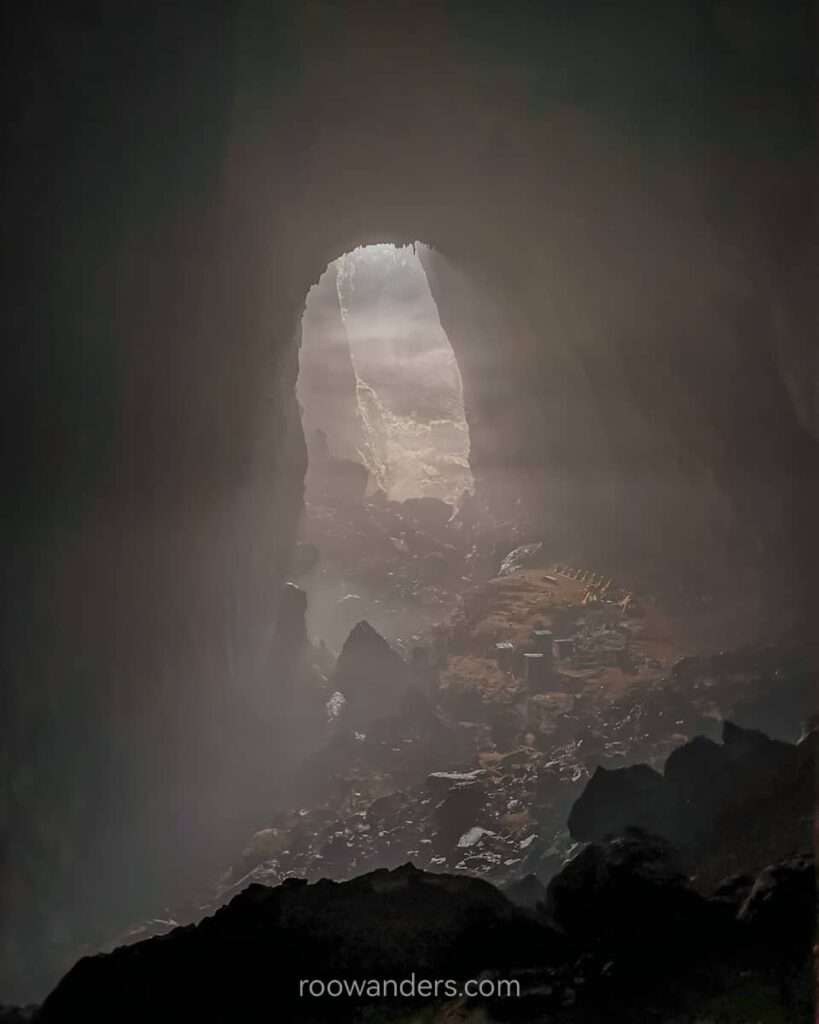
Underground River Swim and Fossils
We dropped our bags, changed our harnesses for life jackets, and headed towards the sound of the underground river.
The walls and floors became incredibly smooth, black and slippery as we got closer to the river, with some areas requiring us to sit and slide instead. Prehistoric old coral fossils embedded in the black rock came to view along the way.
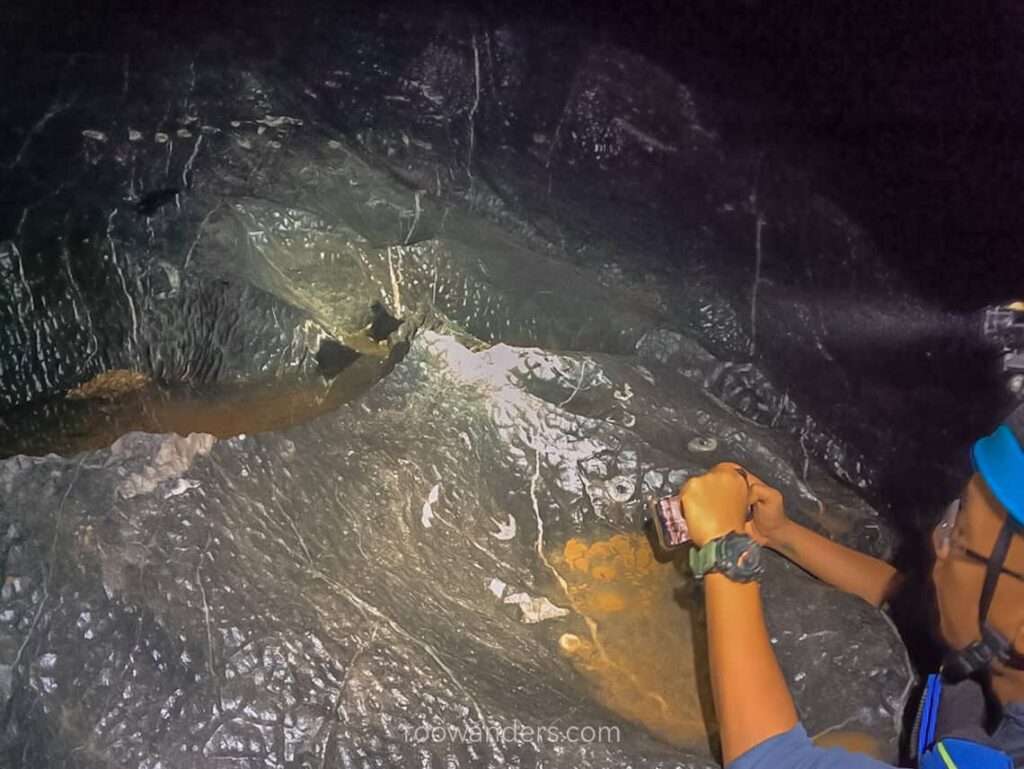
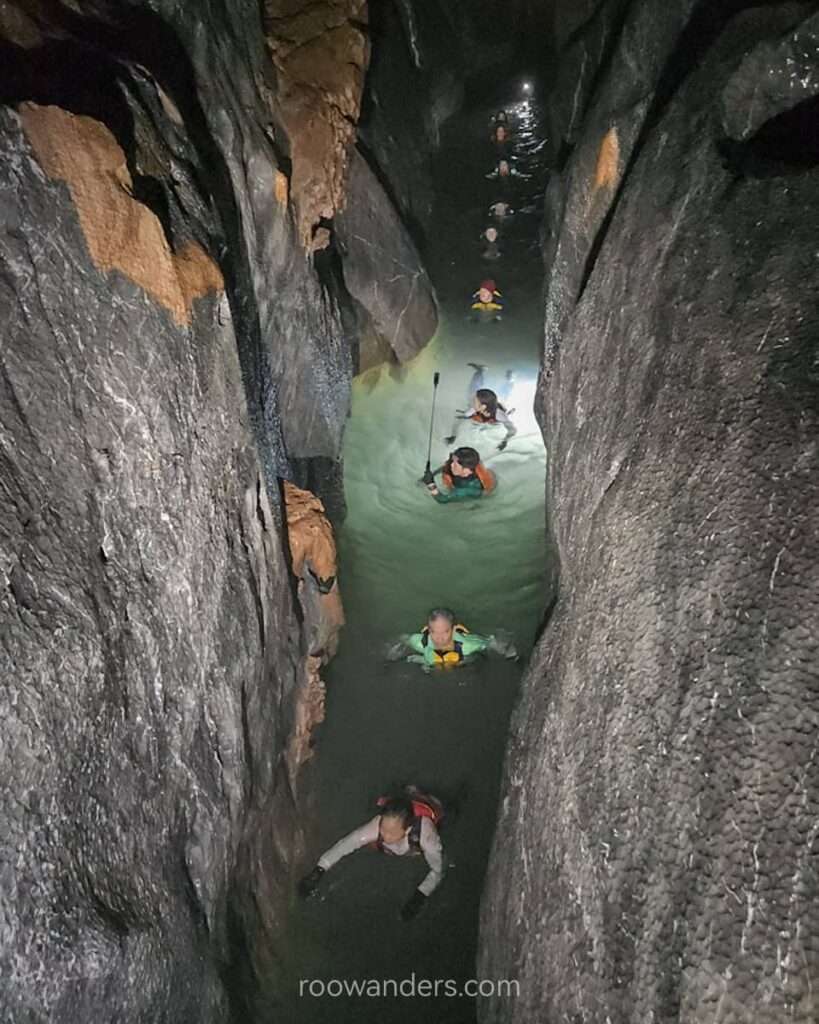
Don’t let the cold water shock you! It was a nice relaxing swim after a hard day of walking over unsteady rocks. The cold water, about 16 dC, coupled with the life jacket, acted like a relaxant. We had a fish spa the day before, and now it was a cave cold water spa! We let the chilly water take away the soreness and sweat debris until I was toggling between a state of utter relaxation and a state of cold shivers.
Son Doong Campsite I: The Level Playing Fields
We swam and crawled/ walked back to the campsite – my legs were not mine after the cold soak. Then it was resting on camp chairs facing the magical doline, before another sumptuous dinner, roasted peanuts and tea, and finally black out.
Compared to Hang En, there were no swiftlets, hence no sudden bird poop and incessant chatters. Also, no flying insects that smashed themselves onto lamps! Instead, we had the soft hum of the underground river and many humongous but shy cave crickets. We drifted to dreamland with one of our tent flaps open and was awoken in the middle of the night by chills.
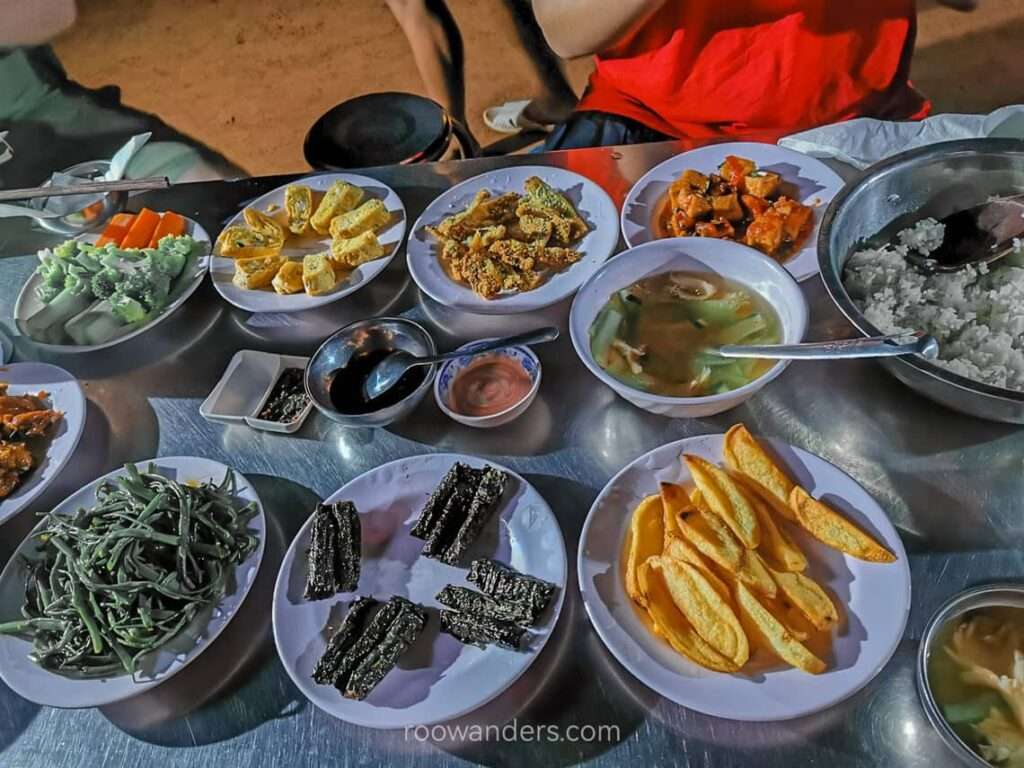
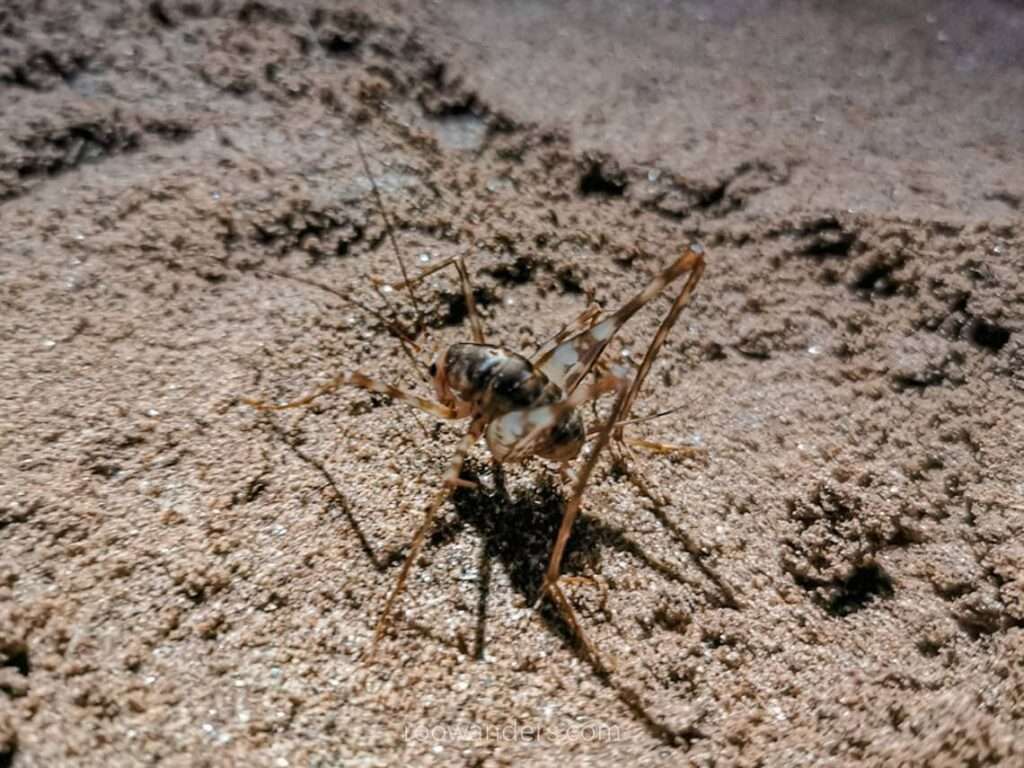
Day 4: Hang Son Doong Day 2 | Doline to Doline Easy Day
Towards Doline 1: Watch Out For Dinosaurs
Guess what’s for breakfast? A bowl of soupy vermicelli AND pancakes, complete with chocolate sauce or honey. Bananas were always present. Too bad my stomach isn’t quite awake for a big breakfast.
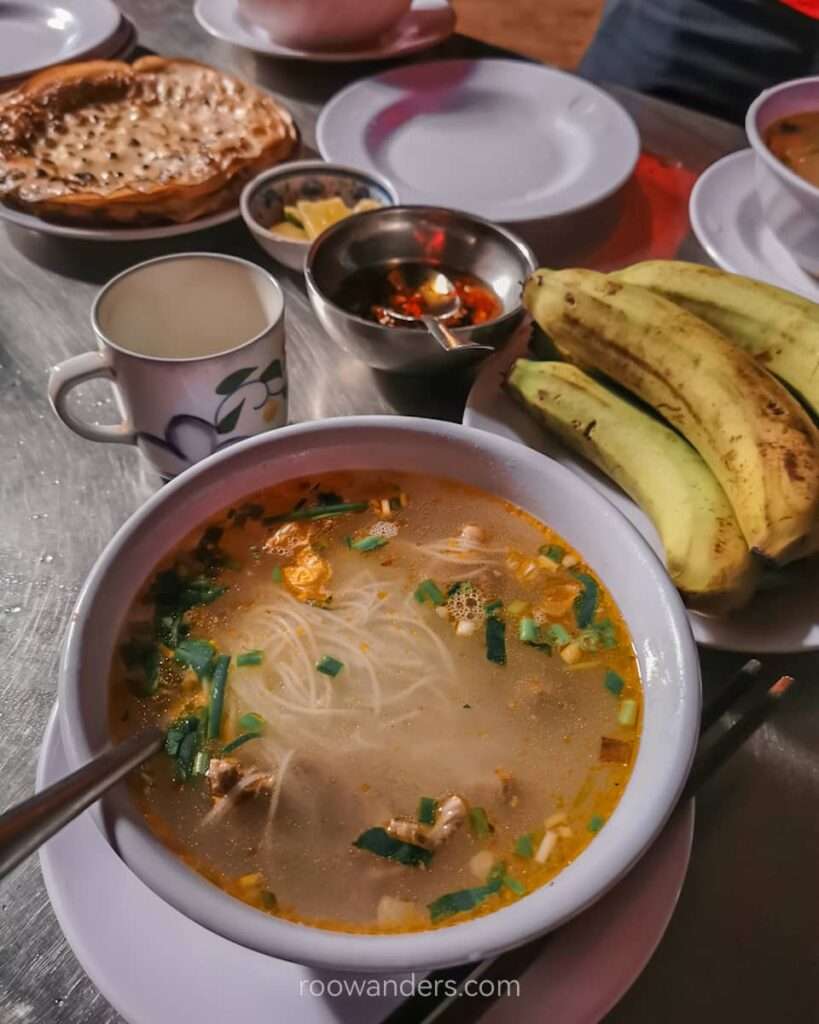
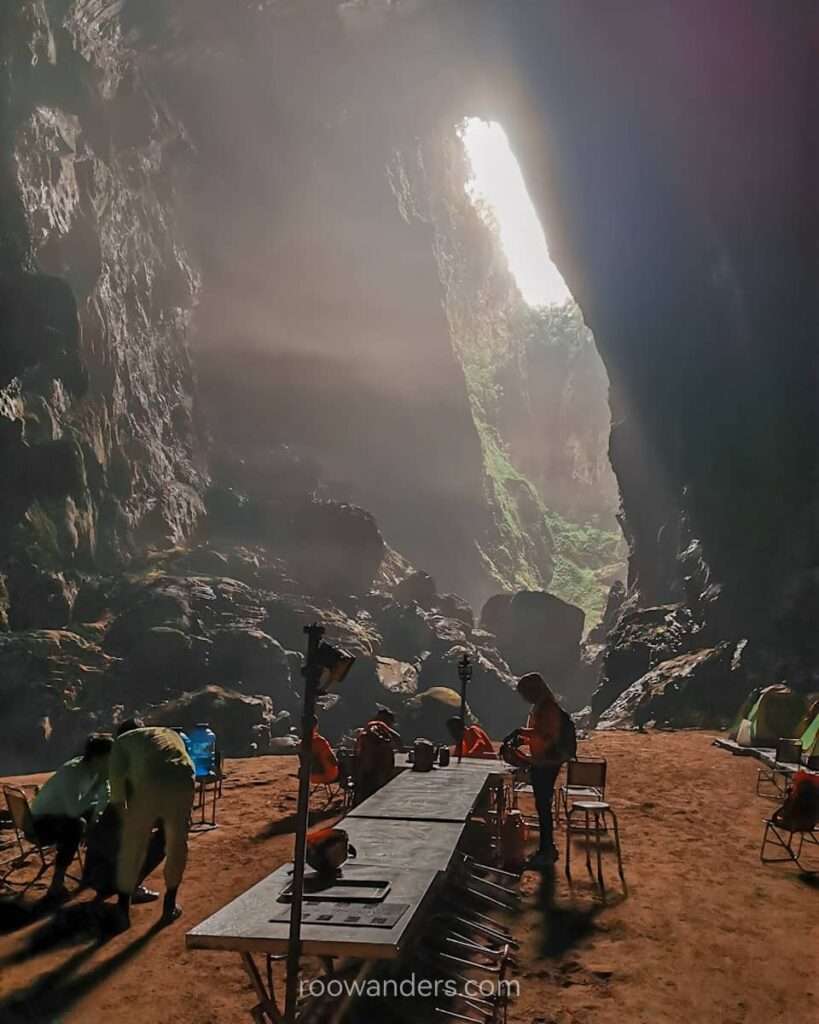
We ascended some rocky climbs towards the first doline: Watch Out For Dinosaurs at 9 AM. The origin story behind this doline isn’t as interesting as The Hand of Dog. A passing remark that a dinosaur may pop out from nowhere in the jungle stuck and remained.
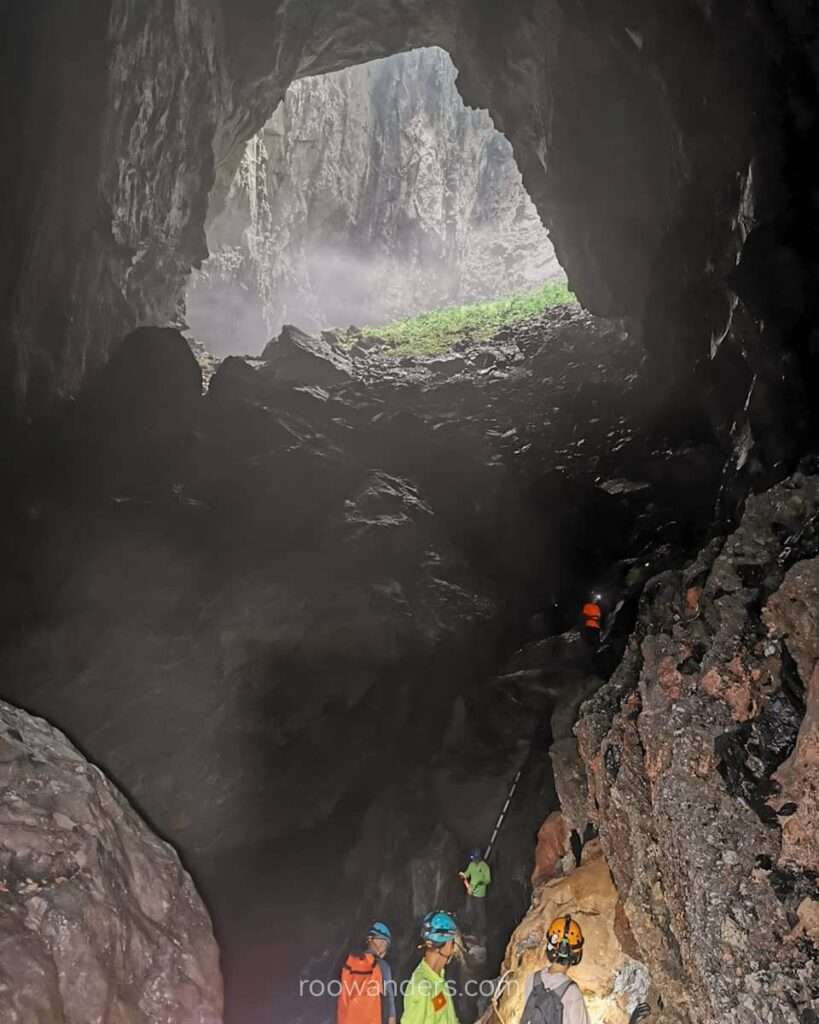
But before we even reached the forest, we had a photo stop with the hole on the wall, or what some may call, The Eye of Hang Son Doong. The climb was not easy – it was very slippery, the walls were like marble – and needed three assistant guides to help. But the photos speak for themselves. A Spiderman, ninja or 007 pose gives perfect results.
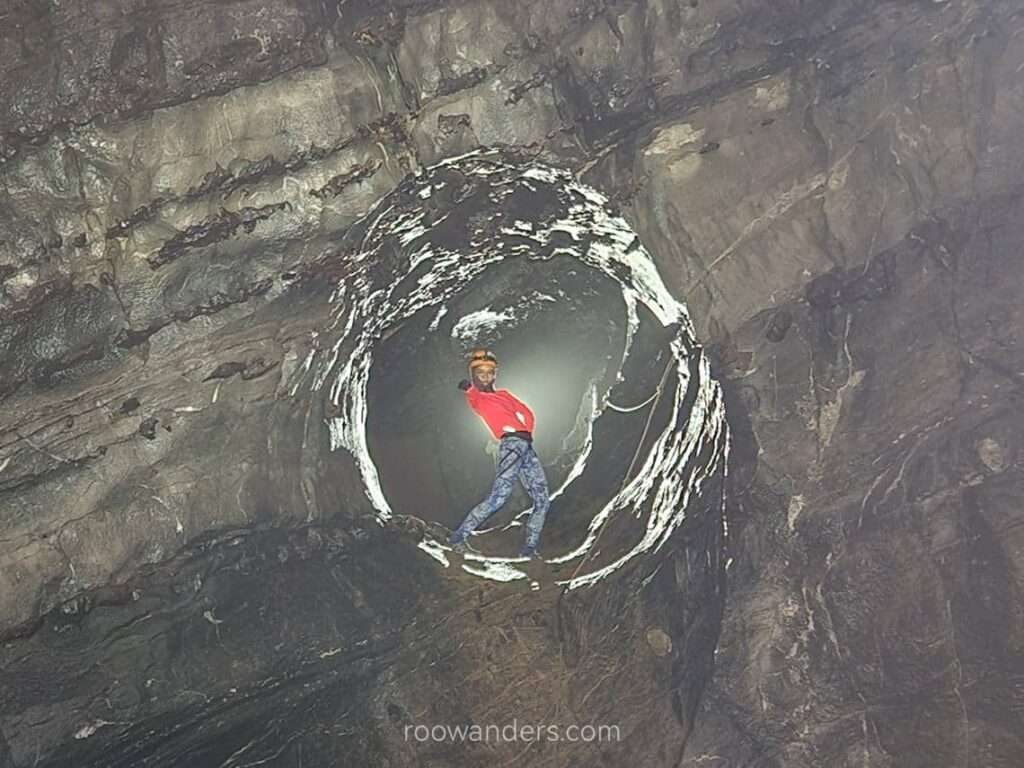
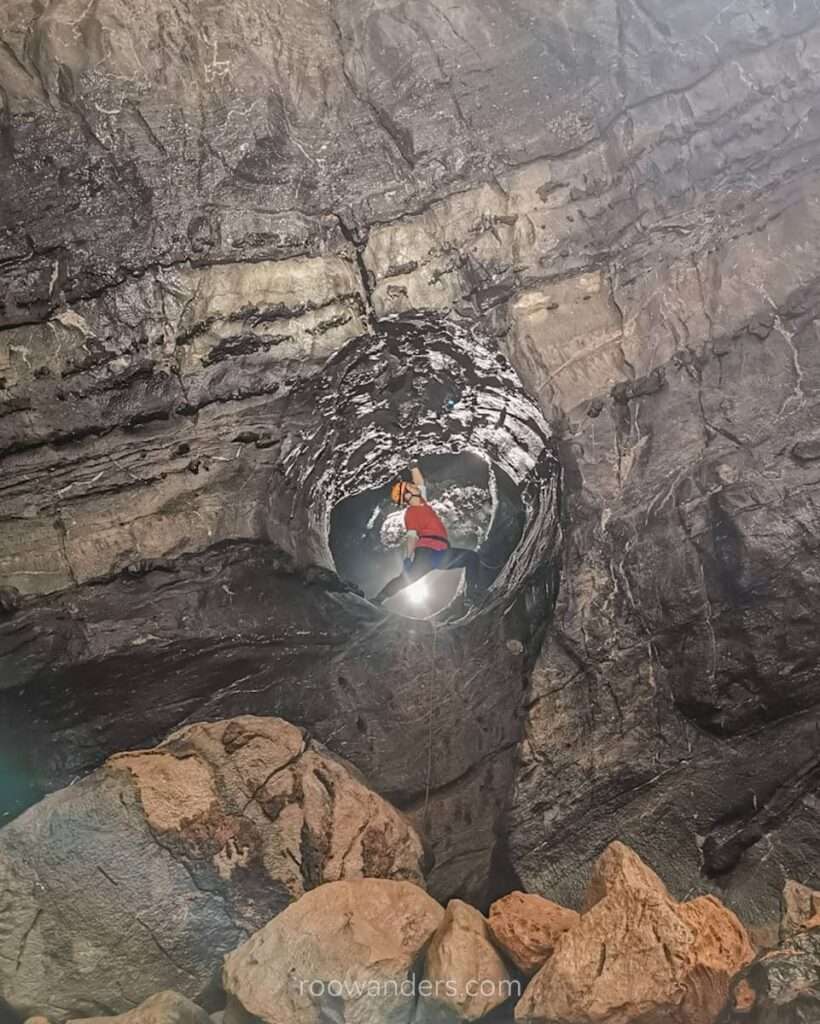
Wandering within the First Doline
The first doline was formed when the weaker areas of the passage carved out by the underground river collapsed. Sunlight gave light and life sprang into action.
Within this doline lies the enchanting Wedding Cake that almost everyone who’s heard of Hang Son Doong would want a photo with. From the photos, the flat and fat stalagmite looks tall when it’s not. It’s all about the angles.
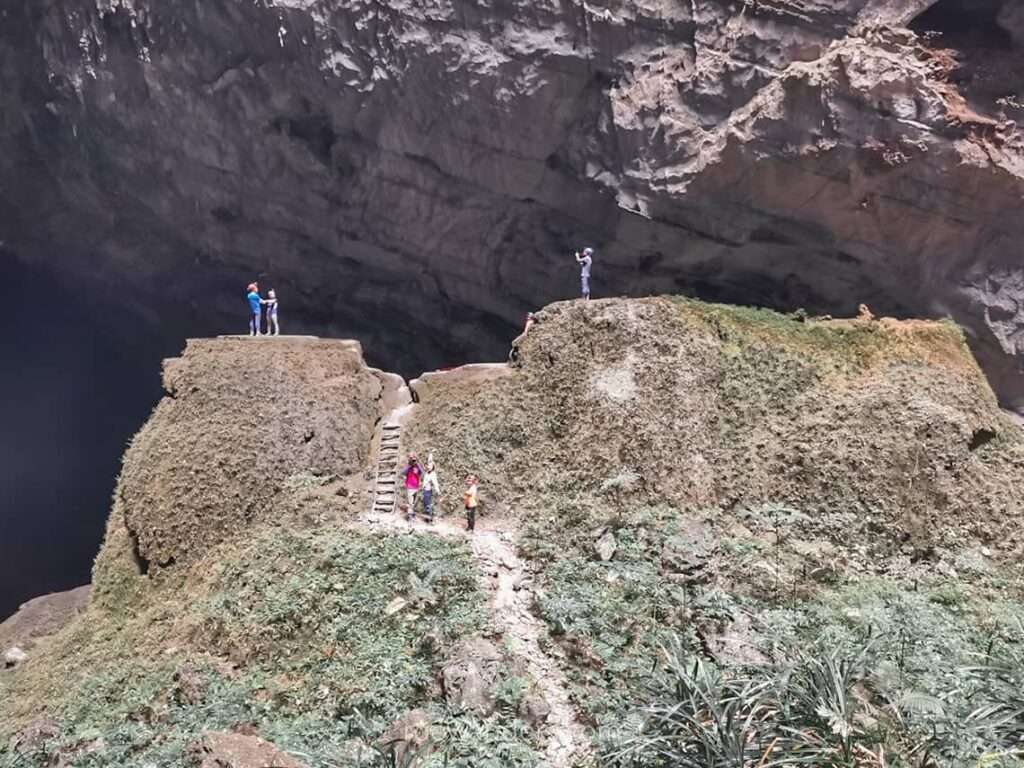
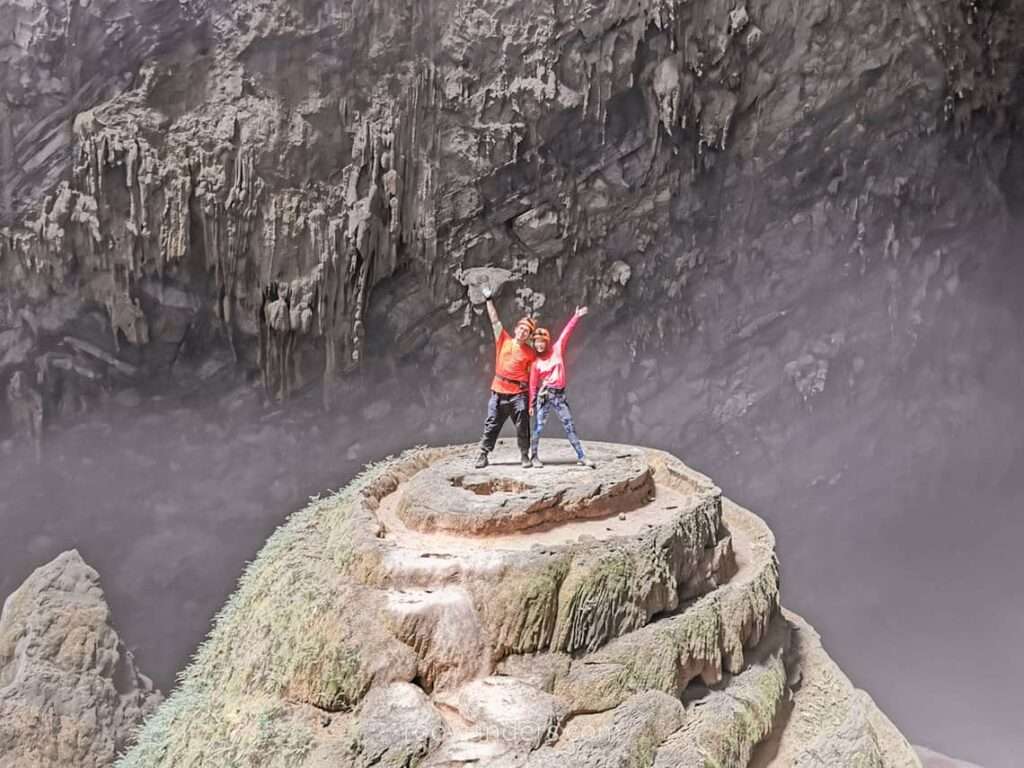
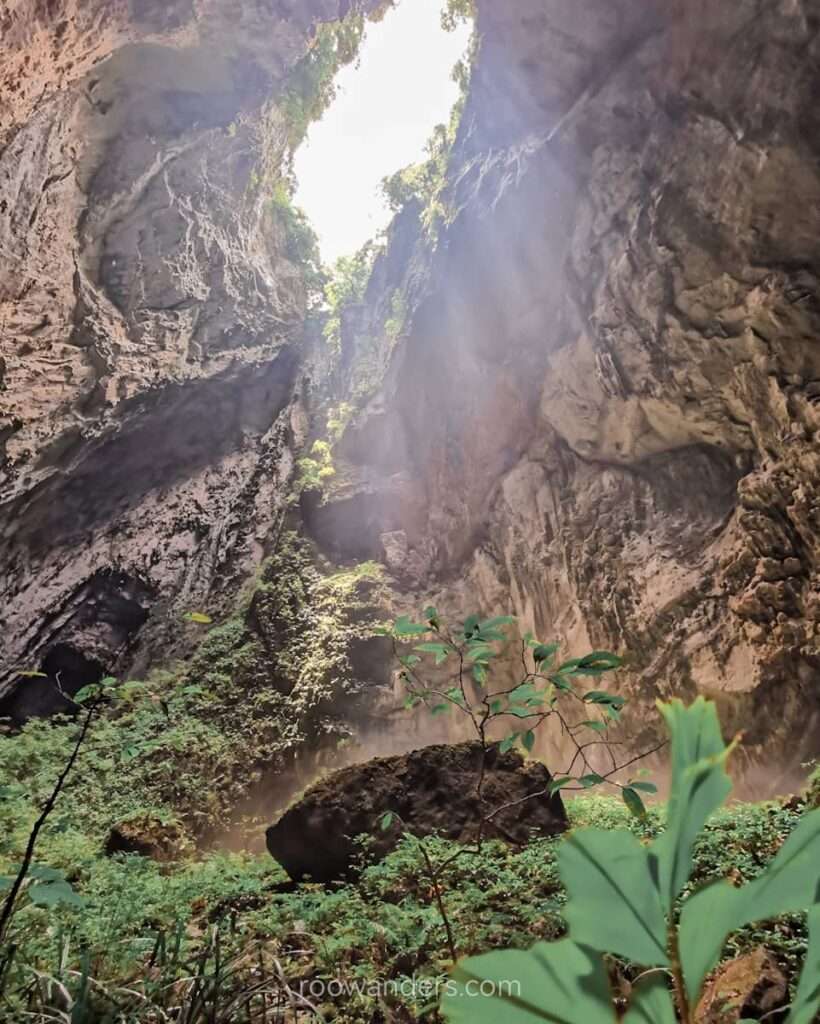
We also spotted remnants of some dented machinery parts that someone said were from a bomb during the Vietnam War.
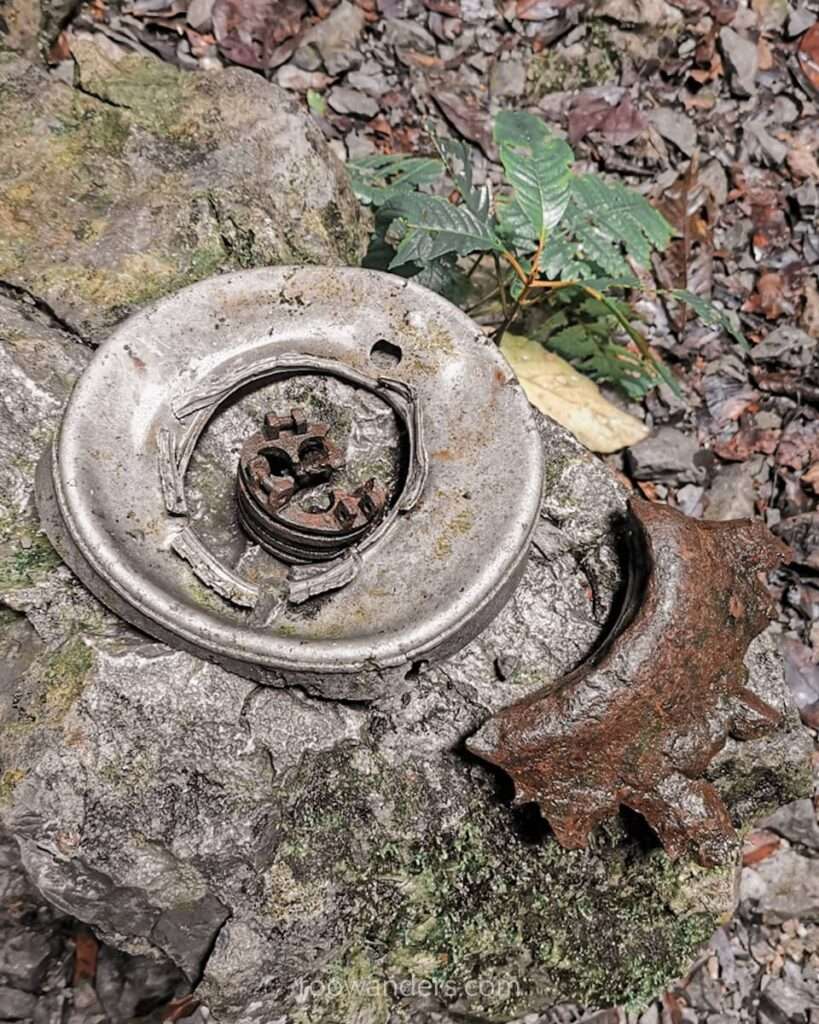
After spending countless moments soaking in the sights and sounds, it was time to head down towards our lunch stop.
But first, a quick stop for a photo with the green gours! I’ve seen phytokarsts from my trip in other gigantic caves at Mulu National Park, but green gours are a first. These are green cave formations with algae growing on them from the ample sunlight exposure.
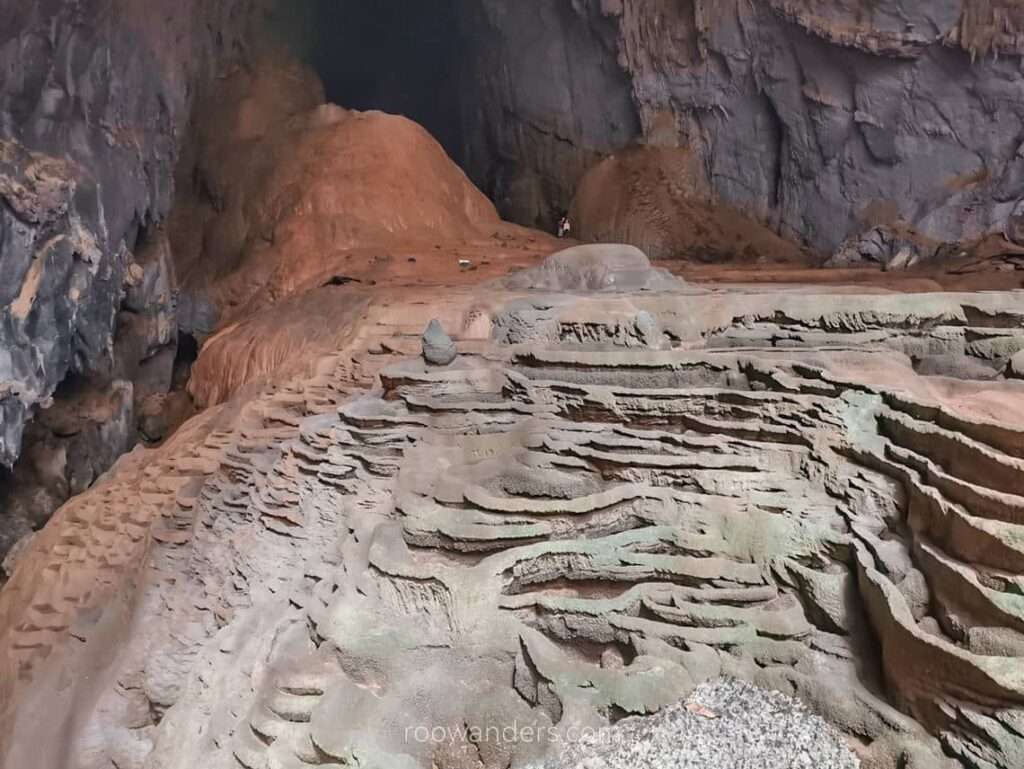
Lunch over A Heartbreakingly Beautiful View
Lunch was a simple but still delicious fried rice with egg at 12 NN. Before we tucked into our meals, we tucked into the sights at our lunch spot, trying out different ways and angles to record what we’re seeing in videos and photos. But there’s really no way you could capture the magical moment with a device. You have to see it to feel the depth of its beauty.
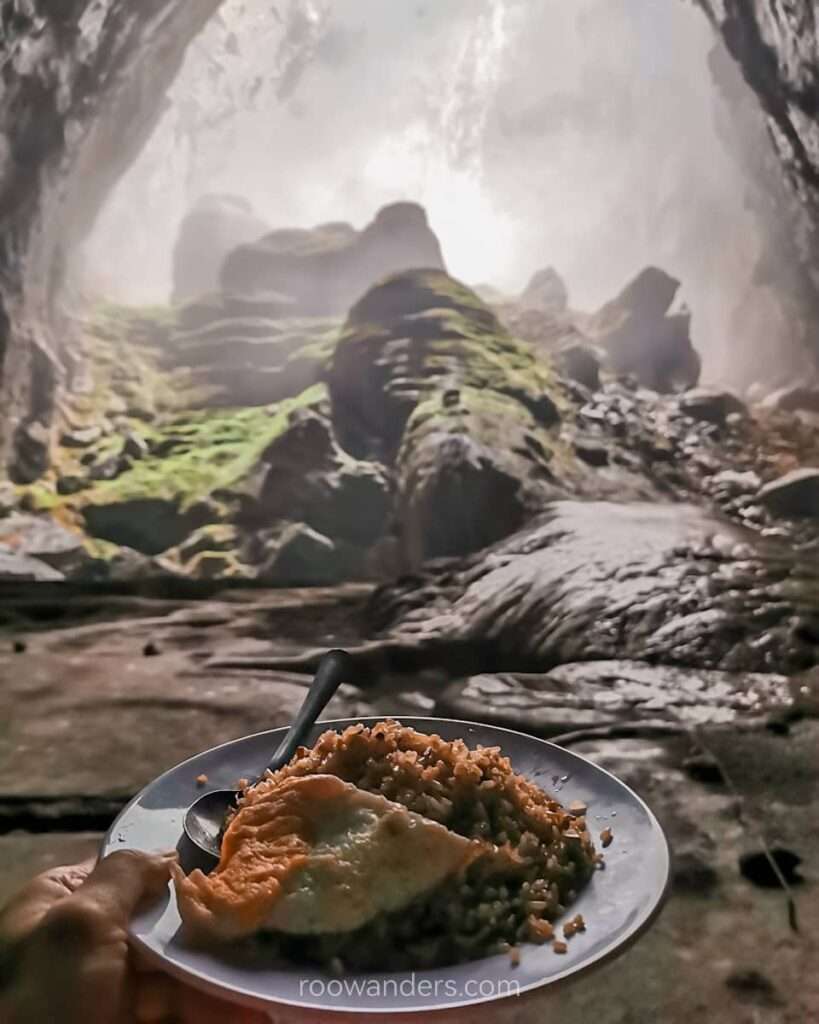
We saw the mist come and go, sometimes disrupted by the evasive sunbeam, as we munched on the fried rice.
Towards Doline 2: Garden of Edam
With our bellies filled, it was time to head over to Doline 2: The Garden of Edam!
Why Edam? Because there’s already a Garden of Eden in the big caves of Malaysia, and Eden is too mainstream. And so, the explorers decided to be different and named the doline after a Dutch cheese.
Some of us climbed over a mountain of rough stalagmite to reach a vantage point for a timelapse video, while a few took their positions on the path towards the garden with their headlamps strategically shone in.
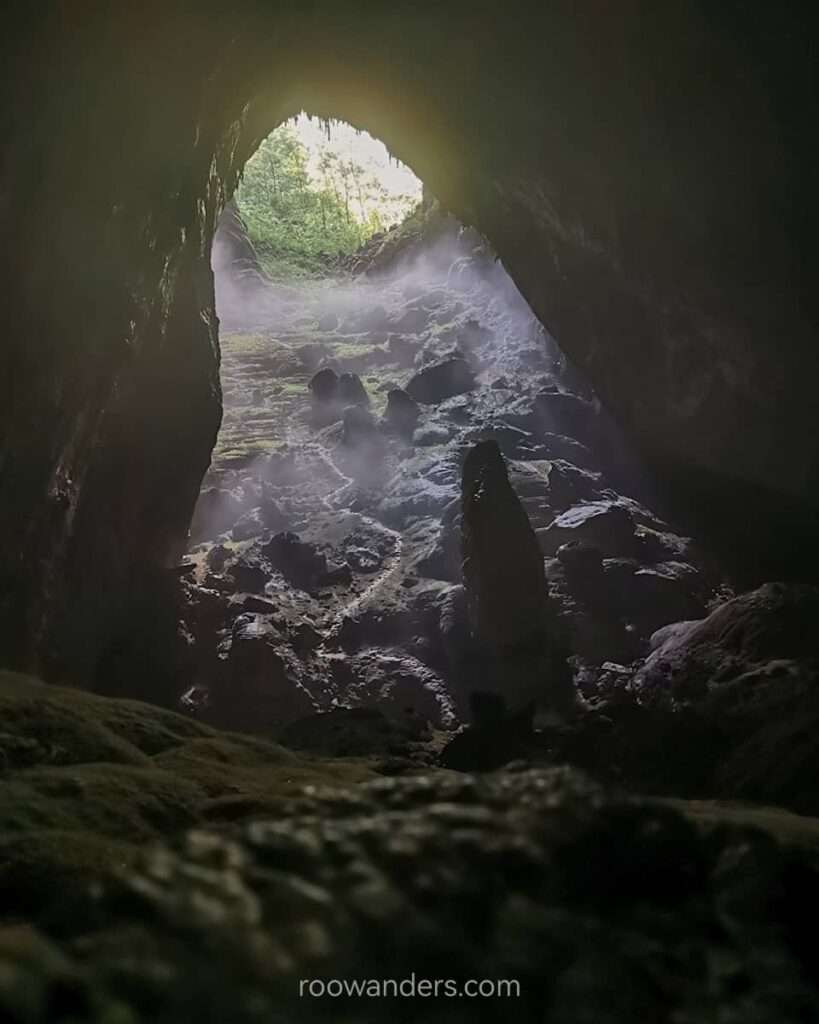
The Garden of Edam does not feature as many attractions – if you could say that – compared to Doline 1.
We were down to the dry and sandy Campsite II shortly after, reaching by 3 PM.
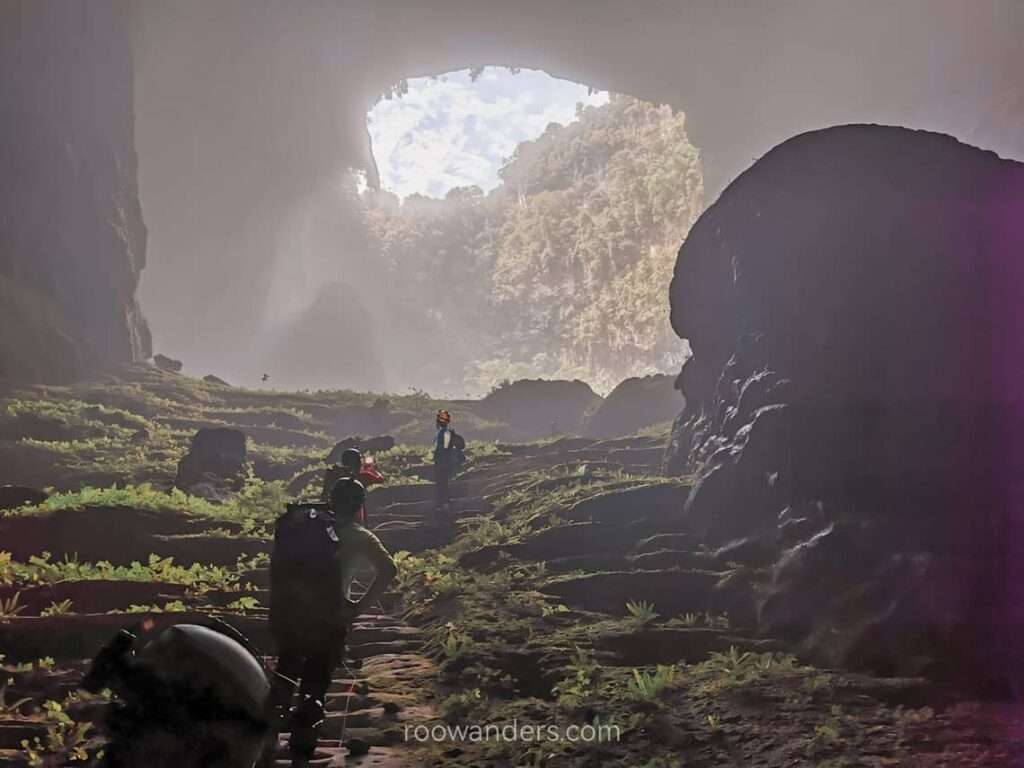
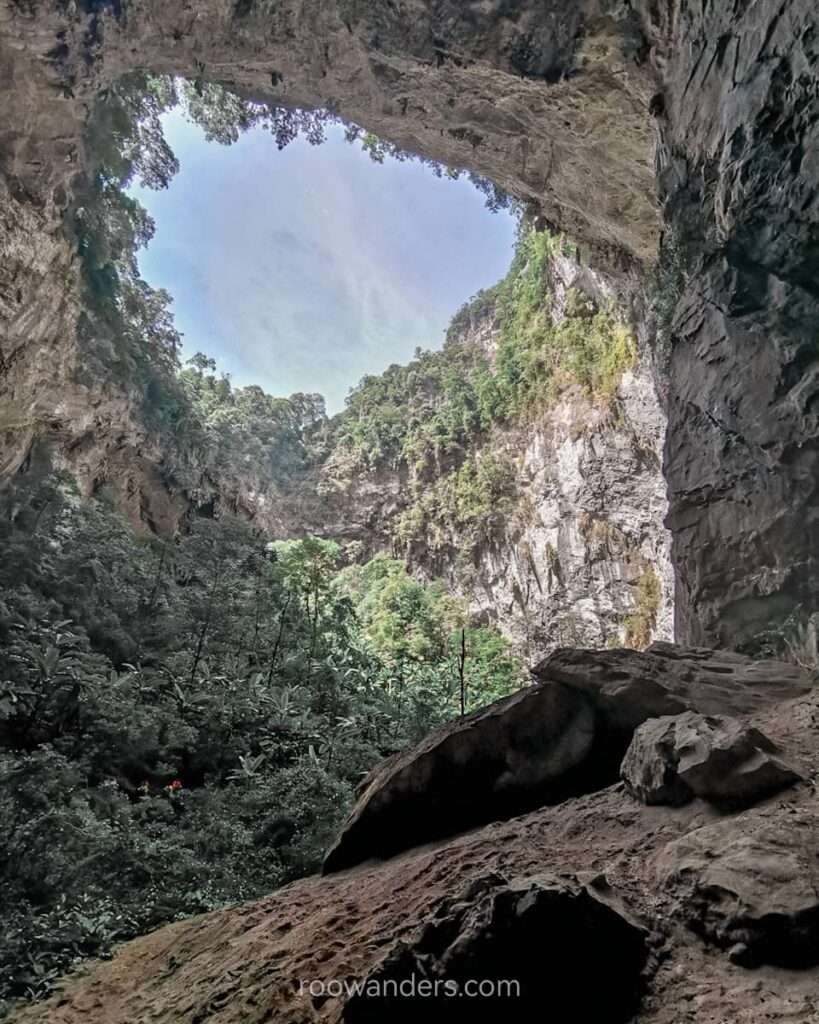
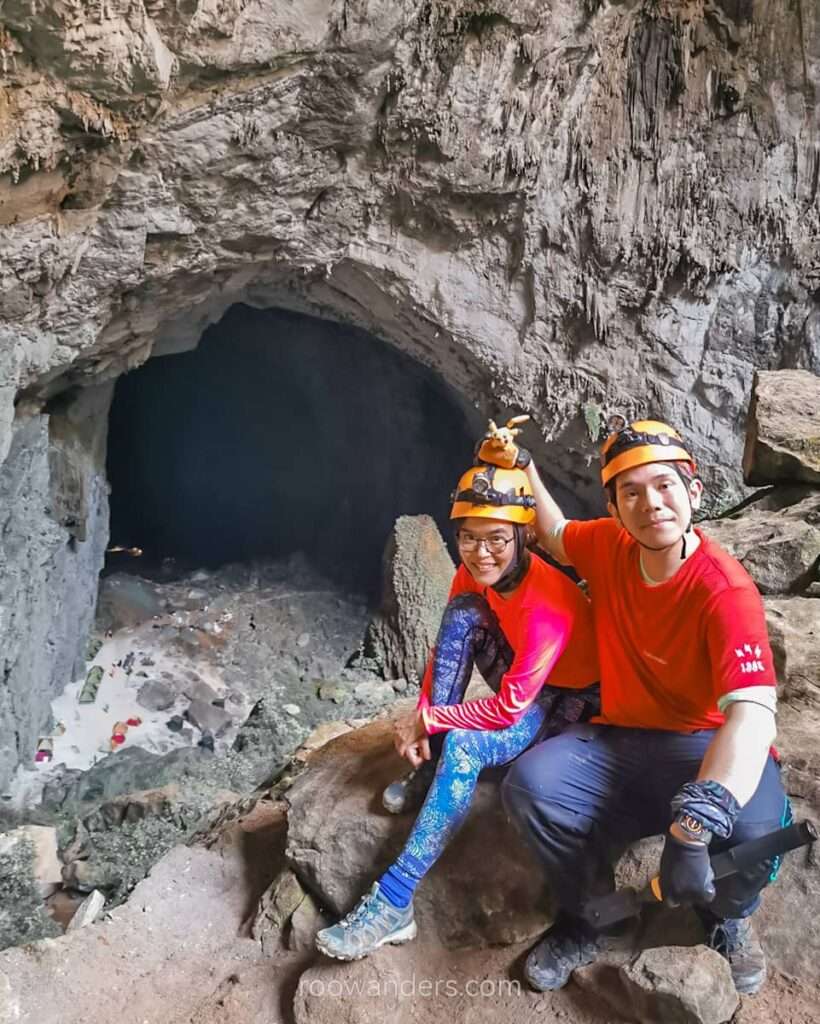
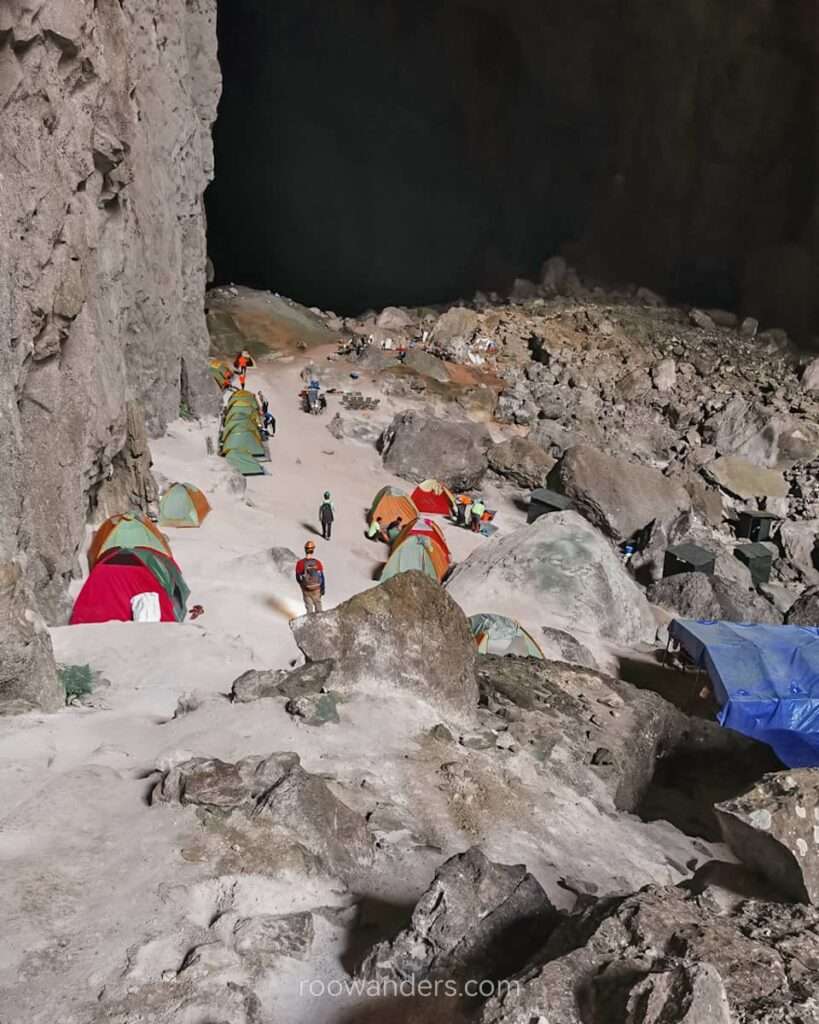
Son Doong Campsite II
The second campsite has a larger view of the sky, and we were earnestly hoping for some night shots. But alas, clouds blocked our view of the celestial sky, so there’s no Milky Way to boot.
As the second campsite is close to the exit, we had beer and canned drinks for dinner, courtesy of the strong porter team!
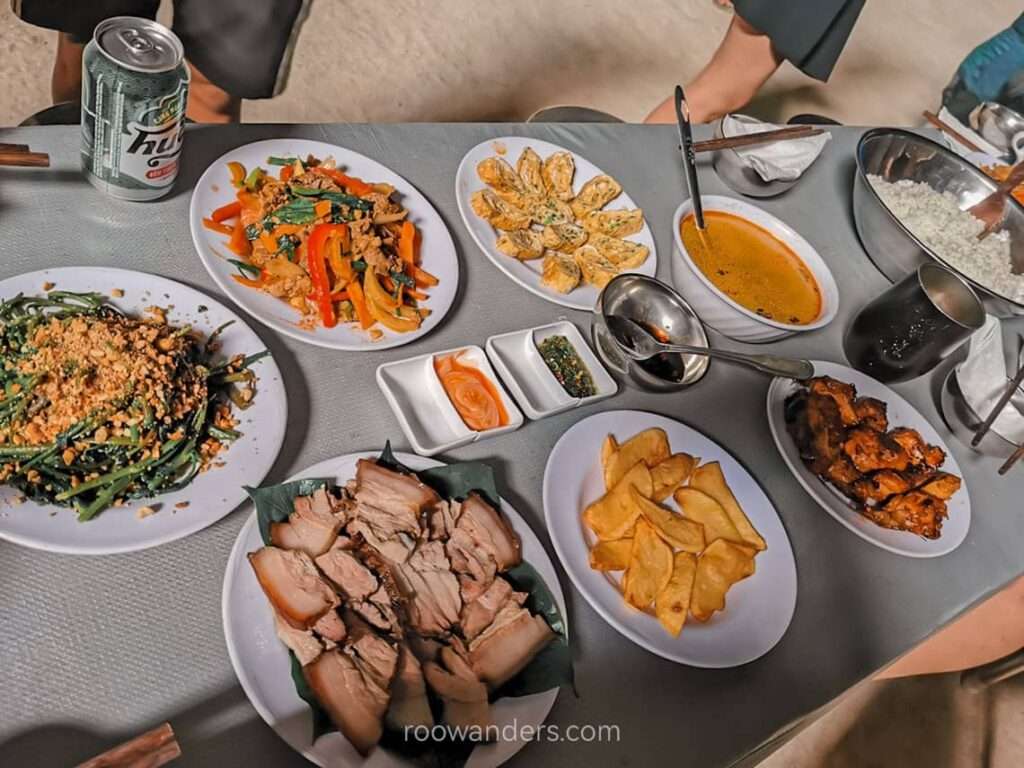
Day 5: Hang Son Doong Day 3 | Over the Great Wall of Vietnam and back to Phong Nha
Mud-travagant
The last day began anew as with all days over a crazy breakfast. This time, it was fried noodles with French toast. Bananas were always there.
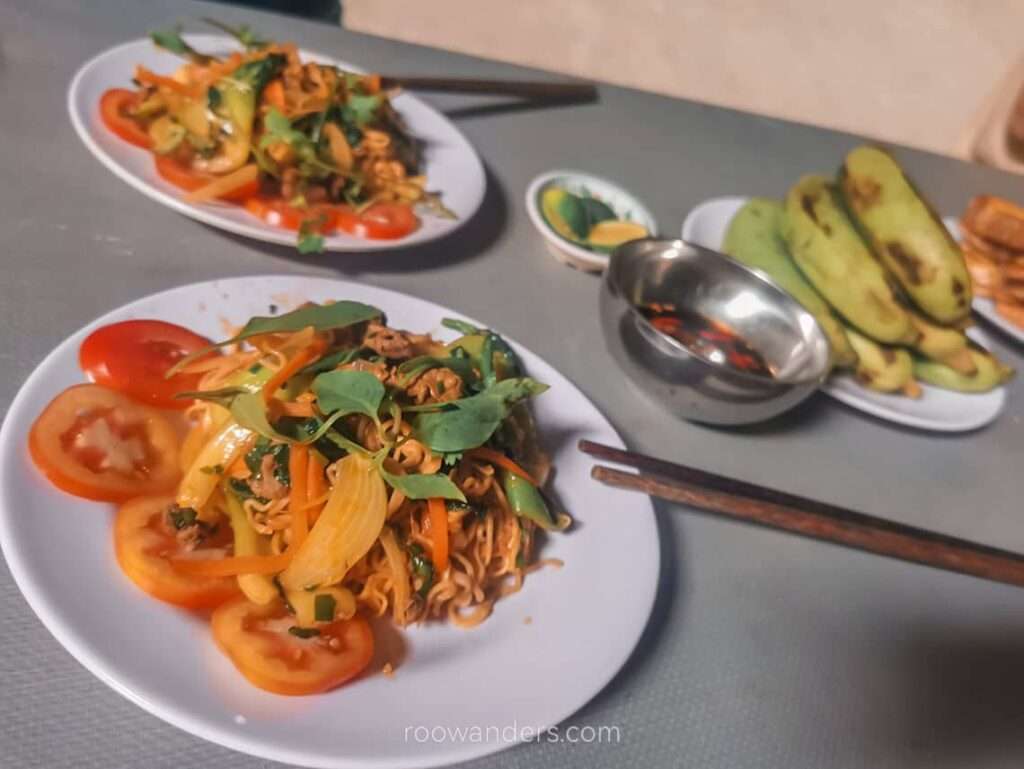
We strapped onto our harnesses that had more straps than the one we first wore into the cave. It’s time to ‘climb’ The Great Wall of Vietnam!
But first, some more photos of a gigantic stalagmite and – finally! – a stalactite. Also cave pearls – and potatoes – sound and look precious in their dams, but are like regular stones and pebbles out of their dams.
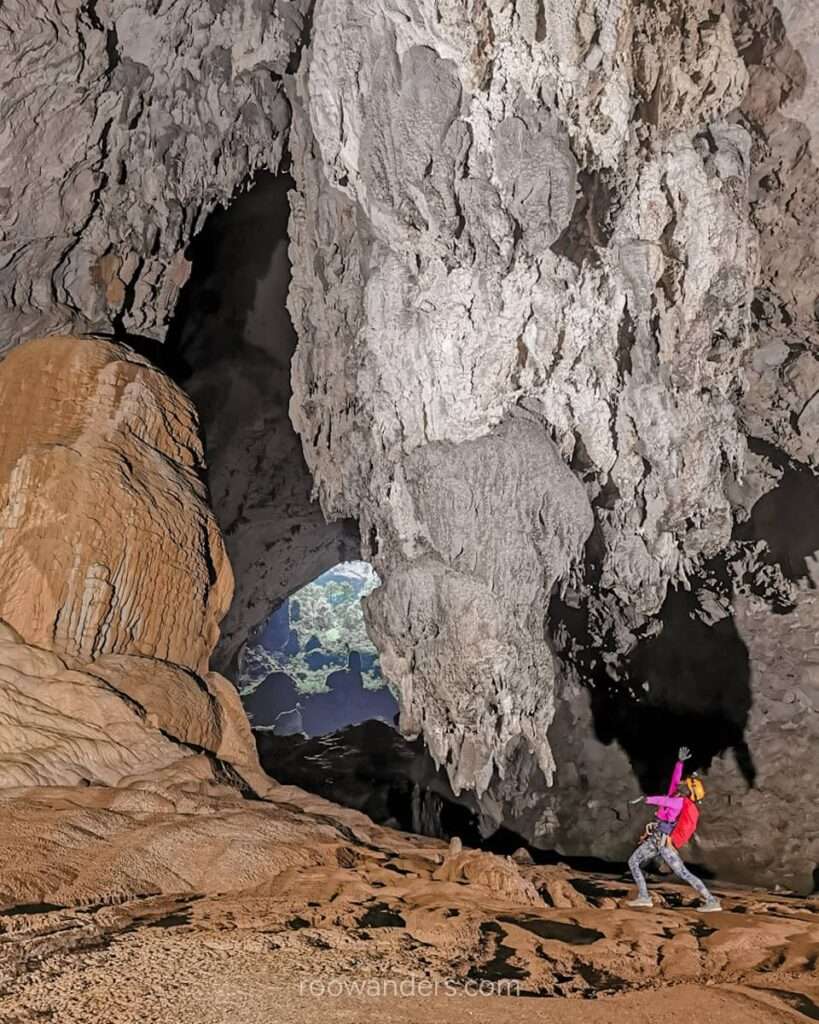
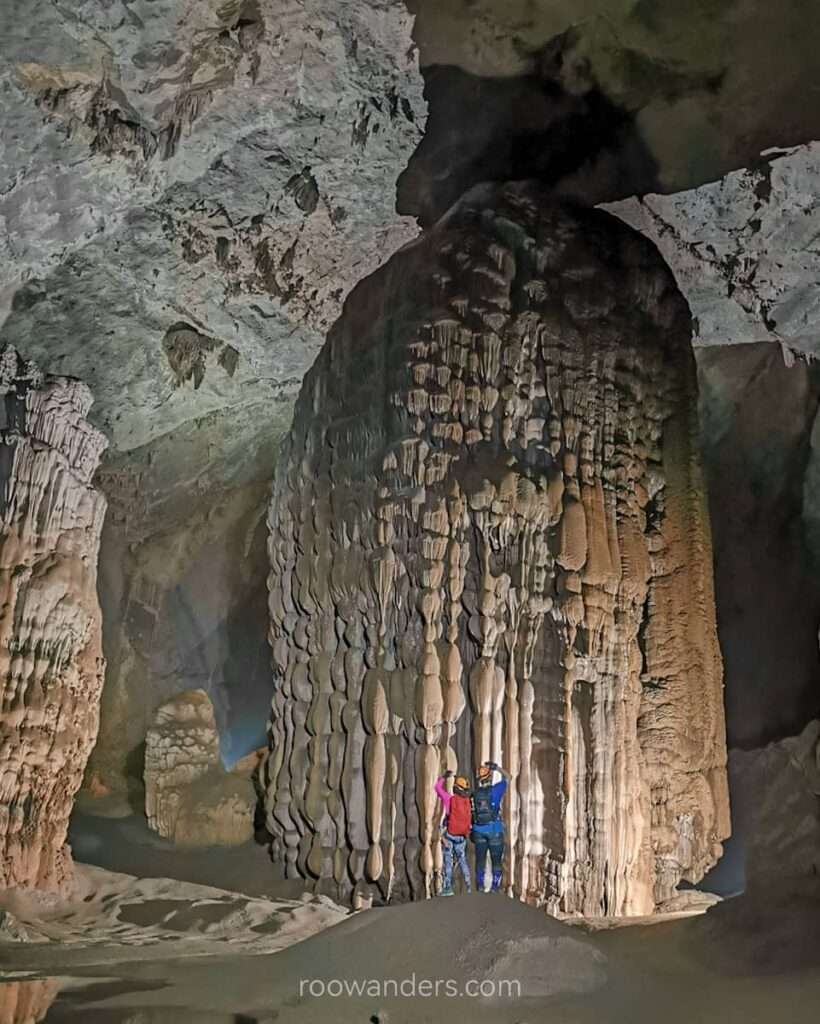
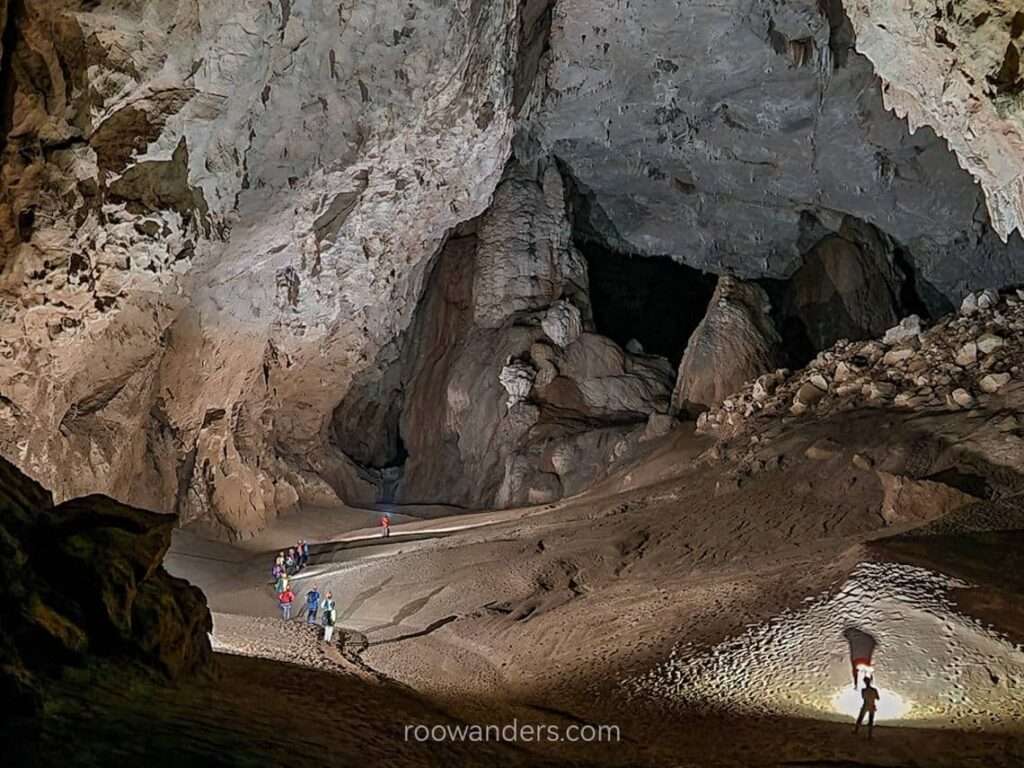
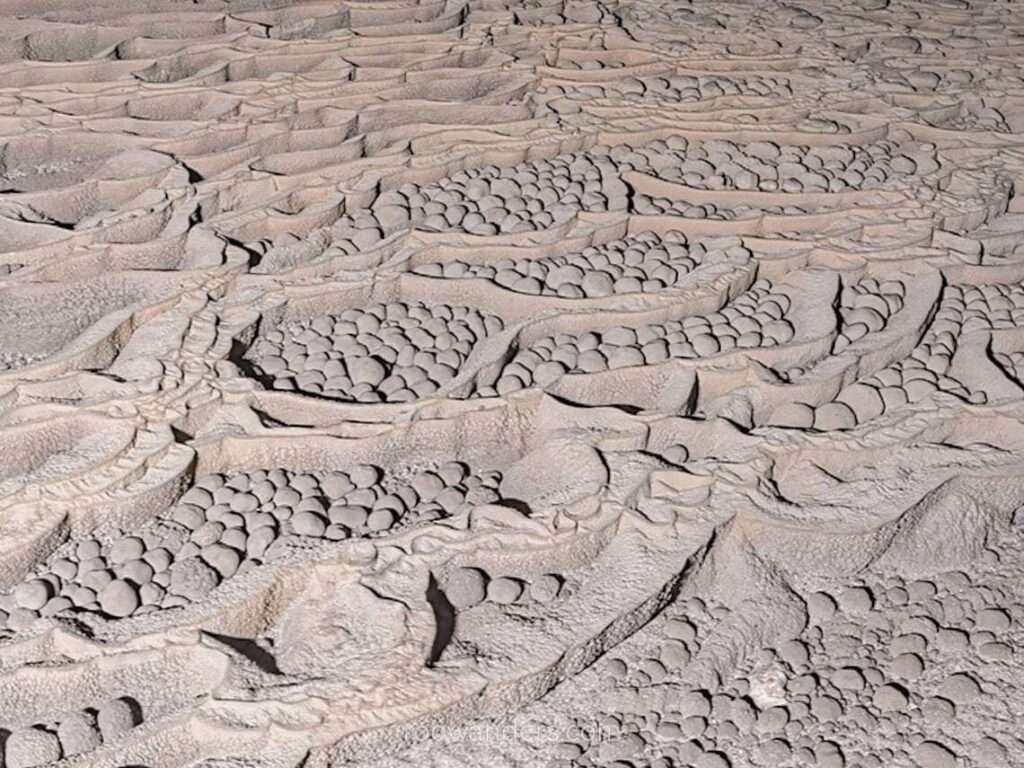
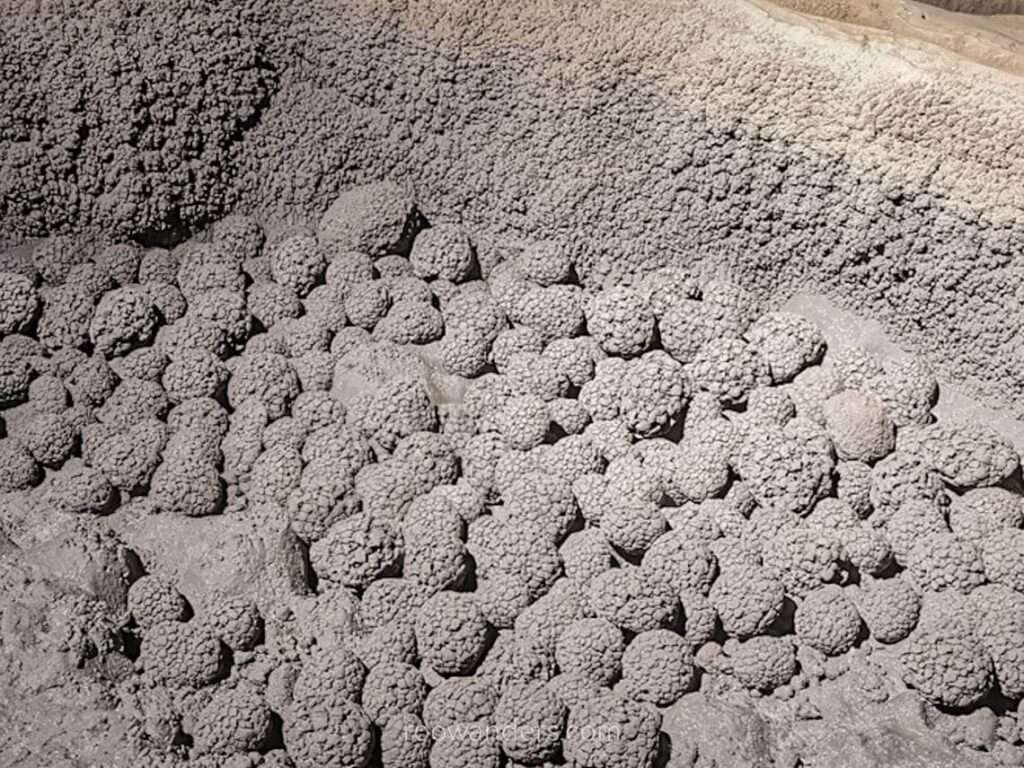
Oh, and the mud-fest! If you were to visit the Wall after a very heavy rainy day, it’s not mud you’ll cross, but a raft to row over a beautiful lake to the bottom of the Wall.
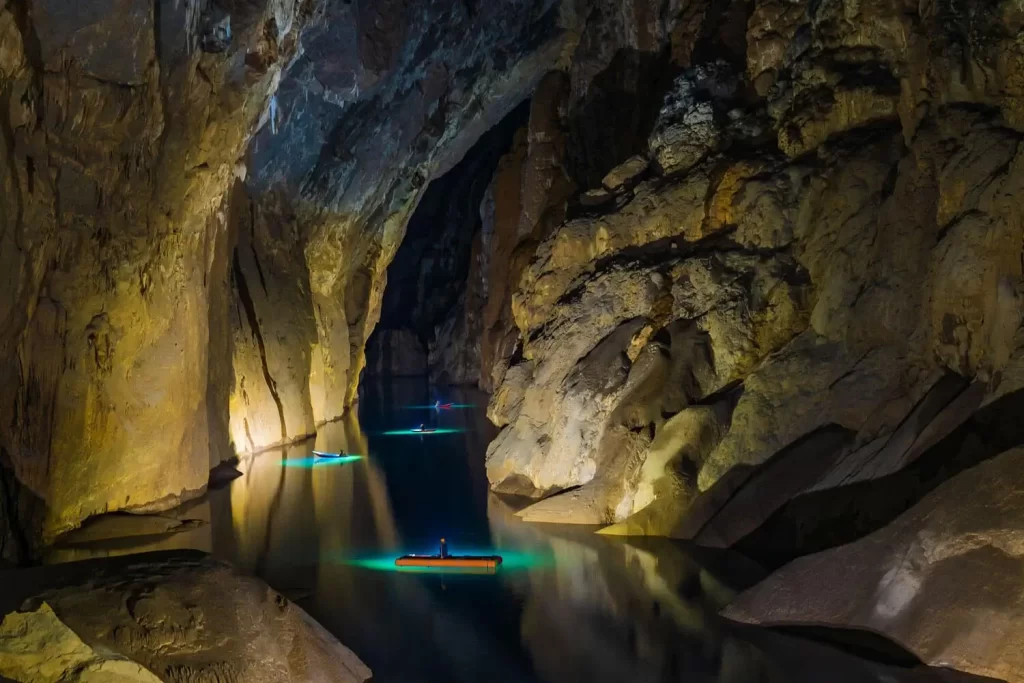
For us, we had muddy trenches and walked like supermodels through a V-shaped valley that has the width of a foot as its breadth. I meant it as supermodels since you walk toes in (to the mud) or shoes gone (in the mud). Some sections had muddy water going as high as my knees.
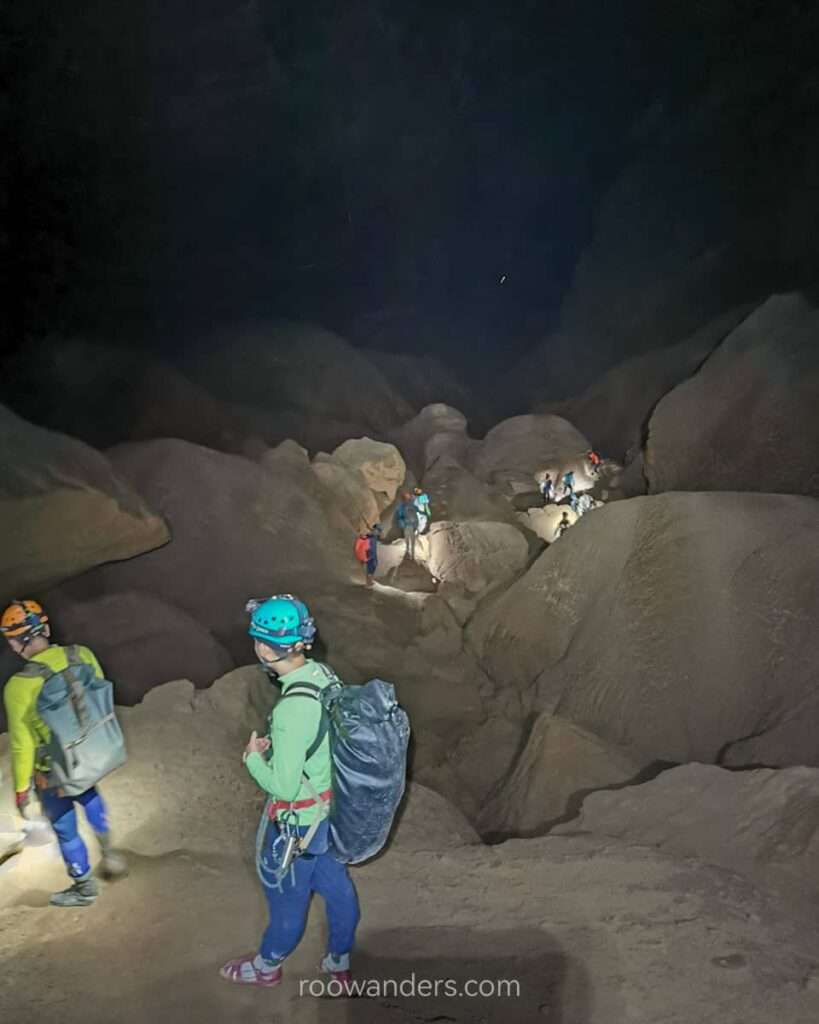
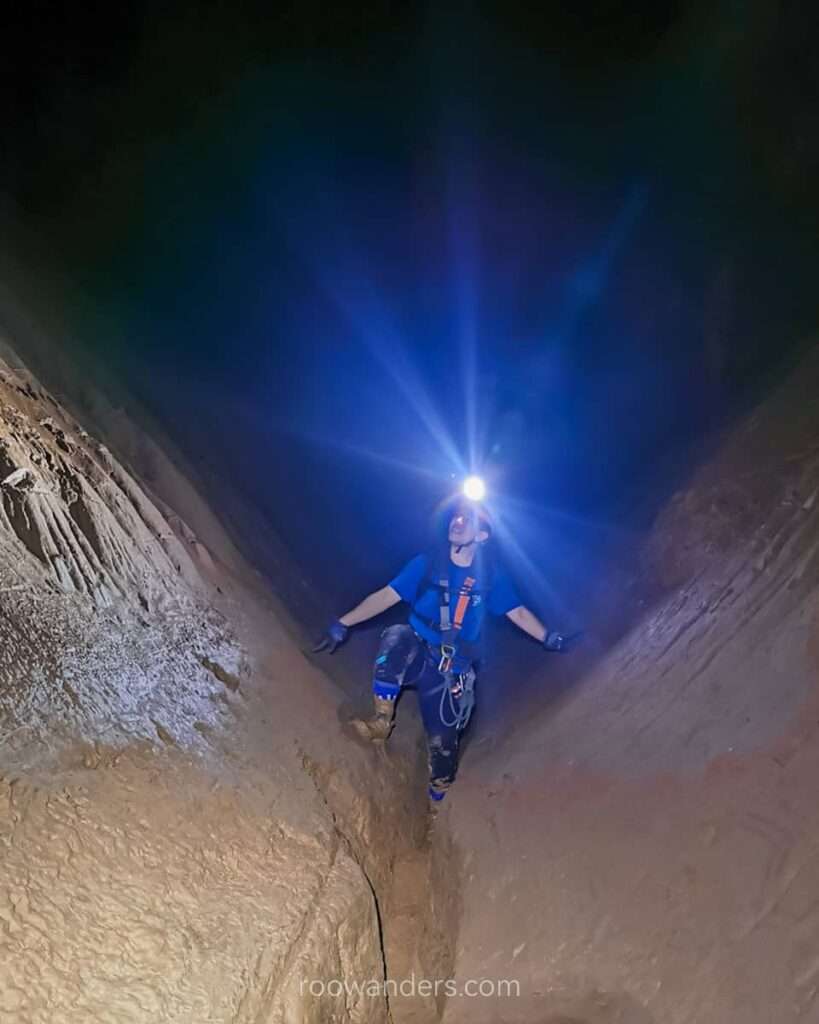
This mud-travagant passage is known as The Passchendaele Passage, after a battle fought in WWI. Compared to the other humorous and light-hearted names in Hang Son Doong, this passage probably deeply soured the mood of explorers then, because why would someone born after WWI named the place after a battle in WWI? The name is also too long and foreign - it’s not even in Vietnam - for someone, who does not study history that intensely, to relate.
The Great Wall of Vietnam
Scaling the wall was very different during the exploratory times. Back then, it took explorers two days to crack their heads for a safe way to climb the delicate flowstone wall. Now, it took us less than an hour with an 18 m stainless steel ladder and climbing ropes over 45-degree slopes with an assistant guide pulling our weight from above.
But before we could even hop onto the ladder, we had to rid ourselves of the mud. The team had cleverly directed a small stream into a bucket with a brush tied to it.
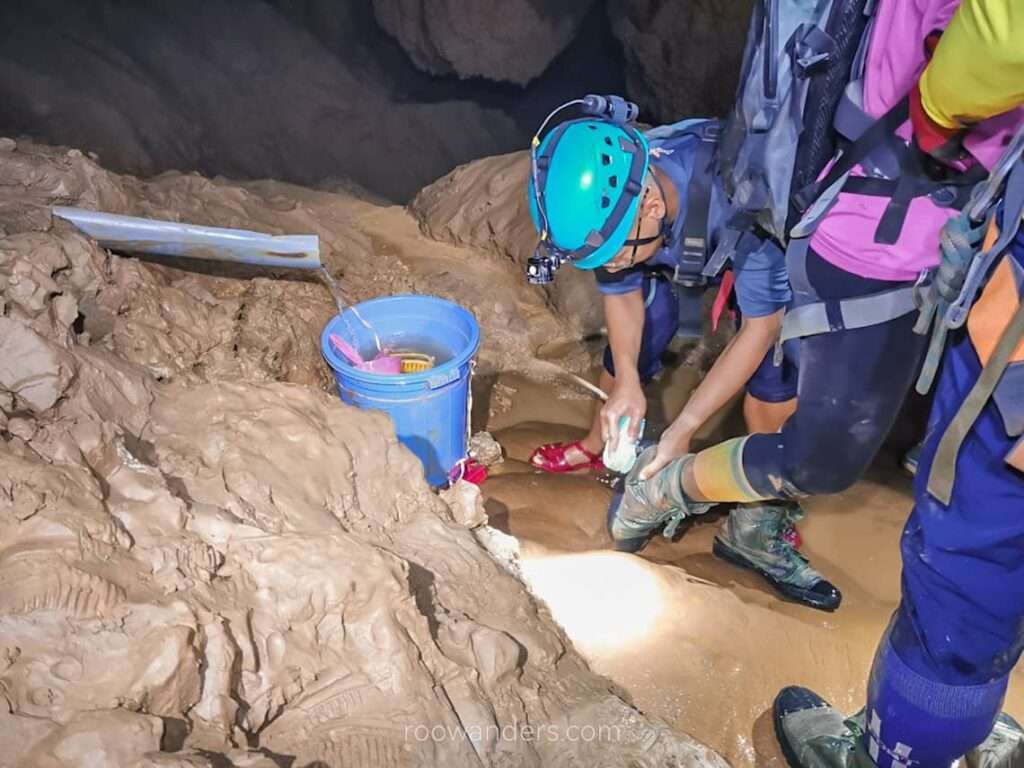
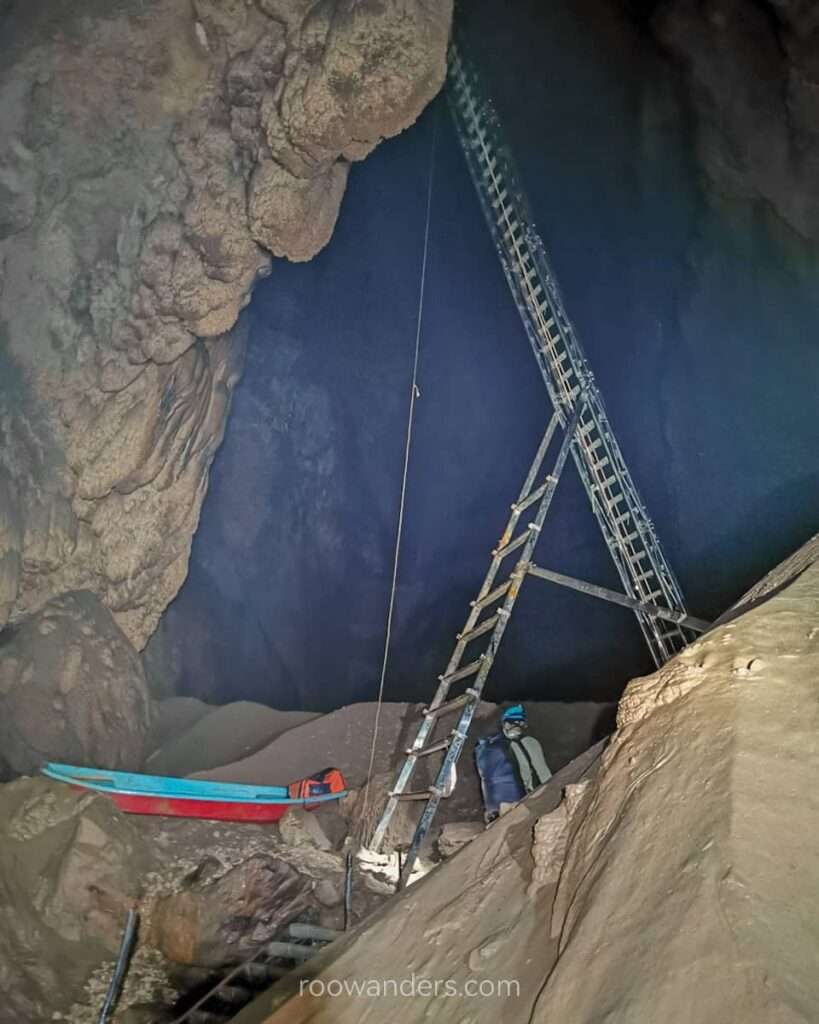
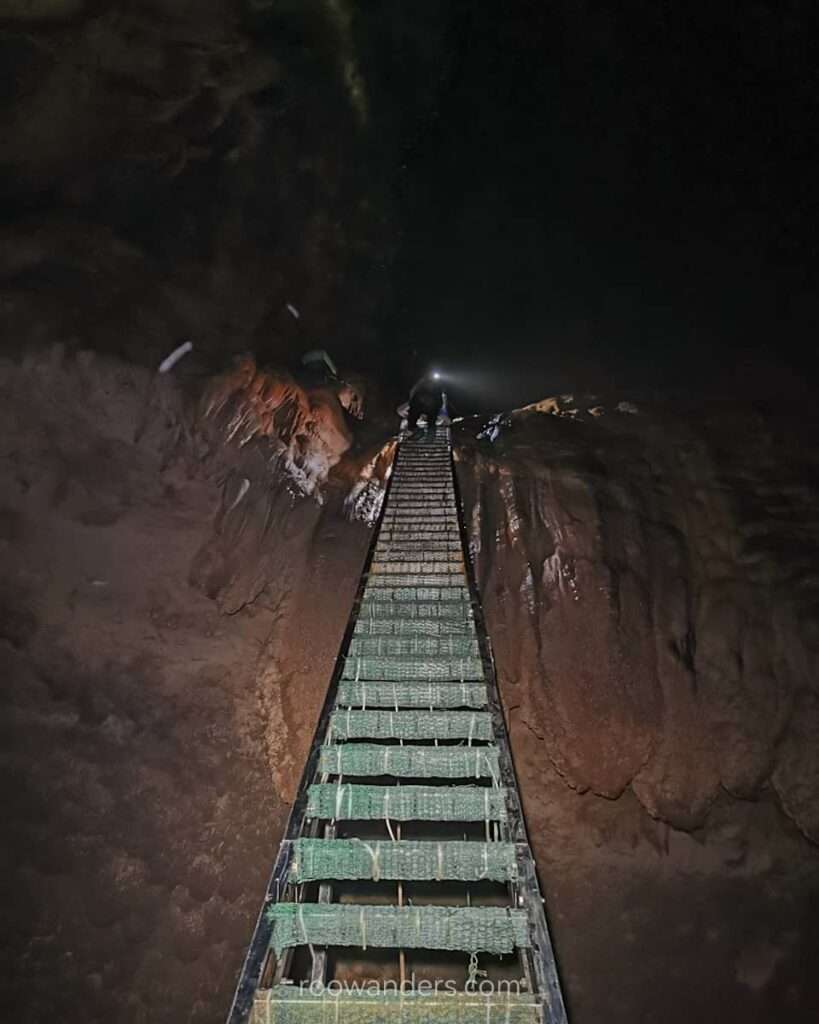
Climbing the 18 m ladder was easy.
Climbing the first section of the slope was like a warm-up for the half-squat-fall-back position we had previously learnt.
Climbing the second section became increasingly easier after the warm-up. We had the guide assistants pulling our weights from above as well, and I was at the top within minutes. Waiting for our turns took a longer time.
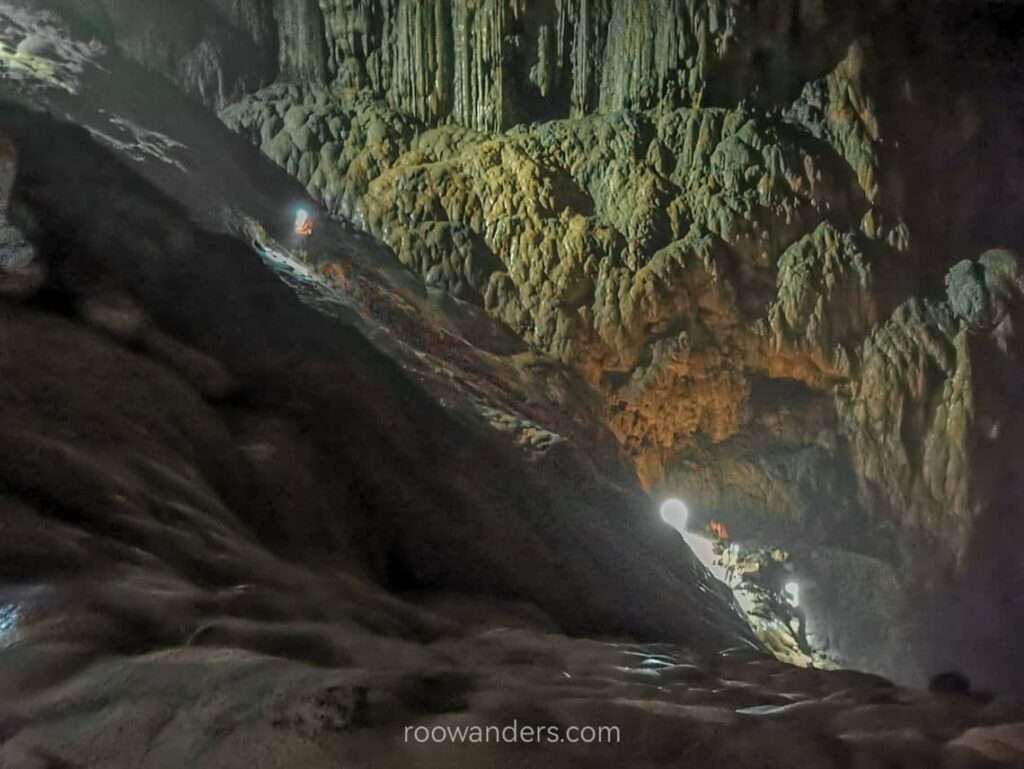
They said lunch, consisting of a yummy beef stew with baguette and cold drinks from outside, was light, and we would enjoy another complimentary light lunch/ snack at Chay Lap. For me, it was the last tasty camp food before we left the caves, and I might have taken more than what was supposed to be a light lunch.
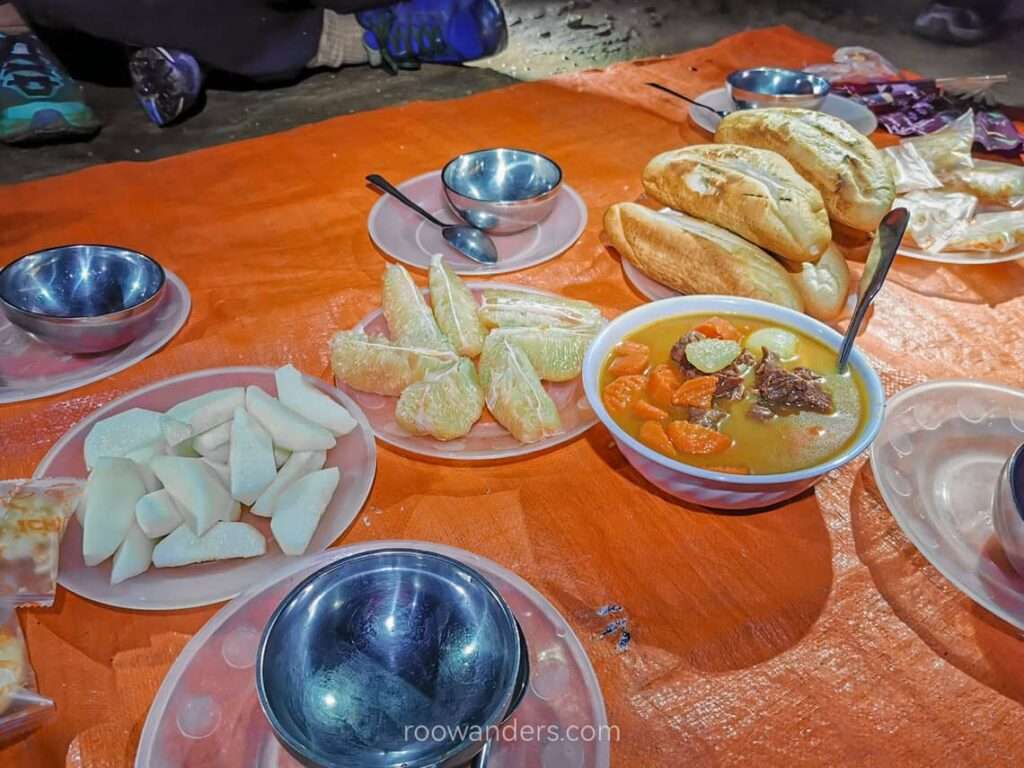
Bidding Hang Son Doong Goodbye
The distance from the lunch stop to the exit was a short and easy 500 m. We also saw bones of an animal (they said it was a deer but who would have known?), already calcite-covered for N years.
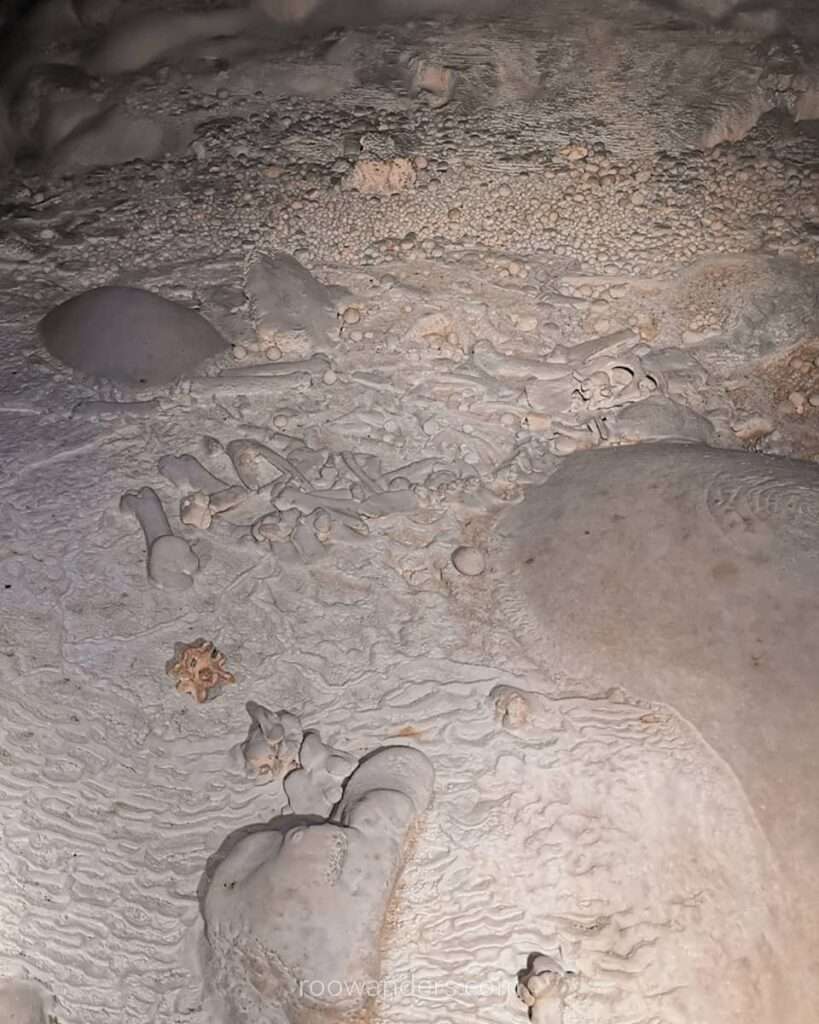
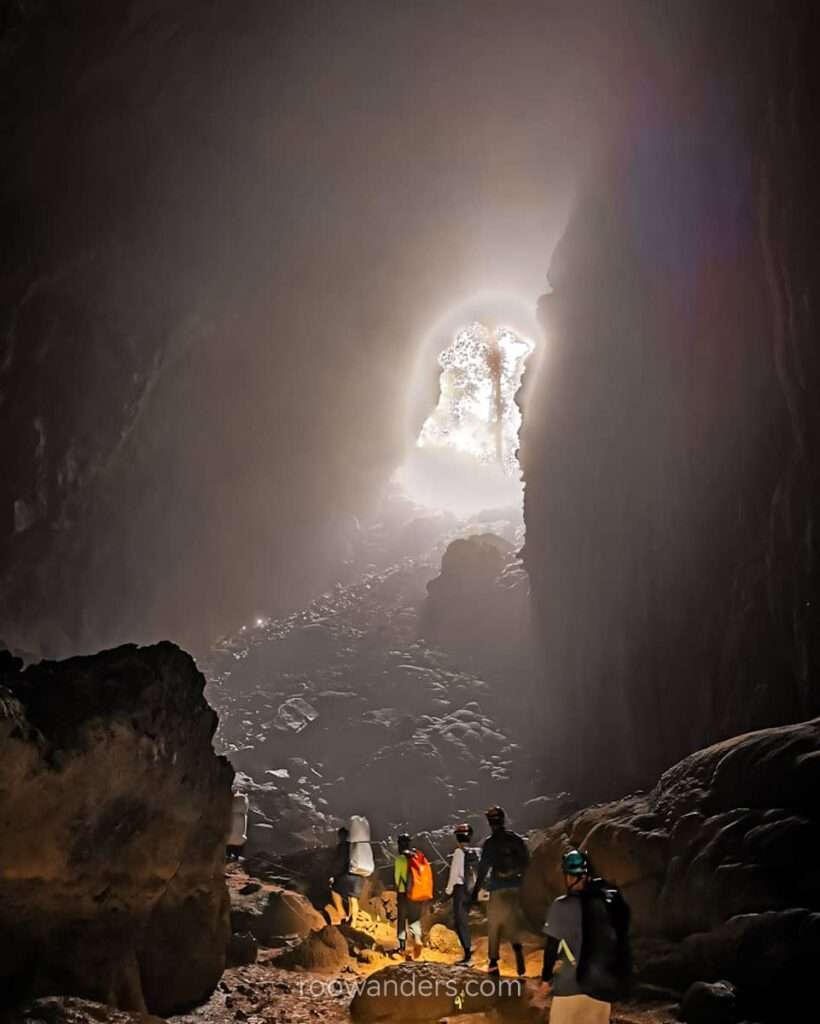
Jungle trekking that day was different from jungle trekking on D2 and D3. There were significantly more razor-sharp jagged limestones and unstable rocks. Those sharp rocks were similar to the ones I faced for my Mulu Pinnacles climb, where a woman fell and cut herself deep on her inner thigh. She needed stitches.
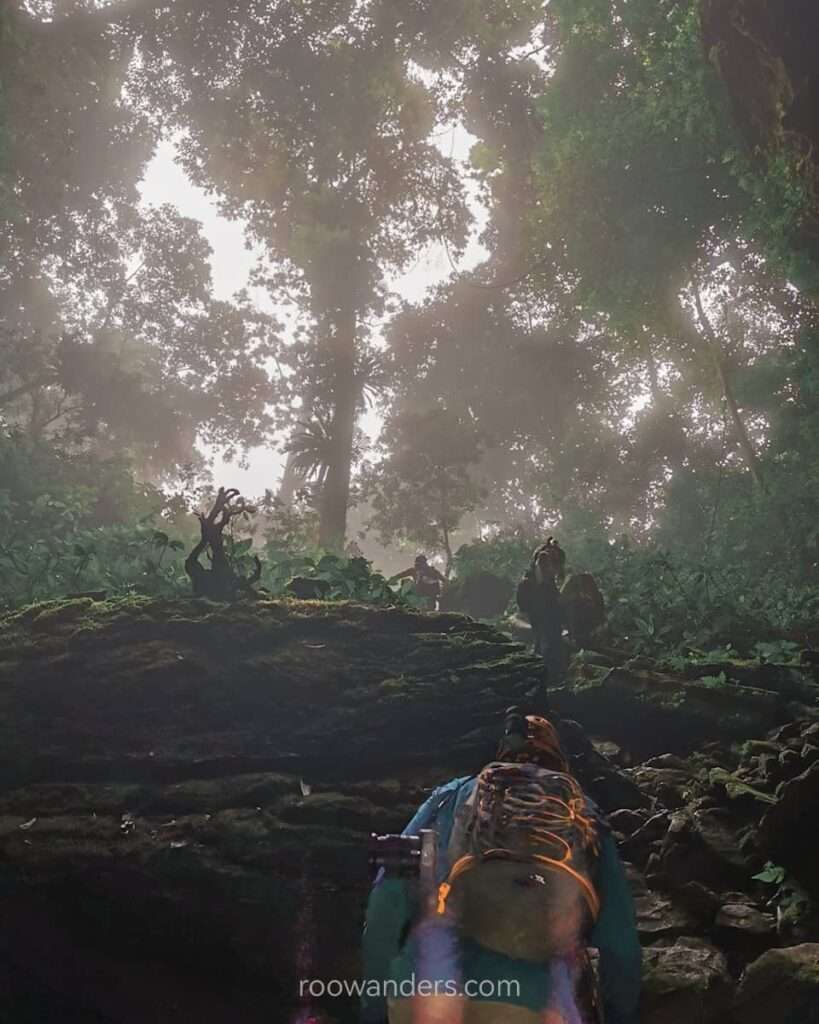
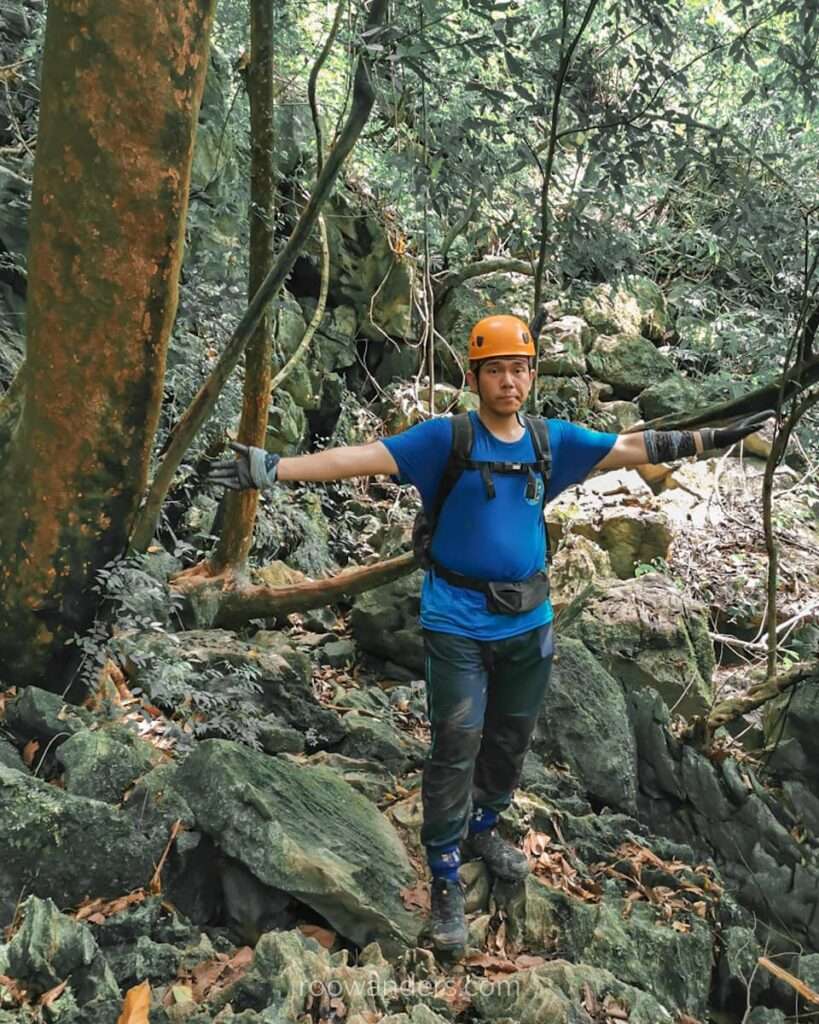
It took us probably an hour from the Son Doong Cave exit to Ho Chi Minh Highway. The trek plateaued once we reached the bottom of the hill with many butterflies.
Bus to Chay Lap Farmstay
There’s not much to note for the 45 mins bus ride back to civilization. We were all too sticky with wet feet mushed in wet shoes to pay attention to anything.
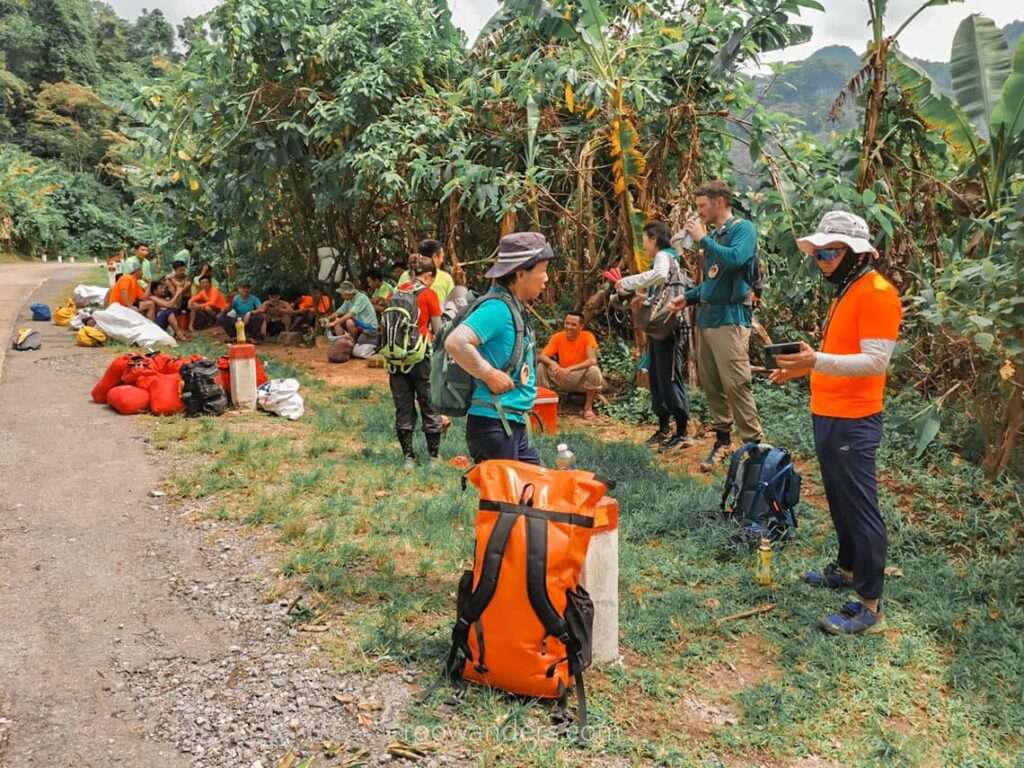
The welcome champagne and cold towel from Chay Lap Farmstay excite us for what’s to come – a nice hot shower!
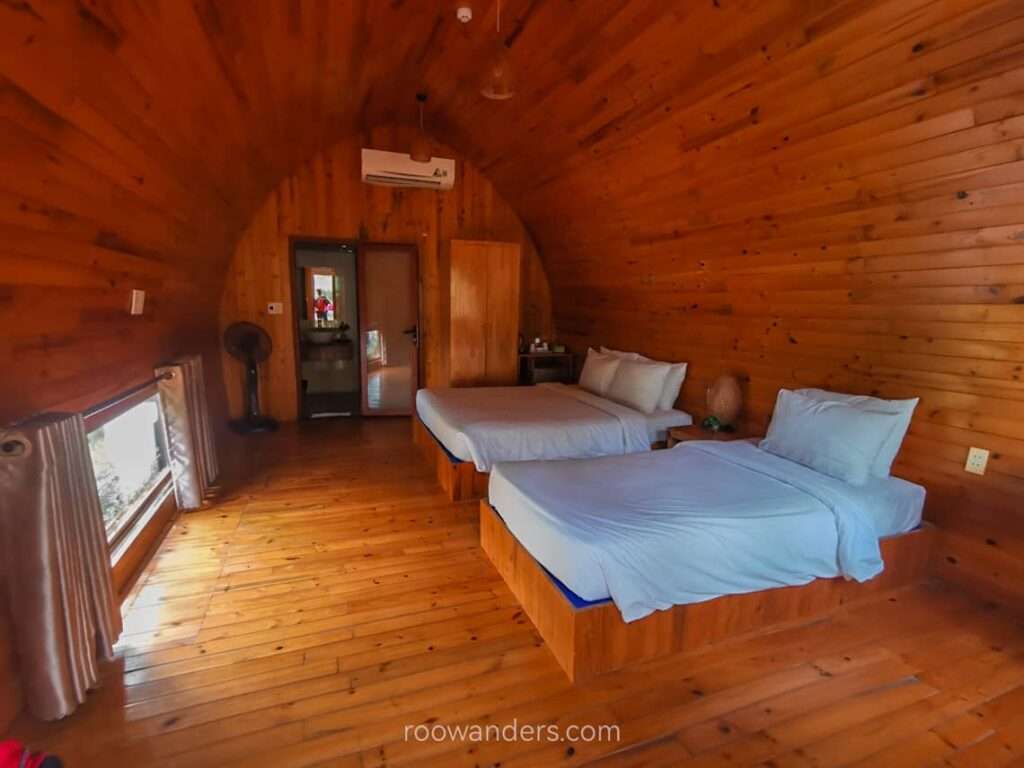
Farewell Dinner
After the wash-up, we had our last dinner together with the team. It was the same setting as the dinner of Day 1 with the same people but in a different mood. Food was, obviously, less tasty than camp food. We exchanged contacts (and hundreds of photos and GBs of videos), took farewell photos, tipped, bought a photography book and bade everyone good night.
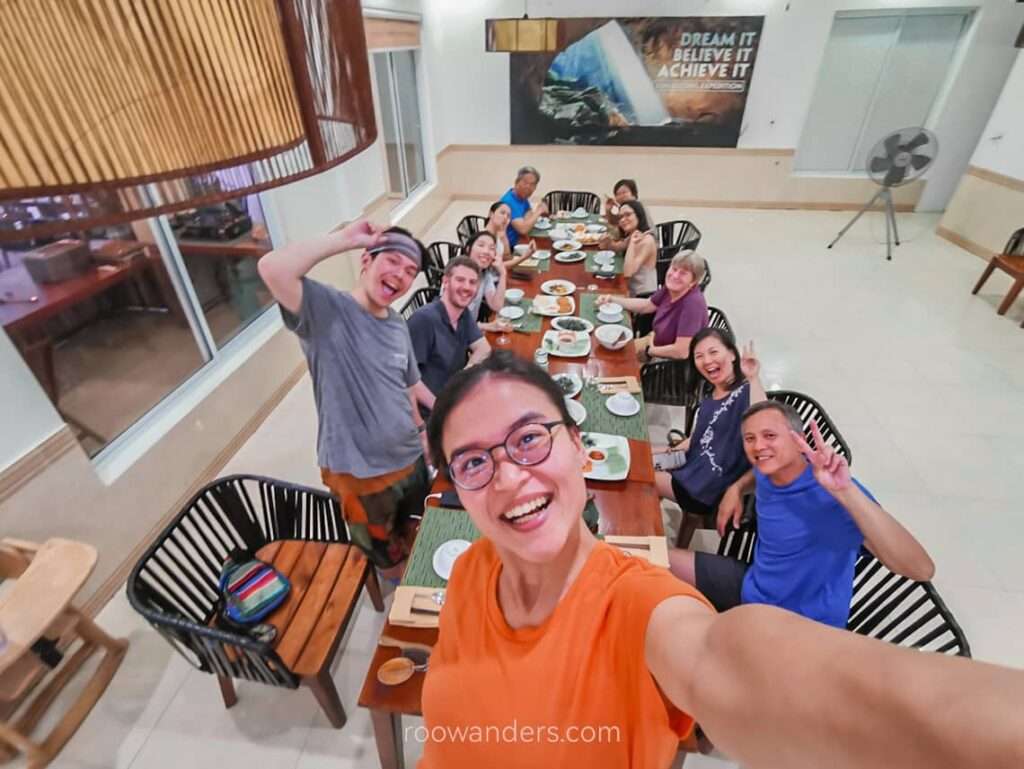
Day 6: Leaving Phong Nha
Phong Nha to Dong Hoi
Some participants left in the early morning for the train to Hanoi, or the flight to Ho Chi Minh City. Transport to Dong Hoi was provided, and our lead guide took note of everyone’s departure during the last dinner.
Chay Lap has a decent variety of dishes for their breakfast, but nothing comes close to the overkill breakfasts of the last three days!
For us, we maxed our time in the comfortable room until it was time to leave for our next destination. Unlike others, we booked a private car to take us to Hue, stopping by some stops in the Demilitarised Zone (DMZ). We had the drop-off arranged at Oxalis HQ since Chay Lap was considered out of the pickup zone of Phong Nha centre.
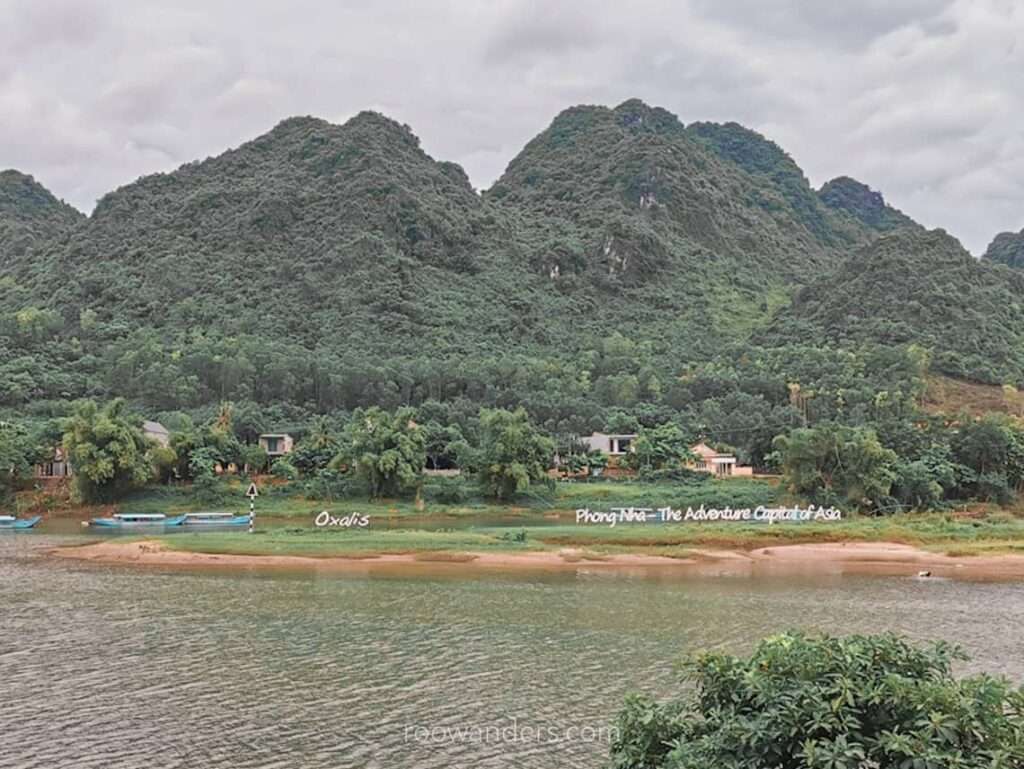
Post Trip Activities
If you have more time to spare in Phong Nha, here are some ideas for post-Son Doong activities:
- Kayak/ cycle. Chay Lap offers discounts for kayaking and free rental bikes.
- Tour the other caves and attractions around Phong Nha. Some famous ones include Paradise Cave, Phong Nha Cave, and the Dark Cave. There are full-day tours for these at good prices with lunch included.
- Massage and relax. Chay Lap has massage services.
Beyond Phong Nha, head North for Hanoi. You could make a stop at Ninh Binh. Head South towards Danang or Ho Chi Minh City, with the conventional stops at Hue, Hoi An, Muine and Dalat. I took the opportunity to tour around the DMZ on the way to Hue.
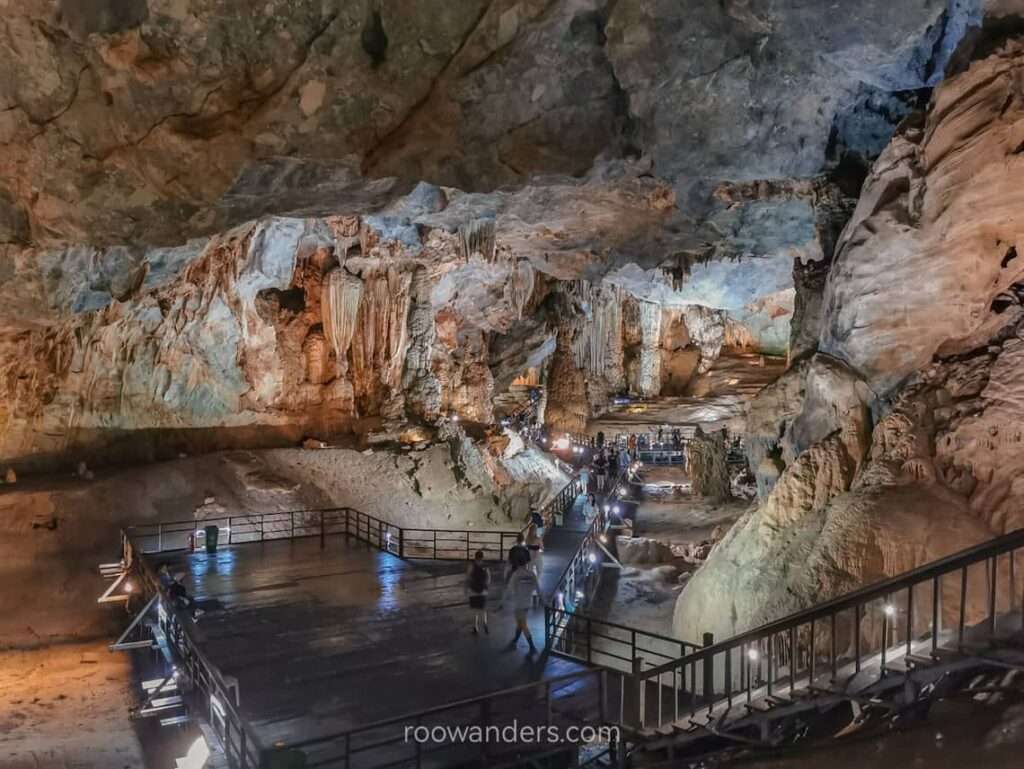
More Caving Expeditions I Hope To Do
Phong Nha is a cave wonderland with caves providing different challenges and sights to experience. Here are two that I hope to visit someday:
- Hang Va. Ho Khanh, the man who found Hang Son Doong discovered Hang Va too. Hang Va has strange cone formations, an underground waterfall, an emerald river, and many impressive stalactites. The entrance of Hang Va is near the exit of Hang Son Doong. There’s only one tour to Hang Va from Oxalis and it costs USD 426 for 4D3N.
- Hang Tien. For the strange tornado-like hole in the ceiling of one of its chambers. There are three tours of varying lengths to pick from, but I might go all out for the 6D5N with camping in jungles, an abseil and a flying fox, and eight caves to explore. Prices range from USD 355 for a 3D2N to USD 774 for the 6D5N.
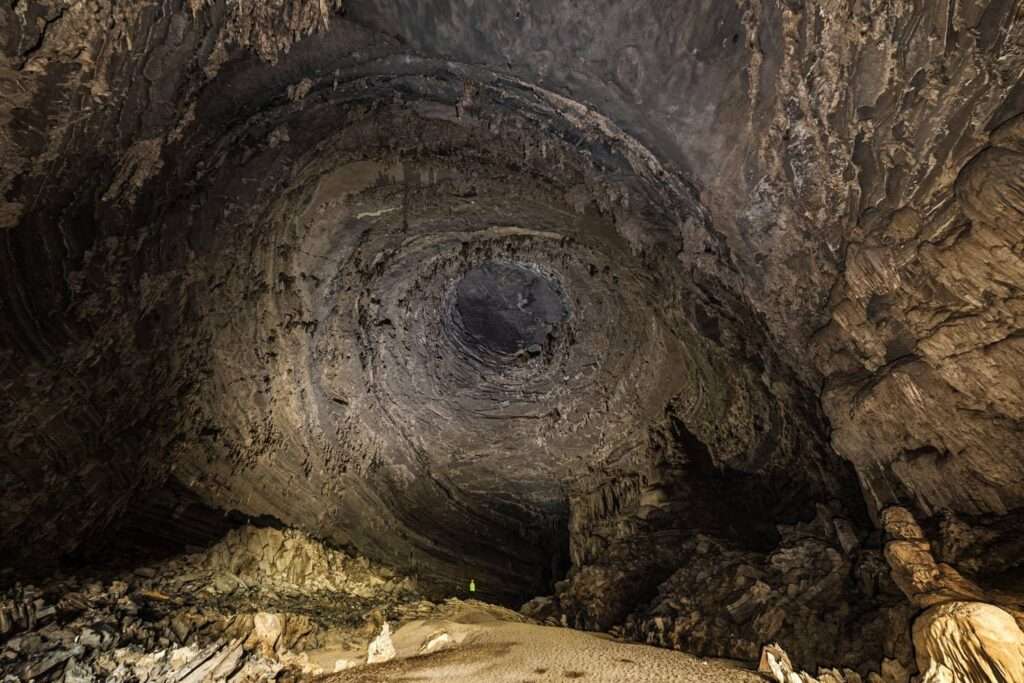
Conclusion
To wrap it up, the USD 3,000 took me a lot of deliberation, time to save, and anxiety when I transferred such a big sum overseas. Money aside, it also took me a year to wait for the trip. Someone in our group waited even longer, having booked before the pandemic!
But the expedition was well worth the wait and moolas. I had a memorable good time that not many would have the opportunity to experience. More people have felt the winds at the peak of Mount Everest than the sunbeams in Doline 1. This is a strange but painfully beautiful part of nature that I’m glad I’ve savoured in real life.
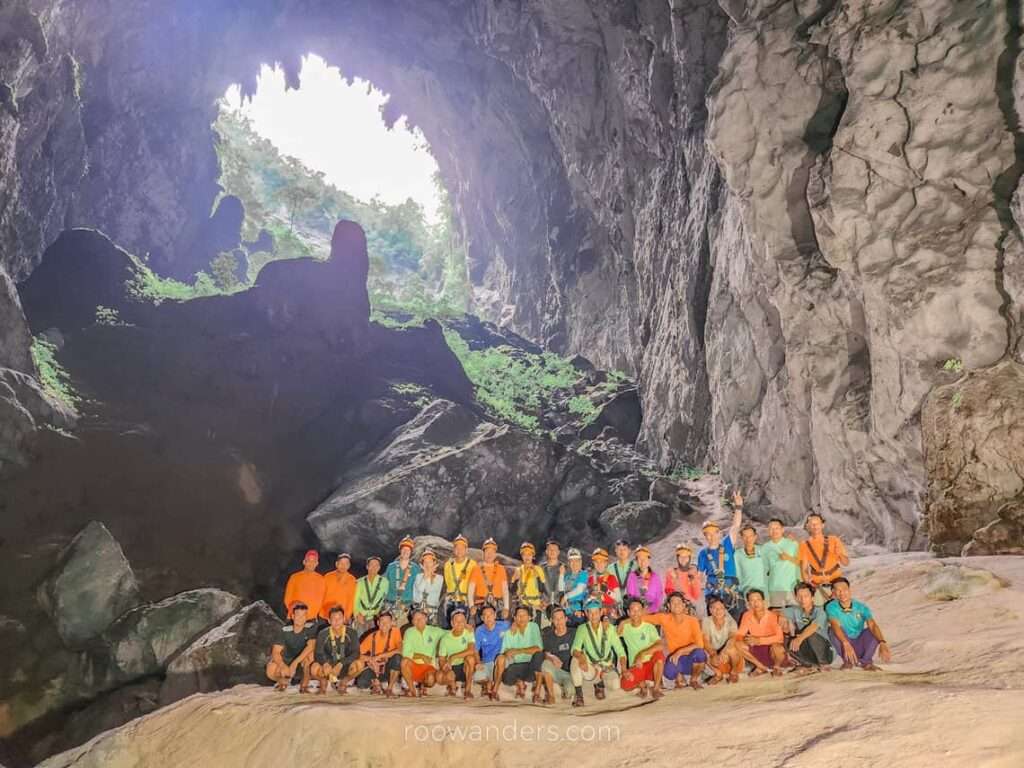
Tips To Take Note
- Book early. It’s expensive, yet it’s booked months in advance. Make sure you book your transport early too!
- Mind your fitness. Or you’ll feel the pain and soreness at the end of the day.
- Pack sensibly. Wear light and bright clothes so your photos pop.
- Ease into your gear. Make sure the shoes are workable in the river and over slippery surfaces. Have a bag with straps such that they do not move around your torso too much. Waterproof dry bags are great since they don’t collect as much dirt, but the back, where your skin is in contact with, can get hot and stuffy.
- Have good cameras. An action camera is small and convenient to carry around. My Huawei P30 Pro may be old, but it has taken countless beautiful photos (since the start of my Working Holiday in New Zealand!). One of the participants’ Samsung Z Fold was abused for most of everyone’s iconic shots. Iphones do not work as well for night shots or under dim lights.
- Have clips or straps to hold your camera. Go hands-free and yet capture the moments.
- Electrolytes. For the sweat loss. Thwarts cramps.
- Baby powder or prickly heat powder. For the wet wrinkly feet. Also helps fight sticky sweaty skin and gives relief under high humidity.
